

The Ultimate Eastern Europe Travel Guide (Updated 2024)
Fewer travelers head east – t hat’s why you should.
H ead East from Germany, and you’ll find that your Euros are less often accepted. English is not so widely spoken. The streets can appear grittier, with concrete apartment blocks often blocking out the sun. Poland has no Leaning Tower of Pisa, Budapest boasts no colosseum, and the rushing Danube may be less associated with romance than the sedate river Seine. But travel with your eyes open, and you’ll find just as much beauty, history, fun and adventure in the East as others do in the well trodden West.
Average wages behind the historic ‘Iron Curtain’ are still drastically low, which is rough on the locals, but can benefit the intrepid traveler: You’ll find that three course restaurant meal in Sofia, Bulgaria can cost you less than a cocktail in a Parisian bar. So pack a phrase book and dress up warm – we’re heading East!
- 1 Eastern Europe: An overview
- 2 Eastern Europe highlights: A sample itinerary
- 3 The Baltics: Estonia, Latvia, Lithuania
- 4 Poland: Gdansk, Warsaw & Krakow
- 5 Slovakia: Zdiar, The Tatra Mountains
- 6 Hungary: Budapest
- 7 Bulgaria: Sofia
- 8 How much does a trip to Eastern Europe cost?
- 9 How long do you need to explore Eastern Europe?
- 10 Getting around
- 11 Getting there
- 12 Where to stay
- 13 When to go
- 14 Food and drink
- 15 What to do
- 16 The Thrifty Gist
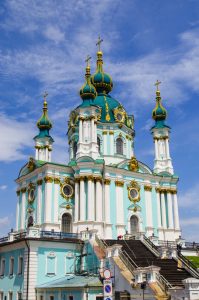
Eastern Europe: An overview
The definition of Eastern Europe can be a bit contentious. I moved to Poland a few years ago and have used this country as a base on and off ever since. While the folks back in England and Australia would tend to see Poland as ‘Eastern Europe,’ here locals often insist on ‘Central Europe,’ and looking at a map, they may have a point. However for the purposes of this article, Poland makes the cut. We’re also going to look at Czechia and Slovakia, Hungary, Romania, former Yugoslavia, the Baltics and Ukraine.
To varying degrees, all the countries described fell under the influence of the Soviet Union after the second world war. While most have now transformed into Western leaning democracies, the brutal memory of communism still rings in the ears. Poland and Hungary are sliding ominously towards the far right, and Ukraine’s recent attempt to lurch Westward politically was met with Russian tanks crossing the border into Crimea. While ‘history’ may feel like a thing of the past in London and Rome, here it is still an unfolding story.
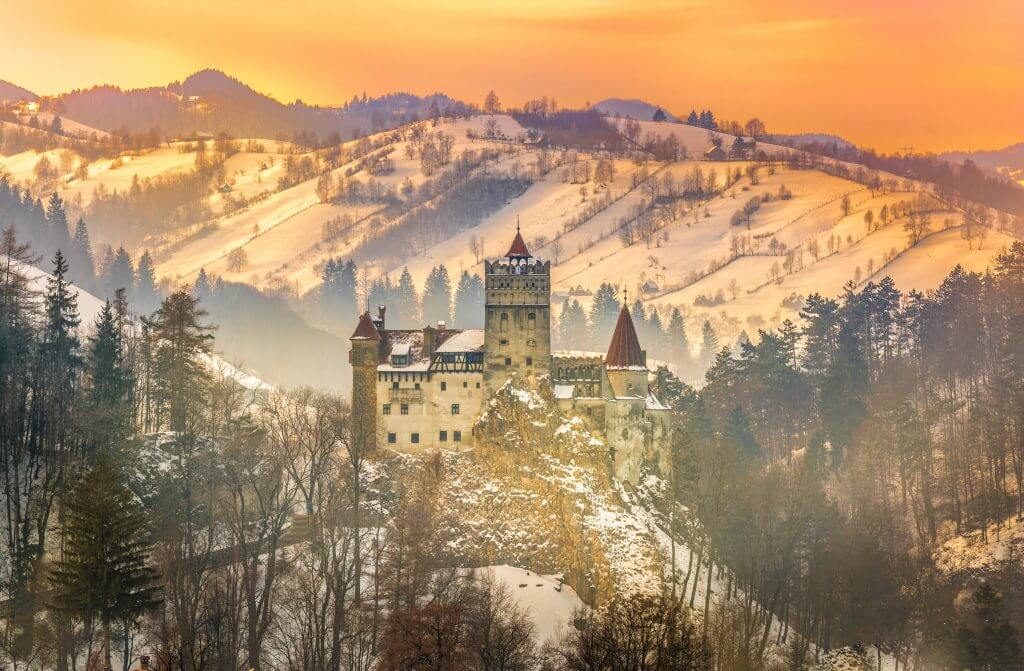
Eastern Europe highlights: A sample itinerary
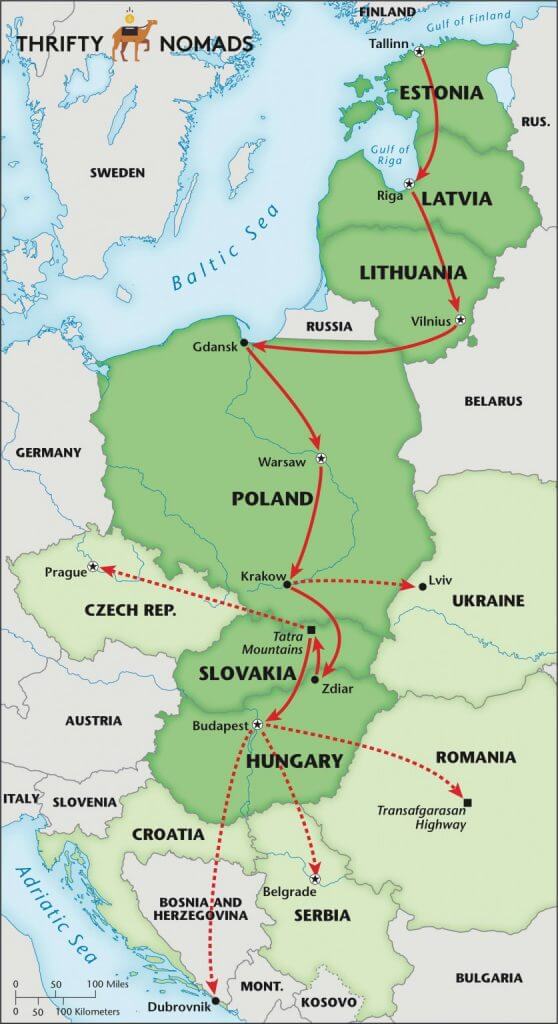
Once you spend a bit of time staring at a map, you’ll realize there’s an awful LOT of Eastern Europe. Not just in the number of countries, but in the size. Ukraine alone could comfortably fit in several Western European nations. Below I’ll sketch a rough itinerary that involves heading due south right from the Baltics into Bulgaria. You can either complete this itinerary fully (as pictured above) – requiring 5-6 weeks – or just do sections of it.
A few things to note is that while most of these countries are in both the European Union and the Schengen Visa Free Zone, there are exceptions – notably Serbia and Ukraine. So be sure to check your visa requirements before venturing out . Also, the below is one hell of a trip and designed to give you a sense of what is available, rather than a definitive prescription – you should, of course, pick and choose. If you wanna head straight to Prague to sample the famed (and cheap) Czech beer before braving the winter streets of Vilnius, then I can’t say I blame you!
The Baltics: Estonia, Latvia, Lithuania

So-named because of their position on the Baltic sea, these three small nations are often overlooked by Western travelers. But they shouldn’t be. Let’s have a look at each in turn:
Highlight : Tallinn. With a population of just 1.3 million, Estonia rapidly reinvented itself after the collapse of communism in 1989, and now is counted among one of the most technologically developed nations in the world. It offers digital citizenship to locals and expats, and is considered a digital nomad hub. If Eastern Europe in your mind is crumbling buildings and long queues for groceries, then start with Estonia to dispel those misconceptions. Get to know it like a local with a Welcome to Tallinn walking tour.
Highlight : Riga. The historic center of Riga is a Unesco world heritage site, and the beautifully preserved/restored town square is a great precursor of what you’re to expect as you explore countries like Poland and Czechia further south. Take in the most popular sights with a scenic canal boat cruise .
Highlight : Vilnius. Like Riga, the historic center of Vilnius is a Unesco World Heritage site, best explored with a local guide . Once unified with Poland, Vilnius boasts a proud literary heritage and a rich Jewish history – it was once referred to as the “Jerusalem of Lithuania.”
Poland: Gdansk, Warsaw & Krakow
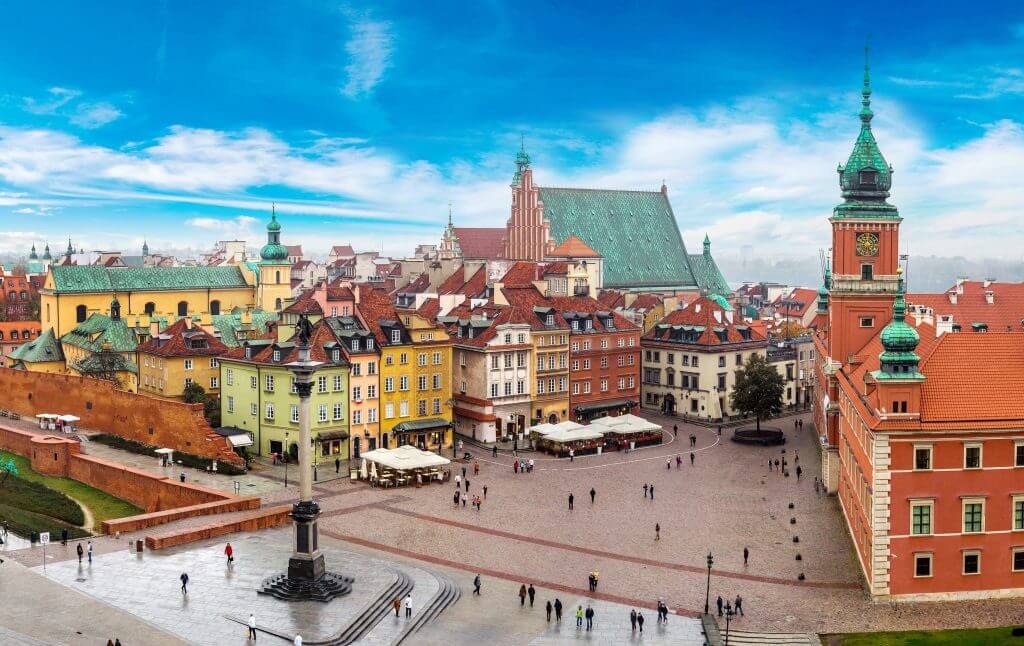
One of the strongest economies to emerge from the collapse of the Eastern Bloc, Poland’s vibrant present mingles with a history that stretches back over 1000 years, through the glory days of the Poland-Lithuania commonwealth right through to the trauma suffered at the hands of the Nazis and Soviets during the 20th century. I came to this country for a week in 2015, and ended up staying on and off for three years!
Spend your final days with the Baltic Sea at Gdansk, formerly the predominantly German free city of Danzig. Walk along the old docks, or admire the city from a historic boat cruise , and remember the Solidarity movement that, led by Lech Walesa, resulted in the overthrow of communism first in Poland and then, arguably, across the rest of Europe. One of Poland’s most picturesque cities, a late night stroll through the old town and by the riverside will be a treasured memory.
The sight of unimaginable horror during the Second World War as the Soviet Tanks waited for the Nazis to eliminate all Polish resistance before sweeping in and planting the Hammer and Sickle flag over the ruined city, Warsaw’s revival is the stuff of legend. Under the shadow of the imposing Palace of Culture, the historic old town has been painstakingly restored. Visit the POLIN Jewish Museum , and experience some of the finest dining Eastern Europe has to offer among the cities many chic restaurants (Hint: Try Cafe Kafka for lunch).
Poland’s biggest tourist draw, and for good reason. The medieval old square is haunting under the moonlight, as rows of horses and cart stand to attention, ready to take the next visitor for a ride. Outside the city you can venture deep under the earth to explore the Salt Mines, and make a painful, but necessary visit to the Auschwitz Museum .
Detour: Lviv, Ukraine
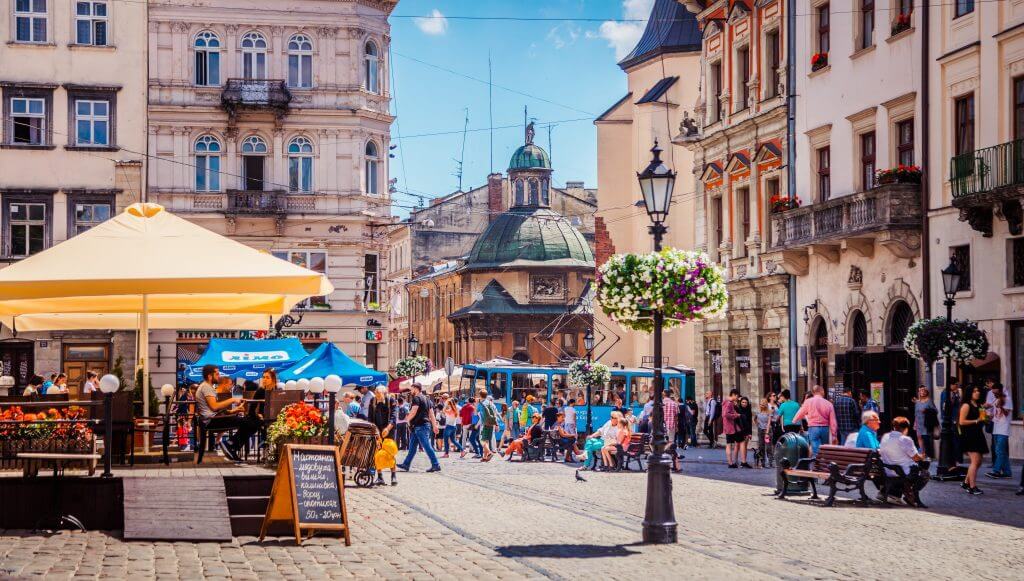
Take the night train from Krakow due east to experience something truly off the beaten track. Lviv is a great way to dip your toes into the gargantuan country of Ukraine, and give yourself a thrilling few days. Historically Polish and once known by the Hapsburg name, Lemberg, Lviv boasts one of the most adventurous nightlife scenes you’ll ever encounter. From a bar named Masoch (we’ll let you guess the theme) to multi story clubs, hidden restaurants accessible only with a password, rooftop bars where you sit in broken down cars, and ancient crypts beneath the city , a weekend in Lviv will give you enough stories to make your friends jealous for years.
Slovakia: Zdiar, The Tatra Mountains

Back on the road from Poland, we cross into Slovakia. The nation’s capital, Bratislava , is a rougher, smaller version of Prague (covered below) which rewards a fun weekend. But the Tatra mountains that stretch across the Polish border offer one of Slovakia’s most intoxicating delights.
Pro tip: Hit the Polish town of Zakopane just a few clicks from the border for a taste of the local Oscypek mountain cheese, before taking a minibus to the border, walking into Slovakia, and hopping another quick bus to Zdiar, a ski resort town. Stay in the Ginger Monkey Hostel for cosy diggs and to meet fellow travelers.
Detour: Prague, Czechia
It’s a bit out of the way and means a slight tack westward, but Prague, the dynamic capital of Czechia (formerly the Czech Republic, formerly formerly Czechoslovakia) is worth making the trip. Climb the steep hill to Prague Castle , and see the spires and winding streets of the city at your feet. Jostle with buskers on Charles Bridge before settling into one of the cities many cavernous beer halls for a sip (or several) of the unbelievably refreshing locals brews that flow like water and cost half as much!
Hungary: Budapest

Hungary’s mighty capital is growing in stature as a major Eastern European destination, rivaling Prague and Krakow. Divided into two halves, hilly historical Buda and flat, gritty Pest, the glory of the Austro-Hungarian empire, the horrors of the Arrow Cross Fascist regime and communist oppression, and the contemporary hipster revival of the city can all be felt after just a few hours in town. Climb up to the exquisite Royal Palace, drink the night away in a ruin bar (start with the gigantic Szimpla), take in the stunning architecture from a river cruise , soothe your soul in a thermal bath, and burn your taste buds with spicy paprika filled Goulash. For more tips on activities to do in Budapest, check our other guide here .
From here to Sofia you’ll most likely have to choose one of the below routes, which, like different prongs on a fork, all forge their own path to Bulgaria.
Option #1: Serbia: Belgrade
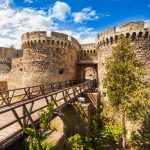
Step out of the European Union and into a scarier, starker version of history in Belgrade. The winding, cobbled streets are beautiful, the old ladies haggle over the price of cucumbers on the street markets, and the clubs rage until dawn. But as with much of Europe, there’s a darker side to history here. You’ll see at the ancient fortifications, in the city’s museums, and in the bullet holes still visible on some older buildings. Take in the top attractions from a sightseeing cruise .
Option #2: Romania: Transfagarasan Highway

Bucharest is a rough and ready capital that will still provide plenty to distract and entertain you. But for me, Romania is a country of rolling green hills, famers on horseback, dark grey clouds and mercifully warm temperatures. Considered one of the best road trips in the world, rent a car and take it carefully over the Transafgarasan Highway (or sit back and relax with a day tour ) for incredible views and, of course, a climb up the steep stairs to Vlad the Impaler’s vertiginous castle (Bran Castle).
Option #3: Croatia: Dubrovnik
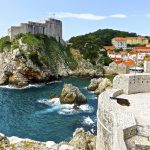
Go ahead, be a tourist, give yourself a treat. Famous as the filming location for much of Game of Thrones (with you can visit on dedicated tours ), this seaside city will be sure to rack up the Instagram likes. Don’t want to get caught up in the tourist crowd? Croatia’s warm and picturesque Mediterranean coast can also be experienced from cities like Split, which also boast fresh seafood and, of course, cheap local beer sold in gigantic plastic bottles. Živjeli!
Bulgaria: Sofia
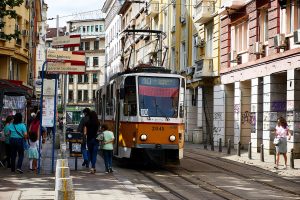
How much does a trip to Eastern Europe cost?
The low cost of living in Eastern Europe constantly amazes me. To take a sample at random, I am writing this article from a cafe in Poznan, Poland. A large local craft beer would cost $2 USD, a latte about the same, and a delicious, high quality hot meal about $6-8. This is typical of Eastern Europe, with countries like Ukraine, Serbia and Bulgaria offering even cheaper rates. The major tourist towns like Prague and Budapest can sting you on accomodation if you don’t book in advance, and always be wary of nightclubs and ‘bars of ill repute’ where scams are known.
Traveling Eastern Europe can realistically be done for as little as $30-50 USD / day , including accomodation, food, beer, transport and attractions.
How long do you need to explore Eastern Europe?
The above itinerary – done properly – would require about 5-6 weeks, but you can of course take as long or as little as you like. Distances can be large and outdated transport infrastructure can mean uncomfortable journeys (hold tight to your wallet on the cheap but dusty overnight train from Belgrade to Budapest. When I did this journey in 2015, I paid just 10 Euro for the ticket including sleeper berth!).

Getting around
While rail passes are highly recommended for travel in Western Europe, in the East they are less necessary. Train travel – even when booked on the day – is outrageously cheap, with $20 being more than enough for almost any internal journey you’re likely to make. For international journeys, consider overnight buses and trains to save on a night’s accommodation. Book in advance if going between major cities – for example, the overnight train from Warsaw to Budapest can get expensive (100 euro +) if booked at the last minute, but if booked in advance, will be a mere fraction of this.
- For trains, try Bahn.de
- For buses, try FlixBus
- For flights, try WizzAir
Getting there
Most cities listed above can easily be accessed with cheap Ryanair flights from London and across Western Europe. Check Skyscanner and select “Whole Month” to visualize the cheapest dates. If traveling from afar, cities like Berlin and Munich in Germany can make convenient hubs. I’ve also found Prague to be a surprisingly affordable final destination when flying all the way from Australia / New Zealand. If coming from Scandinavia, Gdansk in Poland can sometimes be reached for as little as 15 euro.
Where to stay
Cities like Krakow and Budapest boast a thriving youth hostel culture, ideal if you want to meet other travelers and find drinking buddies for the evening. In Budapest I give my warmest recommendation to Carpe Noctem – I practically moved in. Elsewhere, Booking.com can offer cheap short term rentals on apartments, while AirBNB is a slightly more expensive, but more comfortable option for doing the same. Although you may not even consider doing such a thing in Paris or London, don’t be afraid to be bold and check TripAdvisor for a nice hotel – I’ve found 4 or 5 star luxury for under $50 a night across Eastern Europe.
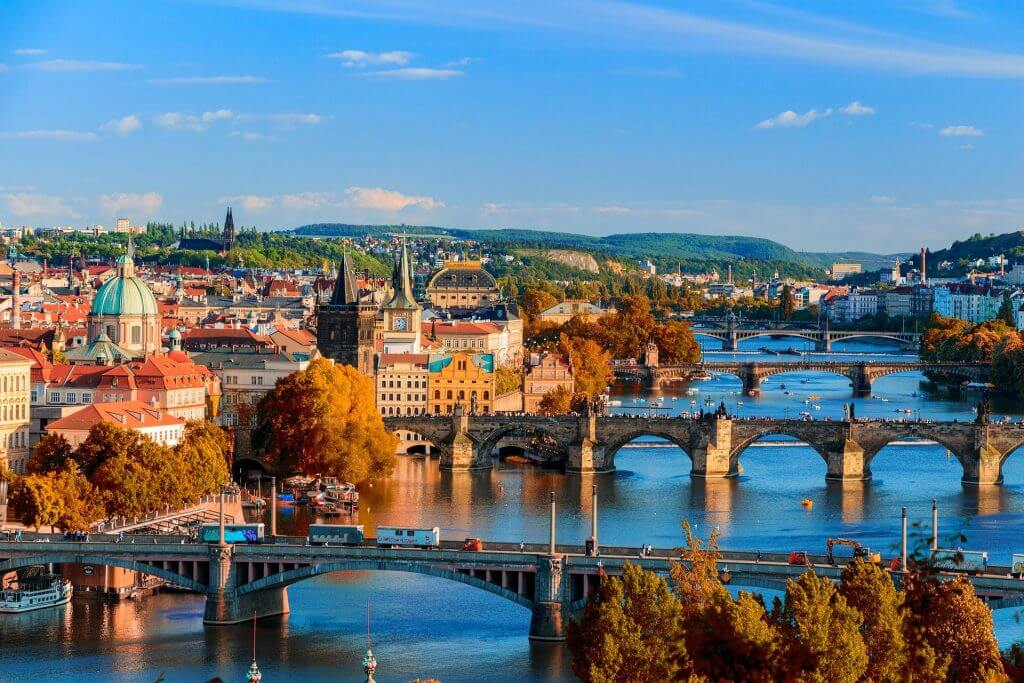
It’s no secret: Eastern Europe gets cold, with subzero temperatures not unheard of from December through to March. This has its compensations – nothing is more beautiful than a medieval town center blanketed in white snow. Christmas means Christmas markets and hot spiced wine served out of large cauldrons, but it’s also when everyone has gone home with their families. My favorite time to travel is September, when it’s still hot, but the main tourist crowds have wrapped up their summer holidays, leaving the streets clear to explore.
Food and drink
Let’s start with drink! Beer is literally cheaper than bottled water in most countries described above. Look for the local brews, but be careful – in this part of the world, beer packs a punch, and 9% alcohol volume brews are not uncommon. Vodka is available in millions of different flavors – try Zubrowka in Poland, and local fruit spirits such as the potent Sliwowica (plum spirit) are easy to find. In Hungary, try sweet and rich Tokaj wine. Eastern European cuisine tends to be heavy – food to soak up the vodka and prepare you for a long winter. Pierogi (polish dumplings) make for a hearty meal, as does Hungary’s goulash, Prague’s many manifestations of pork, and Lithuania’s rich, dark rye bread. Look out for Milk Bars in Poland for cheap meals shoulder to shoulder with students and vagabonds. Supermarket chains like Lidl and Tesco can provide you cheap groceries basically everywhere you will go.

Every city you visit will have a museum testifying to ancient glories and more recent horrors. Budapest boasts thermal baths, Poland has its salt mines, Slovakia has mountains and Prague – well, Prague has beer and a lot more besides, and pretty much everywhere has a fair share of castles! But the best thing to do is simply to wander, walk the cobbled streets with your eyes open, look at the people, and try and learn a few snatches of the local languages. Walking tours are available in most major cities – see Viator for what’s available in your destination.
The Thrifty Gist
- Eastern Europe can be challenging, but it boasts a wealth of attractions and an unbelievably low cost of living, making it a dream destination for the adventurous budget traveler
- Highlights include the Baltic countries, Poland, Lviv, The Tatras Mountains, Prague, Budapest, Romania, Belgrade, Dubrovnik and Sofia
- Travel by overnight train or bus to save on a night’s accommodation. With the exception of a few major routes, fares are constantly low
- Germany next door can serve as an easy hub to access Eastern Europe, but cheap flights with companies like WizzAir can get you pretty much anywhere
- Stay in hostels to meet travelers and for a party vibe, use Booking.com and AirBNB for comfortable private accommodation, and search TripAdvisor for great deals of high quality hotels
- December is beautiful, but cold, and with a lot of places likely to be closed. September offers warm weather, but not too many tourists
- Drink beer, brave the local flavored vodka, and eat the hearty rich meals with a focus on meat, potatoes and bread. Yes, you’ll likely come home a few kilos heavier!
- Eastern Europe is rich in history and has seen the conflicts of several empires. Enjoy the historic old town squares, castles, and museums, but mostly just walk the fascinating streets and listen to the stories of the people you encounter.
I like that you talked about museums in every city where we will see the ancient glories and horrors of their history. I would love to visit museums when my husband and I book a European travel tour for next year. It will be for my birthday to finally push through with my dream trip, and I can definitely enjoy the visit if I can learn about their history as well.
I love how detailed your blog is. Very helpful and informative. 🙂 So, I recently visited Krakow and was blown away by how charming and picturesque it is. The old town is just so charming and there’s a really lively nightlife scene. Overall, I had a really amazing time in Krakow and would definitely recommend it to others.
Thanks Jane—couldn’t agree more, Krakow is amazing!
“Sofia is most notable for its clash of influences, the Cyrillic writing system and Orthodox religion from Russia…” That is WRONG. Bulgaria created the Cyrillic writing system and Russia adopted it… Please fix that 🙂
Leave a Reply Cancel reply
Your email address will not be published. Required fields are marked *

The Ultimate 2-Week Eastern Europe Itinerary: 6 Great Routes
Last Updated on January 3, 2024
by Maggie Turansky
Disclaimer: This article contains affiliate links. That means if you click a link and make a purchase, we may make a small commission. As an Amazon Associate we earn from qualifying purchases. For more information, see our privacy policy.

Planning the perfect Eastern Europe itinerary when you only have a finite number of days or weeks to play around with can be a head-spinning and frustrating undertaking. It’s only until you sit down and pull out a map (or, more realistically, open up Google Maps) that you realise how vast this region of the continent is and how much there really is to see.
Do you want to head to the Central European favourites like Budapest or Prague ? Do you venture up north and explore the charms of the Baltic states? Or do you head southeast and devote your time to one country like Romania or Bulgaria?
So if you’re in the process of planning a trip to Eastern Europe and are a bit stuck on what the optimal route is for you, then look no further.
Table of Contents
Which countries are in Eastern Europe?
For those who haven’t travelled extensively around the region, it may not seem like the term “Eastern Europe” is even that loaded, however, you will soon learn that it is not so much a term that defines a region and can be far more political and cultural than meets the eyes.
Many people will jump to thinking that the term “Eastern Europe” refers to the Warsaw Pact countries or the countries that were under Communist rule from WWII up until the early 1990s. This typically includes the countries in former Yugoslavia and anything east of Germany or Austria (excluding Greece and Turkey).
Where things can get complicated is that many residents of certain countries don’t like to be referred to as Eastern European. For instance, the countries of Poland, Czech Republic, Hungary, Slovakia and Slovenia often would prefer to be referred to as Central Europe – and geographically, that is where they are.
And the countries of Croatia, Serbia, Bosnia & Herzegovina, Montenegro, Albania, North Macedonia and Bulgaria are best referred to as the Balkans. And Estonia, Latvia and Lithuania? They’re the Baltics.

So which countries are actually in Eastern Europe? It’s still complicated, however, you’re generally safe to assume that countries like Romania, Ukraine, Moldova, Belarus and Russia are all in Eastern Europe.
I would also go so far as to consider the countries of Georgia, Armenia and even Azerbaijan all the way in the South Caucasus as a part of Eastern Europe. I say this because, although geographically they may rest in what is technically Asia, culturally they are far more European.
So, as you can see, Eastern Europe is generally quite a vague term that encompasses a number of vastly different regions and nations. However, it is also one of our absolute favourite regions to travel in the entire world and visiting anywhere in this vast corner of Europe is sure to spark your wanderlust.

How to get around Eastern Europe
Depending on which area of Eastern Europe you intend to travel to, the best way to get around will vary. However, what’s good is that, especially if you only plan to visit major cities, it’s very easy to get around most areas relying only on the train or bus. Just what form of public transit will depend on where you are.
If you plan to do the classic “Eastern Europe” itinerary (ie Central Europe) and hit top cities like Budapest, Prague, or Krakow, then you can easily get around while relying on the train.
Train connections in Central Europe are frequent, reliable and relatively affordable — especially if booked in advance through platforms like Omio. You can click here to view schedules.
It can be popular to plan to use night trains to save on accommodation or time in transit, but keep in mind that these can book out quite early in high seasons and they can be quite expensive, depending on where you’d like to go.
If you want to save some money, you will find that the bus is a cheaper option and offers just as many routes. Companies like FlixBus offer numerous routes between cities at affordable price and buses are generally fairly comfortable and reliable. There are also overnight bus routes, but this is quite a tiring and uncomfortable way to travel.
If you happen to be travelling in the Balkans or Baltics, you are going to have to forget about any visions you had about taking the train. Rail routes are few and far between and where they may exist, they will be painfully slow, exceptionally outdated, and rather uncomfortable.
The vast majority of the Balkans and Baltics aren’t actually on a rail network, anyhow, so your best bet is going to be taking the bus if you’re relying on public transit.

In the Baltics, there is a wonderful bus company called Lux Express that is arguably going to be the nicest bus that you will ever encounter. They are comfortable, have wifi and entertainment systems and serve most major routes throughout the Baltics and even into Poland and Russia. You can book bus tickets for the Baltics here.
In the Balkans, FlixBus operates in some countries, but there are far more bus companies available and finding out the schedules can be tricky depending on where you are. Your best bet is to check out the bus timetables at the station when you arrive so you have an idea because information on the internet may be incomplete or incorrect.
If you don’t want to rely on public transit, then you can always rent a car when travelling in Eastern Europe. This will allow you to have more flexibility with your itinerary and not be at the mercy of erratic timetables and long bus or train journeys.
However, please make sure to double-check that the rental company will allow you to cross borders and that the car is provided with the adequate insurance in order to do this.
The rental company should handle this and it isn’t the consumer’s responsibility, but do make sure that you are properly equipped before starting your Eastern Europe travel itinerary.
If you want to rent a car while travelling in Eastern Europe, we recommend using RentalCars.com to find the best deals on a car hire.
Finally, it’s worth making sure you have travel insurance for your Eastern Europe trip. If you’re travelling on a budget and are only after travel medical insurance it’s worth checking out SafetyWing’s nomad insurance.
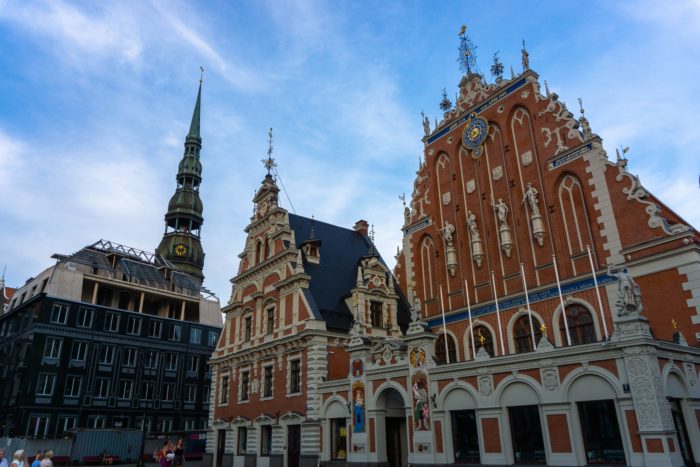
How long to spend in Eastern Europe
So how many days or weeks should you dedicate to your itinerary through Eastern Europe? With the region encompassing so many countries and sub-regions, it can feel like there is never enough time to see everything and deciding the ideal trip length can seem incredibly overwhelming.
The first thing that you need to understand is that it is impossible to see everything in a limited period of time and if you try to cram in too much, you are going to spend the vast majority of your time in transit between cities and destinations rather than actually enjoying and exploring the destination itself.
We always encourage slow travel and that doesn’t necessarily mean that you need to take numerous weeks off in order to travel to Eastern Europe, it just means that you should absolutely spend a bit longer in each destination that you visit. So, if you only have time for a one-week itinerary, then we would suggest limiting your trip to just two cities.

If you want to see a good portion of the region you’ve decided to visit while still not taking a tonne of time off work or away from home, then we think that planning for two weeks is the ideal amount of time. Within a fortnight, you can get a good taste of whichever region you plan to visit and really experience some diverse and dynamic destinations.
Obviously, if you have longer and are looking to spend 3 weeks in Eastern Europe, then you can very much find a multitude of ways that you could fill your time.
3 weeks really is optimal to begin to dig deeper and get a bit off the beaten path and to see some cities and towns away from the major capitals. This will give you a broader idea of the general culture of whichever country or region you are visiting and help you gain a better understanding of the area.
There are always options if you have longer than 2 or 3 weeks in Eastern Europe as there are a myriad of regions and countries that you could visit.
You also could take the opportunity to base yourself for a longer period of time in a particular city and explore more of the surrounding area via day trips and even venture off the beaten tourist path in the city itself.
The possibilities are endless in Eastern Europe no matter how long you’re able to spend, just make sure that you can do each destination justice by spending enough time there.
For the purposes of this article, all of these itineraries are meant to be for about 2 weeks. If you’re looking for a one-week or 10-day Eastern Europe itinerary, then just take away one or two destinations mentioned as they interest you. Again, it’s best to keep in mind that it is impossible to pack everything in just a short time period.
Second, as mentioned earlier, there are lots of different regions that encompass greater Eastern Europe and we’ve put together itineraries for each of these.
If you want more information once you’ve decided where it is that you want to in Eastern Europe, we have dedicated itineraries for Central Europe , the Balkans , the Baltics , and even the Caucasus if you are feeling intrepid.

Central Europe Routes
Central Europe is what most people are looking for when they think to plan an itinerary for Eastern Europe. Filled with some of the most beautiful cities in all of Europe and packed with interesting culture and fascinating history, this region is sure to delight all those who venture there.
Classic Central Europe Route
This two-week itinerary will take you past some of the most popular and beautiful places to visit in what many believe to be “Eastern Europe”. This route starts in Budapest and ends in Prague, but you can easily reverse it if it makes the most sense to you.
Budapest – The capital of Hungary is an excellent place to start any trip to Eastern Europe. It is something of the gateway to Eastern Europe and a great jumping-off point to visiting Central Europe, the Balkans, or Romania.
Budapest is one of the most beautiful and dynamic cities in all of Europe and you’re sure to fall in love with it instantly with it’s incredibly picturesque skyline set along the mighty Danube River. Plan to spend about 4-5 days in Budapest to really do the city justice before moving onto your next destination.
Vienna – Though not technically Eastern Europe, Vienna is an essential addition to an itinerary of this sort. Austria’s grand capital is a lovely place to explore for about 3-4 days and it is highly recommended that you take a day trip to the nearby capital of Slovakia, Bratislava .
Brno/Olomouc – Spend 2 days exploring one of Czechia’s other cities and while Olomouc is a personal favourite of ours, Brno is a more direct stop and also offers another great perspective of the Czech Republic beyond the capital city.
Prague – No itinerary of this sort would be complete without including the Czech Republic’s inimitable capital of Prague . The city is very popular, however, there are lots of places to visit within it that are off the beaten path. Plan to spend about 3-4 days in the city itself and then give yourself more time to go on a day trip or two.
Have More Time? If you have a bit more time to dedicate to this itinerary, please consider exploring more the Czech Republic . There is so much to see in this incredible country beyond Prague – and very few international visitors tend to dig deeper and explore the country.
If you want to get out in nature and see some of the countryside, then head to the Jeseniky Mountains or Bohemian Switzerland National Park, or if you want to experience some more Czech cities, it can be worth it to head to Brno or even industrial Ostrava . For smaller towns and cities, head to Karlovy Vary , Cesky Krumlov or Pilsen.

Alternative Central European Route
If you’re still after a Central European route but want to visit more countries, consider spending a bit of time in Poland rather than Czechia.
Budapest – Again, start your itinerary in Budapest and plan to spend 4 days exploring this incredibly beautiful city. There is so much to see and do in Budapest that you’re sure not to be bored.
Vienna – From Budapest, head onto Vienna for 3 days and make sure to do a day trip to Bratislava in order to see another amazing Central European city.
Prague – Plan to spend at least 3 nights and two full days exploring Prague, taking in the city’s top sites and learning about its vast and complex history. Also, Prague has some of the best beer in the world at some incredibly affordable prices!
Wroclaw – From Prague, head over to spend a day in the charming city of Wroclaw , Poland. This lesser-visited city is dotted with interesting sites to see and full of endearing quirks — including a myriad of little dwarf statues that can be spotted throughout the city!
Krakow – End your itinerary in Poland’s second-largest city of Krakow . This city is filled with history, both heartbreaking and fascinating, and it is worth taking the time to explore that along with it’s beautiful Old Town.
It is also possible to take a day trip to the Wieliczka Salt Mine or to Auschwitz-Birkenau Concentration Camp Museum. You could even take a day trip to the Tatra Mountains, if that suits your fancy.
Have More Time? If you have more time to devote to this itinerary, consider exploring more of Poland, including heading to the capital of Warsaw or to some smaller cities like Poznan or Gdansk , where you may find fewer crowds than in cities like Krakow and, in the latter city, even enjoy a beautiful Baltic beach. You could also combine this itinerary easily with a route through the Baltic countries if you have around 4-5 weeks to play around with.

Baltics Routes
The Baltics are one of Europe’s most underrated regions but also happen to contain some of the most charming spots in all of Eastern Europe. Filled with fairy-tale-like cities, incredible cuisine and fascinating history, this is how you should spend two weeks in the Baltics.
Classic Baltic Route
If you’re interested in dipping your toe into the Baltic countries and just want to get a feel, then this two-week route through the capitals is a great option for you.
Warsaw – Poland’s capital is one of the easiest places to begin this route. Plan to spend about 2 days exploring this historic city while taking in its refurbished Old Town and visiting some of the great museums.
Vilnius – The capital of Lithuania has been subjected to some great marketing campaigns, however, it still doesn’t get nearly the amount of visitors that it deserves.
Home to one of Europe’s largest old towns, a great cafe culture, and its own “independent republic,” plan to spend about 3 days in Vilnius to get the most out of the city and maybe take a day trip.
Riga – Next, head up to Latvia’s cosmopolitan capital of Riga. There is so much that Riga has to offer, but it is a real joy for architecture geeks — boasting one of the best collections of Art Nouveau architecture in Europe. Riga also has a lovely Old Town, great restaurants, and an incredible Central Market. Plan to spend 2-3 days in Riga to get the most out of the city.
Tallinn – The Estonian capital may well be the most beautiful city in the entirety of Europe (move over Paris or Seville!) however, very few visitors give it the time it deserves.
The medieval old town packs a significant amount of charm, but there is so much more to see in Tallinn that it’s worth spending at least 3 or 4 days to really do Estonia’s capital justice.

Alternative Baltics Route
If you are looking for an itinerary through the Baltics that allows you to really dig deep into the region, then this route commencing in Vilnius and ending in Tallinn is a great option for you.
Vilnius – Start your trip in Lithuania’s capital and plan to spend 2-3 days here exploring the top sites, going for a day trip, and enjoying the laid-back nature before moving on.
Kaunas – Lithuania’s second-largest city can be seen in about one full day, but it is still very much worth exploring. Kaunas boasts a lovely old town, one of Europe’s longest pedestrian streets, fantastic street art, fascinating museums, and an imposing medieval castle making it a can’t-miss stop in Lithuania.
Riga – Now it’s time to visit Latvia’s beautiful capital city. Take the time to enjoy its cosmopolitan energy, enjoy the cuisine, and maybe take a day trip to the seaside town of Jurmala located just outside of the city.
Tartu – Estonia’s second-largest city is far too often ignored by visitors to the Baltic, but it really shouldn’t. There are lots of things to do in Tartu that can easily occupy one or two full days including exploring the old town, visiting museums, enjoying its art scene, and indulging in some of the city’s fantastic restaurants.
Tallinn – End your itinerary in Tallinn, trying to spend at least three days enjoying this incredible city. Tallinn is so cool and dynamic and has so many layers that you are sure to be charmed and itching to explore more.
Have More Time? If you have more time to dedicate to the Baltics, there are so many more places that you could visit. Consider heading to the coast of Lithuania and exploring the city of Klaipeda and the beautiful Curonian Spit . Or, head to the seaside town of Liepaja, Latvia and take in its laid-back charms.
Alternatively, you could head to the Estonian seaside in cities like Parnu or Haapsalu or, even more offbeat, head to some of its countless islands – like peaceful Saaremaa . And though it’s definitely not Eastern Europe, many people like to continue onto Finland and the Nordics from Tallinn.
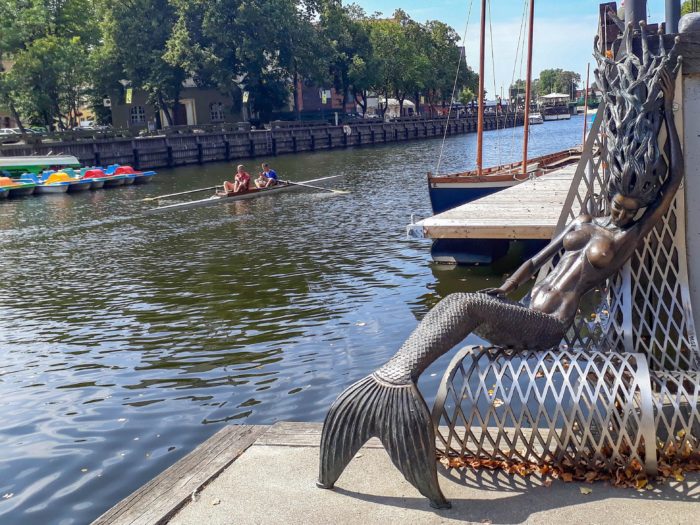
Southeastern Europe Route
If you would rather head southeast when planning your Eastern Europe travel itinerary, then these are the routes for you. Heading into the Balkans is a great choice if you want to experience a number of different cultures and learn about a different history than you would in other areas of Eastern Europe.
Central Balkans Route
This itinerary begins in Budapest and takes you through some south-central European capitals.
Budapest – There are few cities better to commence an Eastern European route in than Budapest. For this 2-week itinerary, plan to spend 4-5 days in the Hungarian capital.
Belgrade – Belgrade is a gritty, lively, energetic and dynamic city that is just so cool it is sure to take you by surprise. Known for its incredible nightlife, Belgrade is also packed with history, culture and interesting things to do that you could easily occupy yourself for the recommended 3 days in Serbia’s capital .
Zagreb – Croatia’s oft-overlooked capital is normally put on the back burner for those more eager to head to the country’s coast, however, it is worth spending a day or two exploring . There are also numerous great day trip opportunities — please try to get to Plitvice Lakes, it’s breathtakingly beautiful — from Zagreb, as well.
Ljubljana – End this itinerary for Eastern Europe in Slovenia’s capital of Ljubljana. This beautiful city is so incredibly charming that it is a strong contender for the most beautiful city in Eastern Europe (Tallinn has some competition).
Plan to spend 2 or 3 days in Ljubljana , giving yourself longer if you’re interested in going for a day trip to Lake Bled , Lake Bohinj , lovely Maribor or even the seaside village of Piran.

Classic Balkans Route
If you’re after a more classic Balkans route for your trip to Eastern Europe but only have two weeks to do it in, then plan to begin your trip in Belgrade. The central Balkans are fairly off the beaten path compared to the rest of the places on this list, however, they pack so much that it’s worth exploring.
Belgrade – Begin your trip in Belgrade, Serbia taking in all of the eclectic sites the city has to offer, experiencing its inimitable energy and learning about its vast and complex history – there are tons of walking tours here where you can learn all about this city. 3-4 days in Belgrade should be sufficient, but one can always spend more.
Sarajevo – Next, head to Bosnia & Herzegovina’s incredible capital of Sarajevo. One of the most fascinating cities to visit in this part of the world, Sarajevo has an absolutely heartbreak history that is very much worth learning about in a number of the city’s excellent museums.
Take the time to learn about its not-so-modern history, as well, enjoy the historic city centre, and take its east-meets-west vibes at this cultural crossroads. You need about 2-3 days in Sarajevo to really do the city justice.
Mostar – From Sarajevo, head south to the beautiful city of Mostar. Far too often visited only as a day trip, Mostar is best experienced over two days to really learn about this city and its complex history.
Kotor – To round out this two-week itinerary, head to the Montenegrin port city of Kotor. This city is quite popular amongst tourists — especially as a cruise ship port — but it’s definitely worth spending 2-3 full days here to get to know the city and take some day trips to the surrounding area.

Have More Time? If you have more time to spend in the Balkans, your opportunities really are endless — one could easily spend months on end in this region alone and still feel as if they’ve only scratched the surface.
From Kotor, one could easily head into Albania, Kosovo, North Macedonia and onto Greece, if you want to stay further south. Or, you could head west of Kotor to Dubrovnik and explore more of Croatia.
Alternatively, you could continue on east into Bulgaria, which deserves at least a week or two to explore on its own. Planning a Bulgaria itinerary on top of this Eastern European route is a fantastic idea.
If you end up in Bulgaria and have a lot of time to play around with, then it would also make sense to head into Romania.
Again, Romania is a massive country and visitor could easily dedicate two full weeks solely to this country – take time to see sites like Bran Castle, explore the vibrant capital of Bucharest and wander through the towns and cities in Transylvania.
Booking Accommodation in Eastern Europe
Once you’ve figured out your itinerary and where you want to go in Eastern Europe, the next step is booking accommodation. Luckily, there are so many options out there to book the best places to stay that cater to all tastes and budgets.
If you’re planning on backpacking in Eastern Europe, are on a tight budget, or are just looking for some great social opportunities, then hostels are going to be your best bet. We like to search for and book hostels online through Hostelworld , which is excellent to find the best hostels and keep all of your bookings in place.
If you’re looking for a broad array of accommodation options at great prices, then you can’t go wrong with Booking.com . This is our platform of choice when we are booking traditional hotels and B&Bs and even, sometimes, whole apartments!
And finally, if you’re looking for a private apartment rental or would like to save some money while staying in a private room in a local’s home, we recommend booking your stay through Airbnb. There are countless properties available on the platform all over Eastern Europe that will ensure you have a unique and authentic place to rest your head.

There are countless options when planning the ultimate Eastern Europe itinerary and it can seem overwhelming when confronted with all of them to figure out where to go. However, this region has so much to offer that no matter where in it you end up visit, you’re sure to have an incredible time!
Are you visiting Eastern Europe? Have any questions? Let us know in the comments!

Related Posts:

The Perfect 1, 2 or 3 Days in Bucharest Itinerary

One Day in Brasov Itinerary: A Day Trip from Bucharest

The Perfect 5 to 7 Days in Romania Itinerary

About Maggie Turansky
Maggie is a co-founder and writer for The World Was Here First. Originally from the US, she has lived in five different countries and has travelled to dozens more, both solo and with her partner, Michael. She particularly loves exploring Spain and spending time in the Caucasus and the Baltics. Read more about Maggie
Hi, woderful detailing of East Europe tours. Can you please help me to figure out my trip with inclusion of Budapest, Vienna, Prague, Croatia.we wish to travel by rental car. We are planning to visit these places in November 2023 , a trip for 10 days. please suggest. Dr, Neera Mittal
I sincerely hope that in 2022, I shall be able to visit eastern Europe which I have been planning for last three years! Your writings are very informative and absorbing. Please continue your excellent efforts of writing such pieces. Thanks a lot. PS: Add some information also about expenses of different categories, if possible.
Thanks for your comment and I hope that you’re able to go on your trip this year!
Amazing info, thanks. I will put together a trip for a month. I plan to surprise my daughter in Prague where she goes to Uni. Appreciate all your hard work and easy reading style. Stay healthy and happy! <3
Thanks so much for your comment and kind words, Lynn! Hope that you and your daughter have a great trip 🙂
Hello, this was a great explanation of what eastern europe really is, and some excellent itineraries for central europe, baltics, and balkans. But after you defined eastern europe to include Romania, Ukraine, Moldova, Belarus and Russia, you left out an itinerary for that very thing. Do you have such a guide? Thank you.
Hi Kyle, unfortunately, we don’t have a lot of information about those countries (yet!). All of those places are definitely on our list though so hoping to change that in the future
Leave a Comment Cancel reply
Protect Your Trip »
Best eastern europe travel spots.
Eastern European countries are often overlooked in favor of popular Western European destinations, but they really shouldn't be. With rich history, gorgeous architecture and a variety of cultures, Eastern Europe offers a wealth of destinations to explore – and at a much lower price point. U.S. News considered attractions, amenities and more to determine the best places to visit in Eastern Europe. Don't forget to vote below for your favorite locations to help influence next year's list. As you're planning your trip abroad, it's best to consider international travel insurance for added protection. (Note: Some destinations were not considered in this ranking due to the Russia-Ukraine war.)
Transylvania
Tatra mountains, ceský krumlov, lake balaton, karlovy vary.

From Prague Castle to the Old Town Square to the famous Charles Bridge, Czechia's capital offers history and architecture that rivals any European city. Visit top sights like St. Vitus Cathedral and the Astronomical Clock at Old Town Hall, then wander through the Jewish Quarter to see the historic synagogues and one of the oldest surviving Jewish cemeteries of its kind. Prague is also about 60 miles northeast of Pilsen, the birthplace of Pilsner-style beer, so you'll find pints in bars on every corner.

The magic of Budapest lies in is its stunning historical architecture. You'll find fairy-tale-like structures, such as the neo-Gothic Fisherman's Bastion, the medieval Buda Castle, the neo-Renaissance St. Stephen's Basilica and the second-largest synagogue in the world, the Moorish Revival Dohány Street Synagogue. Plus, the "City of Spas" sits on top of 118 thermal springs and features several thermal baths, including the Széchenyi Baths and the Gellért Thermal Bath, making it an excellent destination for a relaxing vacation. Another bonus: Prices for lodging in this Hungarian city are a fraction of what you'll pay in cities like Rome and Paris.

With its sparkling blue water and ancient sights and streets, the seaside Croatian city of Split mixes stunning scenery with old-world charm. Visitors can stroll up and down Old Town's cobblestone streets, passing by fourth-century sights like the Cathedral of St. Domnius and Diocletian's Palace as they go. The palace, which was originally built to be the Roman emperor Diocletian's retirement home, is now one of the liveliest places in the city, with restaurants, bars and shops.

While you won't find any vampires here, a trip to Transylvania will make you feel like you've stepped inside a fictional land. Sitting in the shadow of the Carpathian Mountains, this region in Romania is best known for its dramatic scenery and medieval fortresses, churches and castles, including Bran Castle, Bram Stoker's inspiration for Count Dracula's home. Transylvania is also where you'll find some of Romania's most charming cities, such as Brasov and Sibiu. If you need a break from the area's rich history, check out the Turda Salt Mine, an underground amusement park built within a former salt mine.

Another gem in Croatia, this coastal city has gained popularity with travelers in recent years thanks to its picturesque location on the Adriatic Sea, its UNESCO-sanctioned Old City and its seafood-centric cuisine. For amazing photo ops, take a cable car up to the summit of Mount Srd for a bird's-eye view of the city and the nearby island of Lokrum. "Game of Thrones" fans will likely recognize many of Dubrovnik's sights, as much of the show was filmed here.

Bulgaria's capital and largest city makes an excellent vacation spot for travelers looking for a laid-back, affordable Eastern European trip. As one of Europe's oldest capital cities, Sofia has a rich history and culture, which visitors can learn about at the National History Museum, the Sofia History Museum and the Museum of Socialist Art. Another can't-miss attraction is the Alexander Nevsky Cathedral, one of Bulgaria's most famous (and eye-catching) landmarks. After sightseeing and museum hopping, vacationers can make their way to Borisova Gradina park to relax.

Estonia's capital city might not fit your typical idea of a vacation destination, but dig a little deeper and you'll be delighted by the beautiful Russian Orthodox architecture found at St. Alexander Nevsky Cathedral, the pink Toompea Castle (where parliament meets) and the regal Kadriorg Palace, which houses the Kadriorg Art Museum. Other can't-miss sights in Tallinn include the lower Old Town area and Lahemaa National Park, located roughly 30 miles northeast of the city. Before leaving, make sure you try some of the delicious chocolates made by Kalev Chocolate Shop, the oldest confectionary in Estonia.

A true fishing port, as well as a popular summer retreat, Rovinj, Croatia, is located on the western coast of the Istria peninsula in the Adriatic Sea. The town and its 14 surrounding islands, including the popular St. Catherine and Red islands, are scattered with picturesque sandy and pebbly beaches throughout. But with Rovinj's small size and big appeal, it can get crowded (and quickly) during peak travel season in late spring and summer, so you'll want to finalize your vacation plans at least a few months in advance.

Montenegro is less than 6,000 square miles (or slightly smaller than the size of Connecticut), but what this destination lacks in size it more than makes up for in charm. Medieval towns, magnificent mountains, breathtaking beaches and charismatic locals await you in this Balkan country. Wander past the red-roofed stone churches and romantic squares in Kotor, or view some of Montenegro's natural wonders, such as the startlingly blue Mediterranean waters surrounding Sveti Stefan and Tara Canyon, the second-deepest canyon in the world.

Many of Bucharest's tourist attractions offer insight into the city's communist history, including the Palace of Parliament, which features 1,100 rooms and is billed as the second-largest administrative building in the world. Visit the National Museum of the Romanian Peasant and the open-air National Museum of the Village Dimitrie Gusti to gain insight into the history of the Romanian people. Then, explore the charming Old Town area and enjoy Bucharest's impressive gastronomic offerings, which include a mix of traditional hearty dishes and modern international staples.

Bratislava is often called "the Beauty on the Danube" – and it's easy to see why. The Slovakian capital, a popular river cruise destination, is full of stunning architectural sights, including the art nouveau Blue Church, the Baroque Bratislava Castle and the Gothic St. Martin's Cathedral. What's more, Bratislava features all kinds of quirky bronze statues (think: a man in a manhole and a Napoleon army soldier hunched over a bench) scattered throughout the city. When the sun goes down, head to a bar, pub or club to get a taste of the city's superb nightlife scene.

This Lithuanian capital wows with its Baroque architecture, but it doesn't stay stuck in the past. Vilnius' Old Town offers an interesting mix of the old and the new, with cobblestone streets that lead to boutiques and trendy restaurants (head to Paupys Market for some of the most noteworthy spots). Be sure to take in the beautiful architecture of the Gates of Dawn shrine and the Church of St. Anne, and for panoramic city vistas, climb to Gediminas' Tower or take a ride to the revolving observation platform at the top of the Vilnius Television Tower.

You might be surprised to learn that of all of the destinations in Europe, the capital city of Slovenia is often considered one of the greenest cities on the continent. But once you get an eyeful of its expansive green spaces and car-free city center, it's easy to see why. Stroll through the charming Old Town, snap photos of sights like Ljubljana Castle and grab a bite at one of the many picturesque cafes that line the Ljubljanica river. If you're planning a winter visit, don't miss Ljubljana's Christmas market, when Old Town's Prešeren Square dazzles with lights and a towering tree.

This city on Poland's Baltic coast was made for scenic strolls. Admire the colorful architecture and Gothic Town Hall (all rebuilt after World War II) on Dlugi Targ Street, Gdansk's main thoroughfare, or peruse the galleries and jewelers on Mariacka Street. While in Old Town, visit St. Mary's Church, an immense Gothic structure. And you'd be remiss to skip a walk along the embankment of the Motlawa River, where you'll find a medieval crane and charming restaurants. Beyond its beautiful facades, Gdansk has an engrossing history that can be explored in museums like the European Solidarity Centre and the Museum of the Second World War.

Located in central Latvia on the gulf with the same name, Riga offers colorful, art nouveau architecture and a pedestrian-friendly Old Town. Take a tour of the House of the Black Heads before strolling through the picturesque Town Hall Square. Also save time for savoring authentic Latvian fare at a restaurant or Riga Central Market, one of the largest markets in Europe. And for a unique take on local history, head outside the city to the Ethnographic Open-Air Museum of Latvia, where you'll find 118 historical buildings that reflect Latvian culture through the ages.

Eastern Europe isn't only home to grand cities with magnificent architecture. Destinations like Latvia's Jurmala, the largest resort area in the Baltics, are ideal for a relaxing getaway. Jurmala's white sand beach stretches for more than 15 miles along the coast. Visitors can also cool off at Livu Akvaparks, the largest indoor water park in Latvia and one of the largest in Northern Europe. Away from the water, Jomas Street – Jurmala's main pedestrian thoroughfare – is a terrific place to take a leisurely stroll and grab a souvenir or bite to eat.

This mountain range on the Poland-Slovakia border is a popular destination for both winter and summer recreation. When snow hits the Tatras mid-December through April, Zakopane, Poland (about 70 miles south of Krakow) is the place to be for easy access to ski resorts, thermal springs and quaint wooden architecture. In warmer months (June through September), visitors hit trails that lead to peaks, valleys and high-lying lakes that rival the beauty of the Alps. During these months, the Slovakian side typically has fewer crowds and more dramatic scenery, though it's not as easily accessible.

?eský Krumlov, located in southwest Czech Republic, has preserved its medieval architecture and layout, making it a unique time capsule with storybook appeal. Most visitors make a beeline for its most imposing attraction –?eský Krumlov Castle. The castle complex, which consists of 40 buildings and palaces and spans roughly 17 acres, offers a glimpse into noble life dating back to the 14th century. Can't-miss sights include intricate palace interiors, an ornate Baroque theater, a bear moat, gardens and a tower with expansive views. Across the Vltava River, the winding streets of ?eský Krumlov's Old Town lend more stunning architecture, as well as pubs and shops.

Hungary's Lake Balaton, one of Europe's largest lakes, makes for an easy, relaxing day trip from Budapest. In summer, the lake's warm temperatures and shallow water make it a great place for swimming and sailing, while in winter, the lake's frozen surface gets thick enough for ice skating. A bike ride around the lake is also a must, as is exploring the lake's surrounding towns, which come alive with festivals throughout the summer. When travelers are ready to unwind, they can visit one of Lake Balaton's vineyards to sip a refreshing glass of white wine.

Less than 80 miles northwest of Prague, Karlovy Vary appeals to anyone looking for a rejuvenating vacation. The Czech Republic's famous spa town has no shortage of incredible wellness facilities that offer a range of treatments. When you're not busy relaxing, take some time to explore and see local sights like the Church of St. Mary Magdalene and the Mill Colonnade. You'll likely come across a few thermal springs while walking around. If so, take a drink from one of these springs; they're said to have healing properties. While you're here, treat yourself to a stay at one of the renowned luxury hotels in the area.
Vote to Add these Destinations to the Rankings

Veliko Tarnovo

Gjirokastër

Plitvice Lakes National Park

You May Be Interested In

Best Places to Visit in Europe for 2023-2024

Switzerland
Best Places to Visit in Switzerland

Best Cheap European Honeymoon Destinations

Best Places to Visit in Germany
World's best places to visit for 2023-2024.

Best Cheap European Vacations for 2023-2024
If you make a purchase from our site, we may earn a commission. This does not affect the quality or independence of our editorial content.
Recommended
The 28 Best Water Parks in the U.S. for 2024
Holly Johnson|Timothy J. Forster May 8, 2024

The 18 Best Napa Valley Wineries to Visit in 2024
Lyn Mettler|Sharael Kolberg April 23, 2024

The 25 Best Beaches on the East Coast for 2024
Timothy J. Forster|Sharael Kolberg April 19, 2024

The 50 Best Hotels in the USA 2024
Christina Maggitas February 6, 2024

The 32 Most Famous Landmarks in the World
Gwen Pratesi|Timothy J. Forster February 1, 2024

9 Top All-Inclusive Resorts in Florida for 2024
Gwen Pratesi|Amanda Norcross January 5, 2024

24 Top All-Inclusive Resorts in the U.S. for 2024
Erin Evans January 4, 2024

26 Top Adults-Only All-Inclusive Resorts for 2024
Zach Watson December 28, 2023

Solo Vacations: The 36 Best Places to Travel Alone in 2024
Lyn Mettler|Erin Vasta December 22, 2023

26 Cheap Beach Vacations for Travelers on a Budget
Kyle McCarthy|Sharael Kolberg December 4, 2023


- Destinations
- Photo Books
- How it Works
- Testimonials
- Find a Photographer
- 25,000+ 5 star reviews
Select Page
The Ultimate Eastern Europe Travel Guide
Jun 30, 2023

Best places to travel in Eastern Europe
If you immediately think of Paris , Barcelona and other overwhelmingly popular western destinations when you hear the word “Europe,” we’re here to make a case for the absolutely stunning cities across Eastern Europe. ✈️ Many of these spots still fly relatively under the radar, so you could be on the forefront of experiencing the newest hot spots in travel. We’ve rounded up some of the best places for a “hot Europe summer”… any time of the year. 🔥😉
Here at Flytographer , we easily connect people with trusted photographers for fun photo shoots and have captured over three million memories worldwide. Today, we asked our local photographers to show us around all the very best places to travel in Eastern Europe!
Table of Contents
- Best time of year to travel
- What to pack
- Slovenia : Ljubljana
- Croatia : Zagreb, Dubrovnik
- Hungary : Budapest
- Turkey : Istanbul
- Romania : Bucharest
- Poland : Warsaw, Krakow
- Latvia : Riga
View this post on Instagram A post shared by Flytographer (@flytographer)
1. Know before you go
What is the best time of year to go to eastern europe.
While summer is prime time, many travellers have the same idea and elbow room can be lacking! 🌞 Opt for the shoulder seasons in spring and summer for slightly lower prices and fewer crowds. However, many vendors may be operating on a reduced schedule, so be sure to plan ahead and do your research.

Božo in Dubrovnik

Dubrovnik Sea Walls

“Mankica was incredible! She was so kind, friendly, and sweet right from the start of our shoot. My son was not in the mood to cooperate, but Mankica handled it beautifully and still managed to get some amazing shots of him and our whole family. Not sure how she even did it! She was great with both of our kids and flexible in our schedule and our route. We LOVE the photos, Flytographer, and Ljubljana! What an incredible place. Mankica also shared with us some wonderful insights on what to do and where to go while in her hometown – they were great! Thanks so much, Mankica!”
Mankica in Ljubljana

“I had the pleasure of having a photo shoot with Ihsan in Budapest, and I must say it was an amazing experience! What impressed me the most about Ihsan was his attention to detail. We had such a great time during the shoot, and the end results were beyond our expectations! The pictures turned out beautiful, and we couldn’t be happier with them. Ihsan even went above and beyond by recommending some local restaurants when we asked for some advice, which was very much appreciated. Overall, I would highly recommend Ihsan to anyone looking for a talented, detail-oriented photographer in Budapest.”
Ihsan in Budapest
Related posts

Best Things to Do on the Amalfi Coast: Flytographer’s Local Travel Guide
March 7, 2024
“Italy is a dream that keeps returning for the rest of your life.” – Anna Akhmatova Best things to...

11 Heartwarming Holiday Traditions Around the World With Our Photographers
December 7, 2023
Holiday Traditions around the World We easily connect people with trusted photographers for fun photo shoots and have...

Top 10 Things to Do in New York City in December
December 6, 2023
5 December in NYCDecember in New York City is an unparalleled hub of holiday cheer! As the city transforms into a dazzling...
Search the Blog
50+ tips on how to look amazing in photos 📸, travel inspiration, top destinations, recent posts.

Featured On

Pin It on Pinterest

Touropia Travel
Discover the World
25 Best Places to Visit in Eastern Europe
By Becky Griswold · Last updated on May 4, 2024
Eastern Europe might not be everyone’s number one travel destination. Communist-era buildings, the conflicts in the 1990s and border disputes in recent years have meant much of the region has been overlooked by potential tourists.
But with its patchwork of pretty, pastel-colored old towns, incredible ancient history, exciting nightlife, and nature from sprawling lakes to swooping mountains, Eastern Europe is a surprising delight. History, culture, nature, ethnicity – all of them mix into an intriguing swirl that’s making this part of Europe an increasingly popular vacation destination.
25. Vilnius
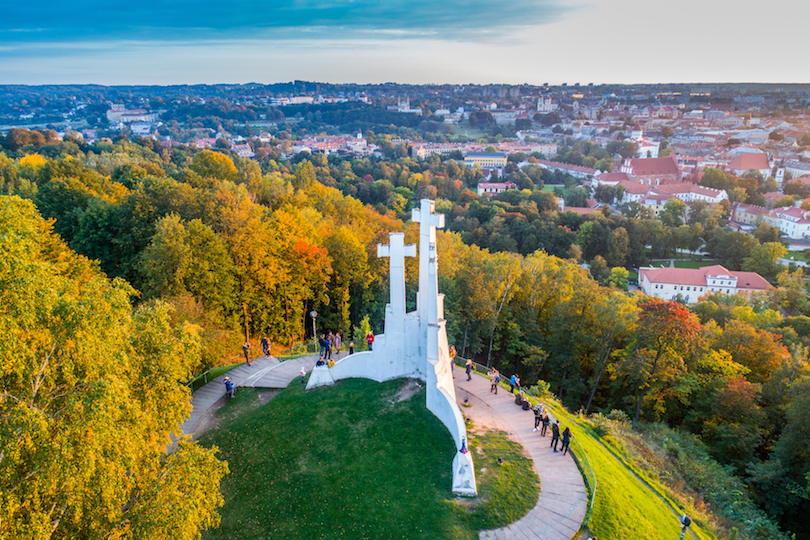
Vilnius is the Lithuanian capital which comes complete with a particularly beautiful old town. This heart of the city boasts Baroque architecture along its cobblestone streets. But you can see more than just Baroque: there’s the Gothic Saint Anne’s Church, the 16th-century Gate of Dawn, and the Neo-Classical Vilnius Cathedral.
Other than being home to Europe’s largest Baroque old town, Vilnius contains an array of bars and cafes hidden down charming alleyways and lining atmospheric courtyards. With a large population of students (over 20,000 of them), after night falls, Vilnius becomes a vibrant destination with flowing beer and live music.
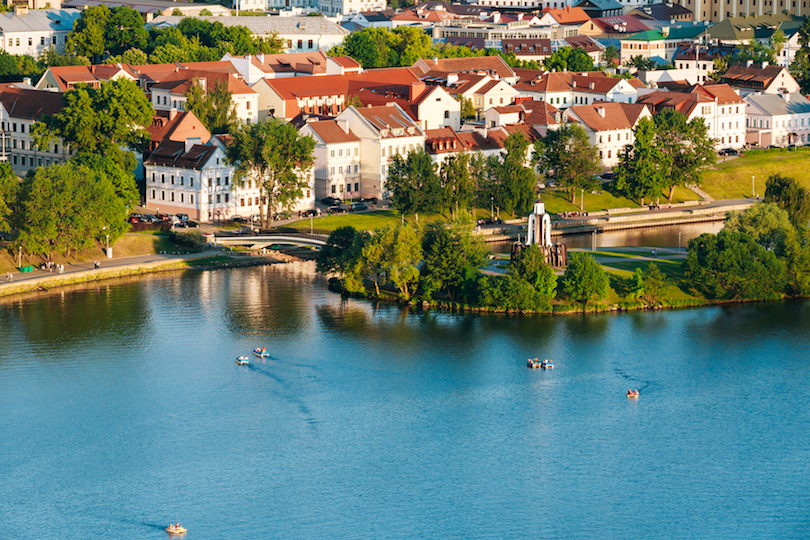
Minsk is the Belarusian capital. Completely destroyed during World War II, the city sadly no longer has much in the way of historical monuments or buildings. With that in mind, much of Minsk is actually made up of Stalinist architecture, such as Independence Square, a sprawling former KGB headquarters, and more recent, very impressive churches.
Nowadays, Minsk is a modern city with cool cafes to chill out in with a coffee, restaurants with international cuisine, and interesting art galleries. It’s a cosmopolitan capital that seems to be moving with the times, with a host of nightclubs and bars to visit in the evenings.
23. High Tatras
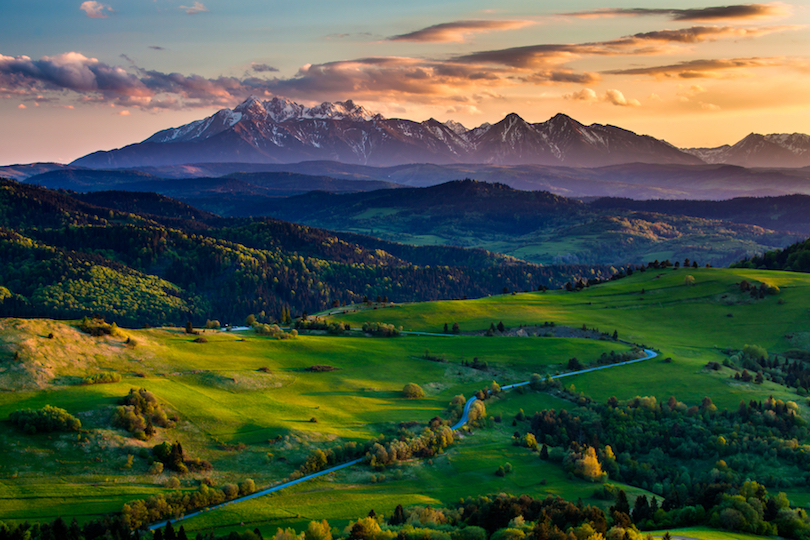
This rugged collection of mountains on the border of northern Slovakian is the tallest range in the Carpathian Mountains. Mount Krivan is the highest peak and is a symbol of the Slovak pride, luring many of its countrymen to climb to the summit.
Over a hundred emerald lakes, gushing waterfalls, and Alpine meadows characterize this beautiful region, making it a great place to hike around; in the winter skiers flock to the snow-covered slopes of the High Tatras. Luckily, you can stay in this marvel of nature, thanks to accommodation ranging from lakefront lodgings to more rustic mountainside retreats.

The Bulgarian capital of Sofia sits in the west of the country. Being something of a crossroads for Europe, it has attracted invaders and settlers alike for the past 2,000 years. Its architecture and landmarks reflect the history of the region, including Ottoman mosques, Greek temples, Roman ruins, and Soviet monuments.
Despite its age, Sofia is a surprisingly youthful city with a laid-back atmosphere, where its citizens enjoy relaxing in green parks and strolling along the boulevard. There are plenty of museums and galleries for you to delve into, but on the other hand, nightlife abounds, with a plethora of restaurants and nightclubs.
21. Butrint National Park
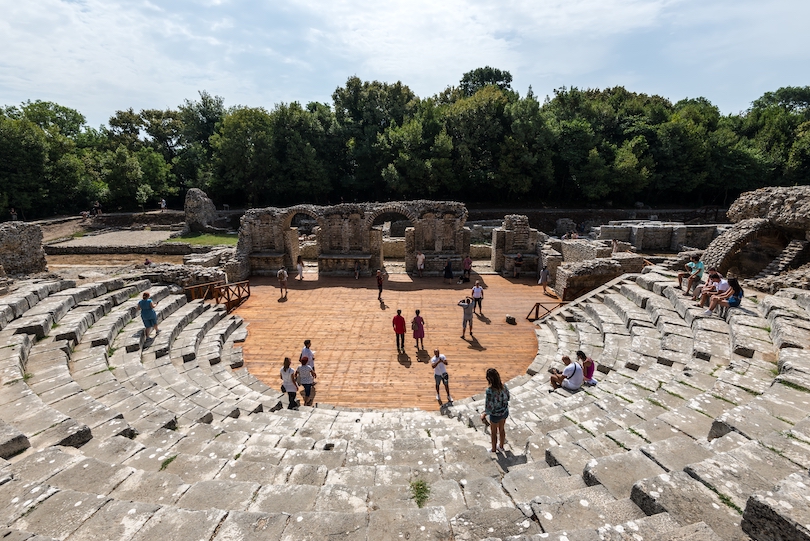
Butrint National Park sits in the south of the little-visited Balkan mystery of Albania , just across the sea from Corfu. It’s got just about everything you could want in a national park – lakes, marshes, grassy plains, wetlands, and even archaeological sites. These include the site of Butrint itself; known in Latin as Buthrotum, it’s full of ancient architecture, including a very well preserved Roman-era theatre and a Greek acropolis.
Elsewhere, this park boasts remote, rocky islands; one even features a 15th-century Venetian fortress known as the Ali Pasha Castle. Visitors looking to stay in Butrint should choose one of the few informal, family-run lodgings here.
20. Cesky Krumlov
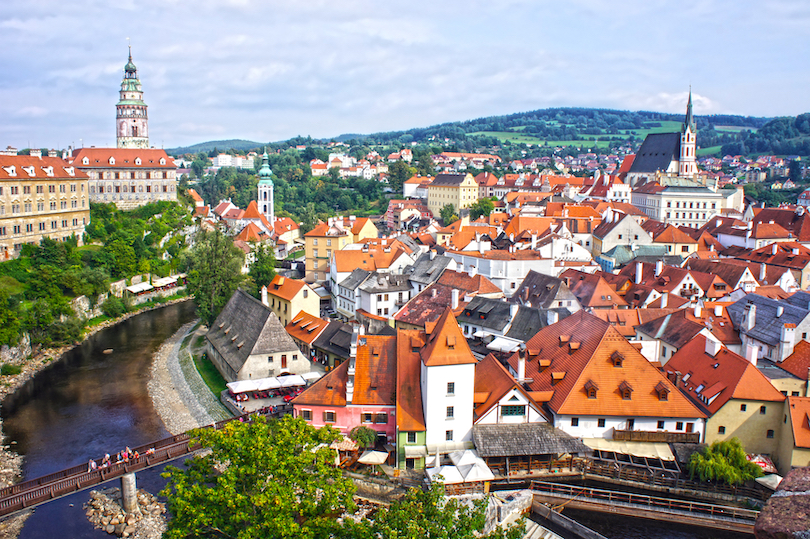
In the South Bohemia region in the Czech Republic lies Cesky Krumlov. This historic city is a supremely picturesque place to visit; think orange-tiled rooftops and the pretty riverside of the Vltava River, all flanked by green, rolling hills.
Made up of Renaissance and Baroque architecture, the town is overlooked by an impressive 13th-century castle, patchworked with a variety of styles through the ages; there’s also an ornate Baroque theatre to marvel at here.
It’s a town that should not be missed because of its sheer charm and beauty. Come in summer and stay till the sun goes down to watch the energetic city come alive with bars and restaurants.
19. Golden Ring
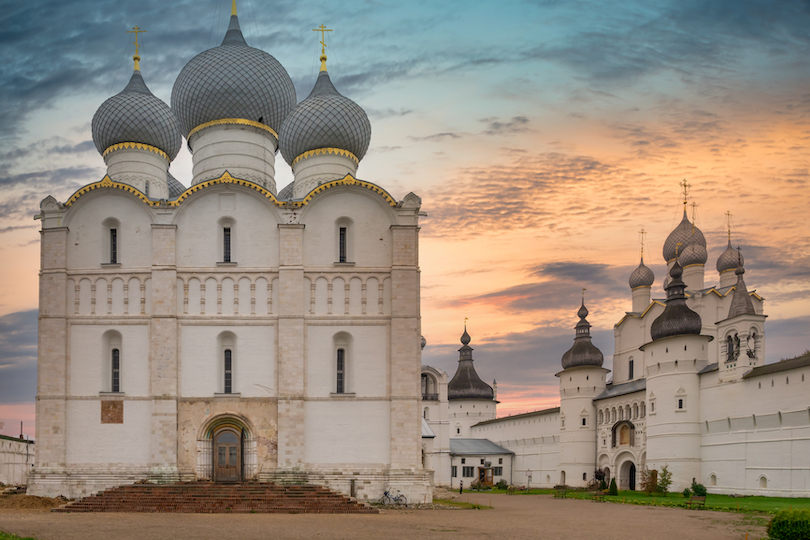
This is a vast area northeast of Moscow, Russia , that encompasses a handful of historic Russian cities. The medieval towns form a ‘Golden Ring,’ and due to their significance in the early history of Russia and the Rus tribe who founded it, have been labeled open-air museums.
The main towns are Sergiyev Posad, Kostroma, Ivanovo, Vladimir, Suzdal, Yarislavl, Perislavl-Zalessky, and Rostov Veliky. There are significant religious sites such as the 14th-century monastery of Troitse-Sergieva Lavra, grand buildings like Yarislavl, and other churches telling the story of a millennium of Russian Orthodox history.

The Polish capital of Warsaw has had a long, complex history, often marked by war and conflict. It was very much damaged during World War II, for instance, with the old town destroyed. However, it has been lovingly rebuilt to its former medieval glory, with brightly colored townhouses making for a pretty – if slightly artificial – place to wander around.
There’s a mixed bag of architecture across the city, including contemporary cafes and bars to discover. There are plenty of outdoor spaces to enjoy and, with a lot of restaurants and some culinary brilliance going on, it’s an excellent destination for foodies.
17. Lake Balaton
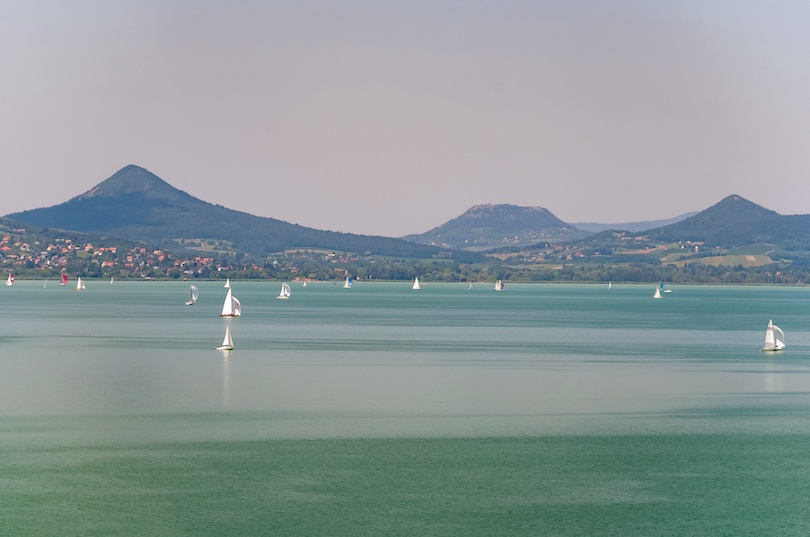
Set in western Hungary , the holiday destination of Lake Balaton is awash with beautiful beaches along its shores, as well as resort towns. Flanked by volcanic hills, it’s the largest lake in Eastern Europe, and is thought of as the ‘Hungarian Inner Sea.’
On the northern shores, you’ll find the town of Szigliget, home to a medieval fortress, and the oldest medieval town in the area – Tihany. This old town features a stunning Baroque abbey as its centerpiece.
If you like wine, you’ll be happy to know that Lake Balaton is famous for its vineyards, which dot the surrounding hills. Windsurfing and sailing are popular during the summer months.
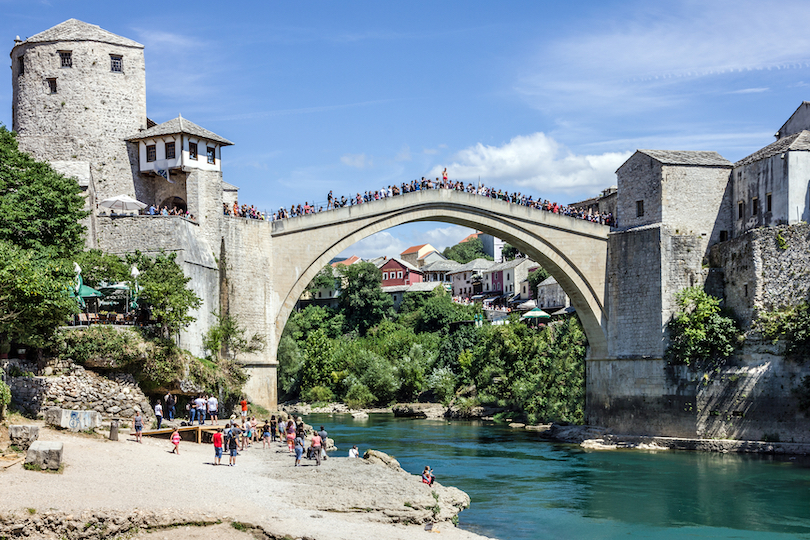
Mostar, in Bosnia and Herzegovina, is famous for its Old Bridge over the Neretva River; in fact, the name Mostar derives from mostari, meaning ‘bridge keeper.’ The bridge was built in 1556 under the orders of the occupying Ottomans, but was destroyed 427 years later in 1993 by Croat forces during the Balkan Wars.
Though it’s easily reachable on a day trip from neighboring Croatia, to get the most out of your visit to Mostar, the best thing to do is stay overnight. The crowds of daytrippers trickle away, and the restaurants high above the river along cobbled streets light up.
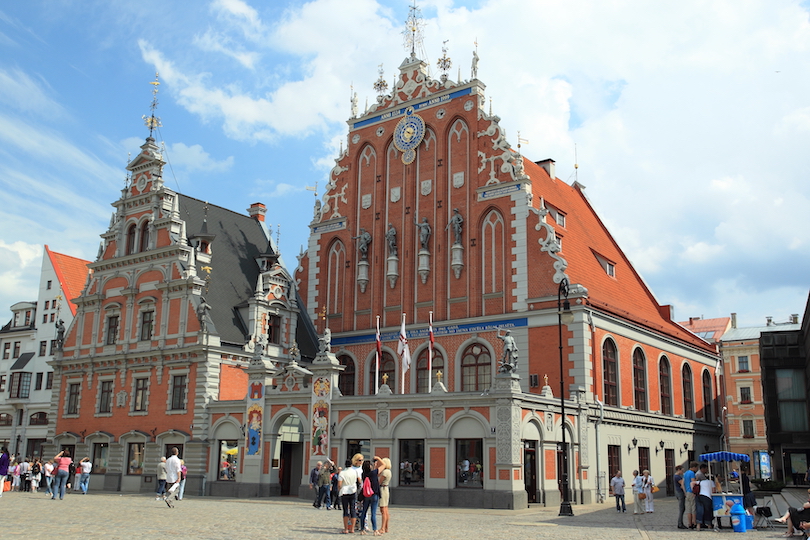
Situated on the Baltic Sea, Latvia’s capital is a mix of traditional and contemporary lifestyles. It’s an energetic place, where culture combines with the cobblestone streets for an exciting city atmosphere.
You can expect intricate Art Nouveau architecture intermingling with Gothic spires in the city’s beautiful old town, as well as a buzzing central market where you can dive into the city’s gastronomic delights – from cheese and sausage to black bread – perfect for a picnic in one of Riga’s pretty parks. Sip a cool cocktail or a local beer in one of the many pubs when night falls and the fun begins.

The Russian capital is a must-visit destination. It’s home of the Kremlin – the historic castle-turned-presidential complex – Red Square – a symbol of Russia’s power, and Lenin’s Mausoleum, where you can see the former Communist leader lying in situ.
Of course, the captivating and colorful onion domes of Saint Basil’s Cathedral are not to be missed, either. Museums, such as Pushkin State Museum and the State Tretyakov Gallery, allow you to learn more about Moscow, too.
Iconic ballet can be seen at the equally iconic Bolshoi Theatre. For nightlife and bars, head to the Garden Ring District; this is where you will find Moscow’s youthful vibrancy.
13. Lake Ohrid
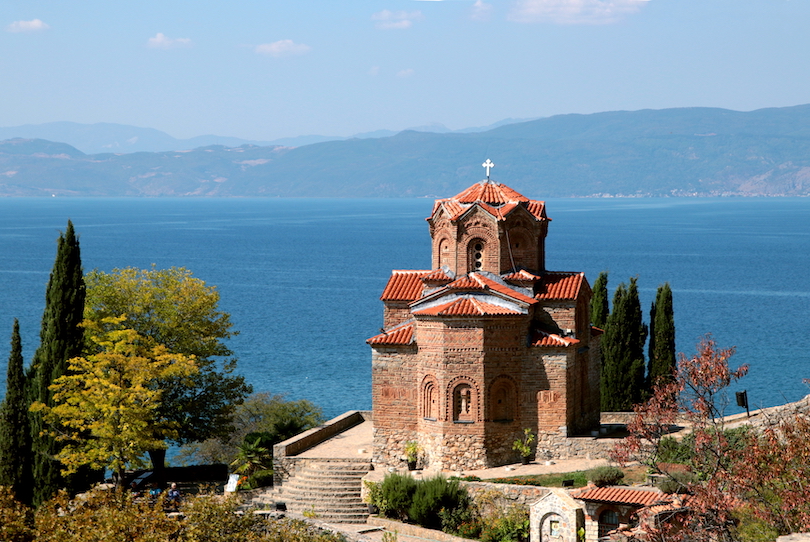
Straddling the borders of Macedonia and Albania, Lake Ohrid wins not one but two accolades of the natural world: it’s one of the deepest, and also one of the oldest lakes in Europe. Most of the lake falls within Macedonia, making this the best place to base yourself to see the spectacle.
The old town of Ohrid itself, for example, is home to old architecture, family-run lodgings, and a maze of narrow, cobblestone lanes to get lost in. Further south around the lake, Sveti Naum Monastery dates back to 905 AD and is a beautiful building to behold, with views of the surrounding mountains and lake equally stunning.
12. Plitvice Lakes National Park
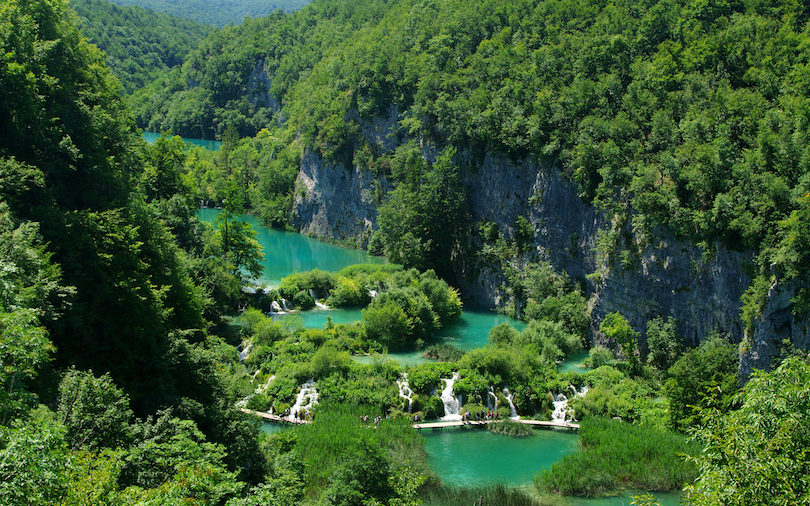
Huddled in central Croatia , Plitvice Lakes National Park is famous for its 16 terraced lakes, all conjoined by waterfalls that spill into a limestone canyon. This lovely area is a playground for people with a sense of adventure, who enjoy hiking amongst fantastic scenery.
You can expect boardwalks and hiking trails that wind through limestone rock formations and cliffs, and around the variegated waters of the lakes. That color change is down to the different mineral content of each lake. It’s no wonder that this sublime area was chosen to be Croatia’s first national park – and that it’s a very popular spot in summer.
11. Belgrade

Belgrade is an old city. The capital of Serbia , its long history involves not only Romans and Slavic tribes, but also Ottomans and Habsburg royals. In more recent times, it was the capital of Yugoslavia.
A proud, bold city, Belgrade – while not always beautiful – has an eclectic energy all of its own, with Soviet blocks next to golden age Art Nouveau buildings; the city’s patchwork history remains. It’s also a lively place to be and one of the most hip capitals of Eastern Europe. Spend time sipping coffee in quirky cafes, stroll along the pedestrianized boulevard Knez Mihailova, and hit up one of the packed bars in the riverside Savamala quarter.
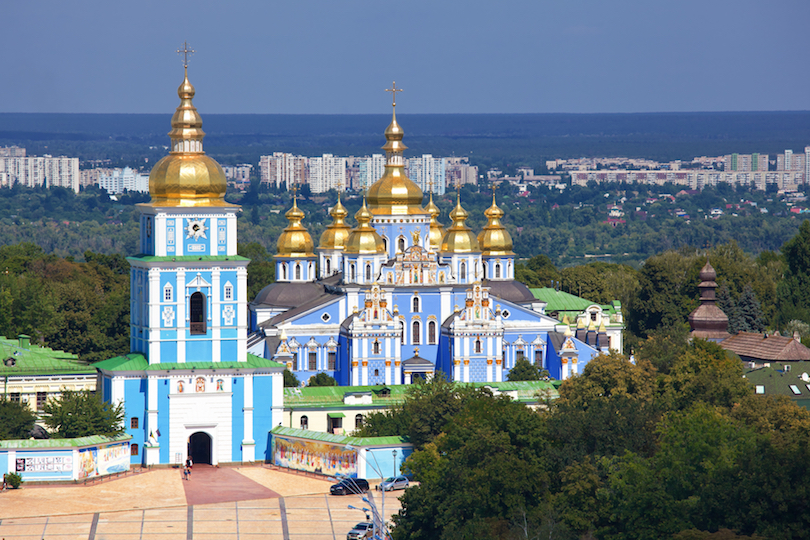
The Ukranian capital is an intriguing place – it’s vibrant, it’s historic, it’s atmospheric. Founded in the 5th century AD, Kyiv is one of Eastern Europe’s oldest cities, and was the center of the federation of Kievan Rus’.
There are plenty of places to soak up the history, like at the Pechersk Lavra complex – an important Orthodox Christian church – as well as the Saint Sophia Cathedral, with its breathtaking interiors and golden domes.
Elsewhere, the Motherland Monument is a dizzying Soviet marvel in concrete. At weekends, Khreschatyk Street is pedestrianized and comes alive with people enjoying their days off.
9. Lake Bled
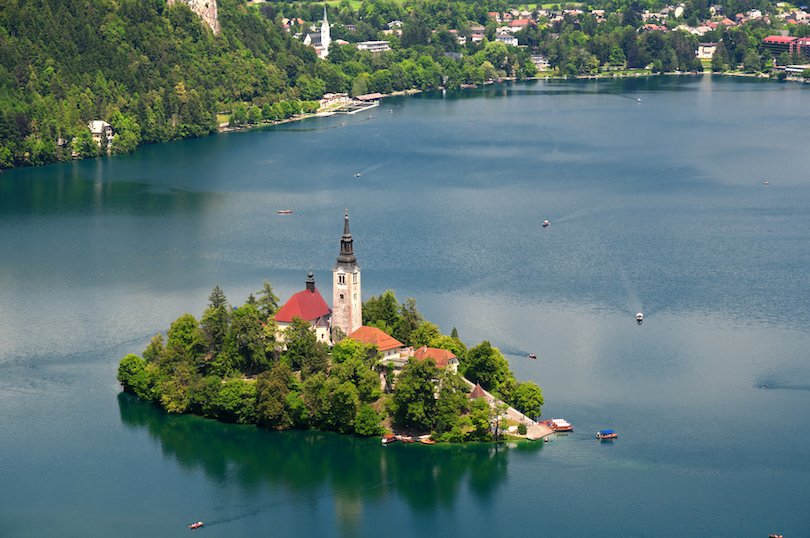
Slovenia’s spectacular Lake Bled sits in the Julian Alps in the northwest of the country. This dazzling, mirror-like body of water is backed by tree-covered hills and snow-peaked mountains, for one of the most awe-inspiring natural wonders in Eastern Europe.
Here, there’s Bled Castle sitting high on a cliff above the lake, and Bled Island in the center of the lake, reached by traditional wooden boats called pletna. There are a range of hiking paths around the lake, meandering in and out of woodlands and villages. The town of Bled is a popular place to base yourself to explore the lake, but staying in the capital of Ljubljana puts you in easy reach, too.
8. Budapest

The Hungarian capital that straddles the Danube River – and formerly the capital of the illustrious Austro-Hungarian Empire – Budapest is made up of three cities – Buda, Pest, and Obuda. Pest, in the east, is characterized by its Neo-Gothic spires – in particular, the soaring Parliament Building.
Buda, with its medieval Castle Hill, 13th-century Matthias Church, and Fisherman’s Bastion, can trace its history back to the Romans. Obuda is even older: the Roman capital of Pannonia, Aquincum, was established here in 106 AD.
Around the city, enjoy the much-loved thermal baths, spend an evening at the opera, pedal around Margaret Island, and hop around the emblematic ruin bars.
7. Bay of Kotor
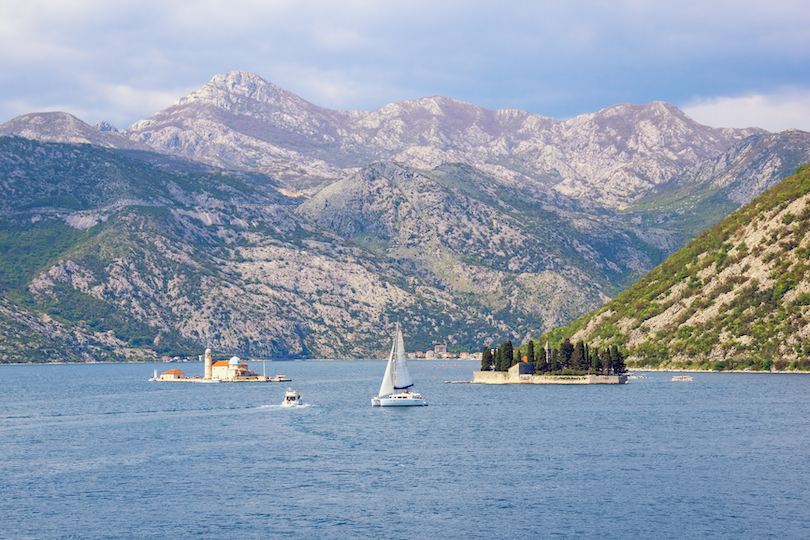
A sweeping bay in the eastern Adriatic Sea, the Bay of Kotor – also known as Boka – is situated in southwestern Montenegro . It’s a beautiful spot ringed by jagged green hills and medieval towns, with red-roofed houses spilling down to the coastline. Best explored by car along its winding roads, the region is packed full with incredible sights – from old citadels to islands topped with monasteries.
The bucolic, beautiful Bay of Kotor transcends others in the region – and there’s plenty of chances for seafood and delicious dinners by the sea to complement the scenery. Kotor old town is a Venetian wonder, surrounded by walls with a mountain backdrop that’s well worth using as a base.
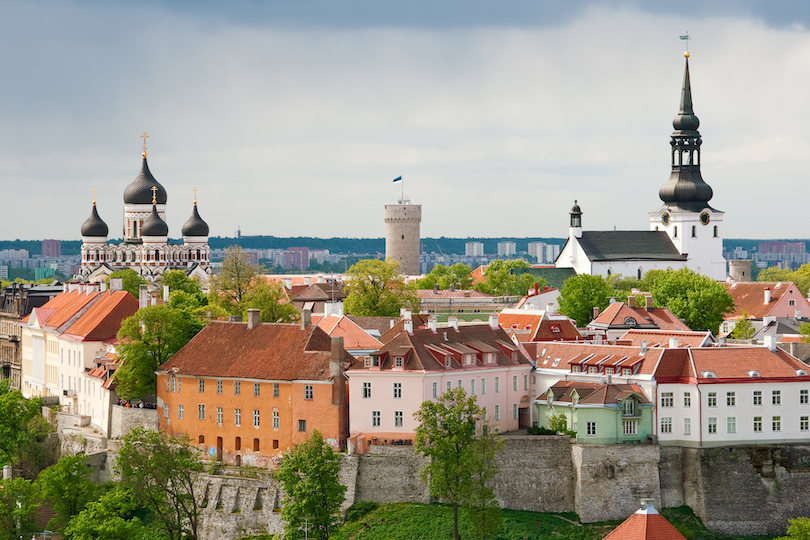
The capital of Estonia , Tallinn entices. With its 14-century old town, built as a defense system, when you walk through the impressive medieval Viru Gates, you can feel the history right away.
Parts of Tallinn’s city wall are still walkable, complete with windows where you can glimpse the charming city below; you can also get grand vistas of the city skyline from the Kohtuotsa Viewing Platform atop Toompea Hill.
There are also historic churches such as Saint Olaf’s Church, dating back to the 1200s. Tallinn has a hipster side too: former warehouses comprise Telliskivi Creative City, complete with trendy restaurants, bars, and shops.
5. Transylvania
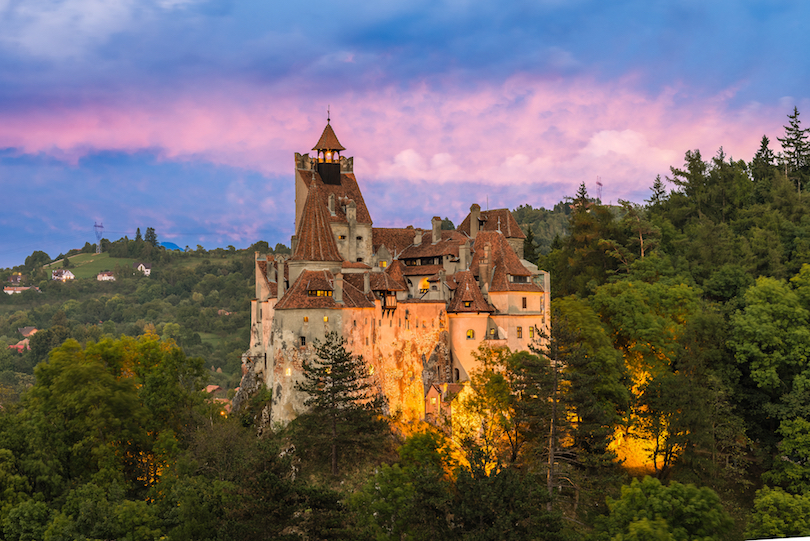
The central Romanian region of Transylvania is synonymous with stories of Dracula and bloodthirsty vampires. Whilst not entirely true, the area is mythical in terms of its natural beauty; bordered by the Carpathian Mountains, visiting Transylvania is like being transported into a slow-paced, medieval world. The countryside abounds quaint villages and local life between pastures and swathes of hills blanketed by trees.
There are many historic fortresses built by medieval German settlers, including the famous Bran Castle: these daunting spires make up what is popularly known as Dracula’s Castle . Make sure to visit the colorful city of Sighisoara, stacked with Saxon medieval architecture. You should also try out the region’s many thermal springs.
4. Saint Petersburg

The old capital of Imperial Russia, St. Petersburg is the cultural center of the country. It was founded in 1703 by Peter the Great and is home to lavish imperial buildings. Other sights include the Mariinsky Theatre for a world class ballet and opera, the lavish 1880s Church of Spilled Blood, as well as the State Russian Museum, where you can muse over Kandinsky Pieces.
The Hermitage Museum, spread over six buildings including the beautiful Winter Palace, has an incredible collection of antiques to marvel at. St. Petersburg is also a canal city with a Baltic coastline to boot; you can expect great shopping, dining and nightlife.

This southern Polish city, close to the Czech Republic, is a former royal capital. There is a beguiling mix of medieval buildings and modern-day, youthful nightlife to soak up here. Krakow is known not only for its old town – complete with the 13th-century Rynek Glowny, a cafe-lined market square, which is where you’ll find the iconic Cloth Hall, the grandiose centerpiece of the square.
It’s also known for its Old Jewish Quarter, called Kazimierz. Once home to the Jewish community of Krakow, Kazimierz has a new lease of life with boutiques and great restaurants; you can also visit places that appeared in Schindler’s List.
See also: Where to Stay in Krakow
2. Dubrovnik

Set in the south of Croatia on the Adriatic Sea, Dubrovnik is famous for its old town. This walled, medieval part of town was shelled in 1991 during the Balkan Wars, but has been restored to its former glory. Take a walk along the old city walls and be beguiled by the Baroque buildings; enjoy lazy afternoons at streetside restaurants soaking up the splendor of the city.
See also: Where to Stay in Dubrovnik
Stroll along the Stradun – the main pedestrian walkway through town – pick up some morning produce at the market in Gundulic Square, and siesta in a range of accommodation. Fans of Game of Thrones and Star Wars can easily find filming locations around the fortress.

Prague was given the nickname ‘City of 100 Spires,’ and it’s not wholly incorrect: the old town of Prague is bristling with Gothic, Renaissance, and Baroque architecture, boasting soaring spires that make the skyline like something from another time. Now the capital of the Czech Republic, Prague was once capital of the Kingdom of Bohemia.
Prague has a lot of sights pointing to its history, like the 9th century AD Prague Castle. There’s the 14th-century Charles Bridge boasting its stunningly ornate Gothic towers, and the old town square where you’ll find Prague Astronomical Clock – the oldest still functioning in the world.
See also: Where to Stay in Prague
One of Europe’s most popular city destinations, Prague is also awash with lodgings, eateries, bars, and nightlife.
Map of Places to Visit in Eastern Europe
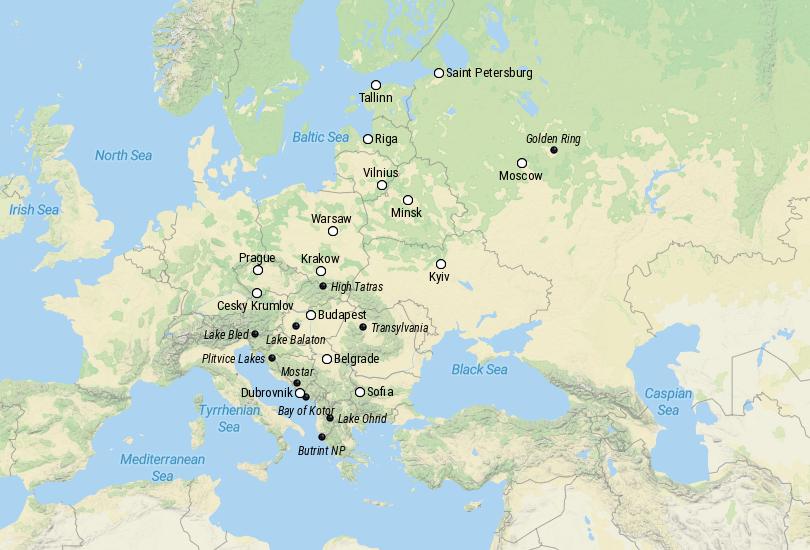
Share this post:
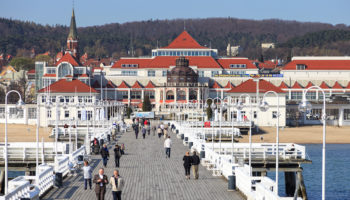
15 Best Cities to Visit in Poland
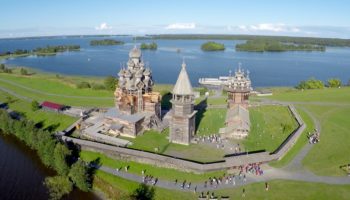
10 Top Tourist Attractions in Russia
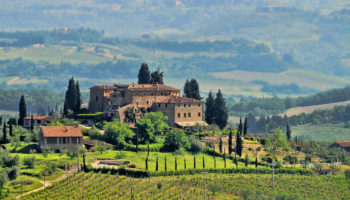
6 Most Beautiful Regions of Europe
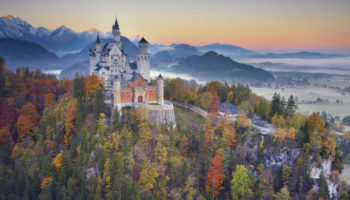
25 Top Tourist Attractions in Europe
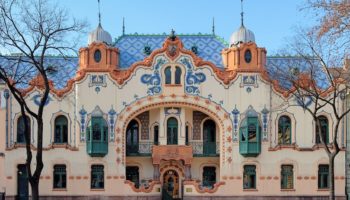
10 Best Places to Visit in Serbia
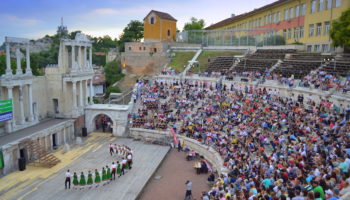
12 Top Tourist Attractions in Bulgaria
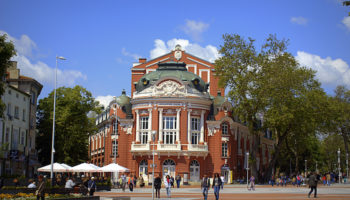
10 Best Places to Visit in Bulgaria
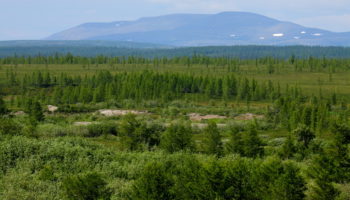
9 Most Beautiful Regions in Russia
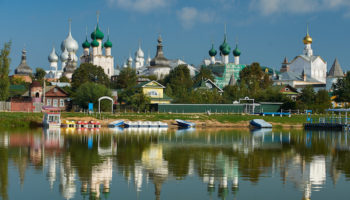
10 Best Places to Visit in Russia
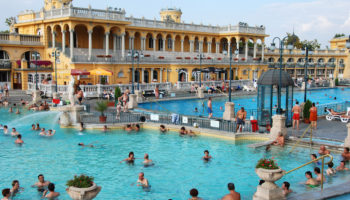
17 Top Tourist Attractions in Budapest
Reader interactions, leave a reply cancel reply.
Your email address will not be published. Required fields are marked *
This site uses Akismet to reduce spam. Learn how your comment data is processed .
Travel Europe on a Budget
The Savvy Backpacker
City Guides .\33 a132798-3f3b-4585-954d-7e70cf863447{fill:#231f20}
Eastern europe mega trip itinerary (travel time: 6-10 weeks).
Itinerary for seeing the best of Eastern Europe.
Trip Planning
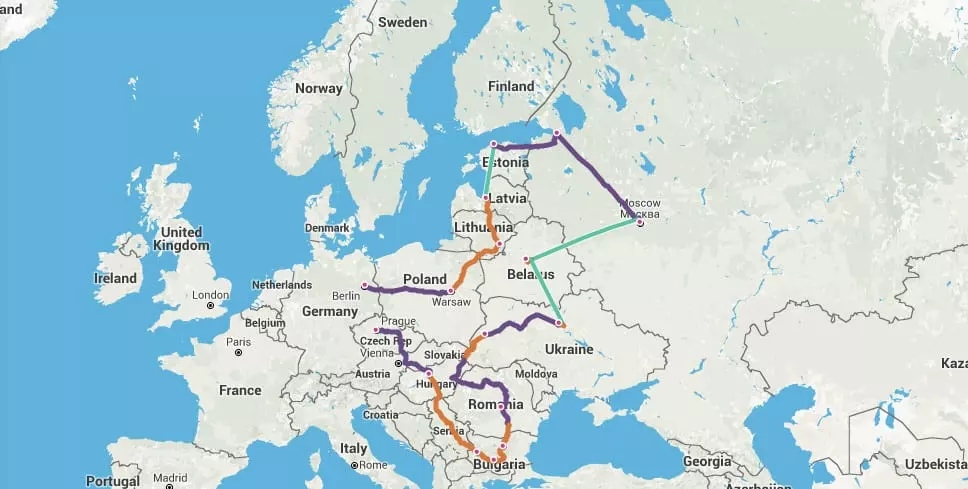
Eastern Europe still remains an intriguing mystery to most of us. It offers many treasures, but those treasures take a bit of work to uncover. This itinerary starts in Berlin and circles through the Baltics and deep into the former Soviet-controlled countries. You’ll see a healthy dose of gritty Soviet-era architecture mixed in with fairytale medieval old towns.
Most of the transportation for this journey will be via bus because train routes are much more sparse than in Western Europe — especially the further east you go. Additionally, distances between cities can be very large, so there will be a few long journeys. Because of this, you may want to use this guide but stick to a smaller region.
Many of the countries in this list are Russian-speaking, so spending a few hours trying to learn the Cyrillic alphabet will go a long way when trying to ask for things (remember, English won’t be spoken by very many people). On another note; Russia and Belarus require a visa that you’ll need to apply for in advance.
However, as a bonus, prices throughout Eastern Europe are cheap so you can eat, sleep, drink, and party for a fraction of what you’d spend in Western Europe.
Eastern Europe Mega-Trip
Note: If you want a taste of Eastern Europe without diving deep behind the former Iron Curtain, we recommend checking out our Gateway To Eastern Europe Itinerary .
Approx. 4+ days
If you haven’t already been, I suggest starting in Berlin. It’s a great segue from Western Europe to Eastern Europe thanks to its strong communist-era influence. Berlin is a physically large city with multiple neighborhoods, so you’ll want to give yourself multiple days to explore everything.
Approx. 2-3 days
From Berlin, it’s a little over a 5-hour train ride.
Warsaw, Poland’s capital city, was almost completely destroyed during WWI but has been impressively restored. It now features Gothic churches, Soviet-era blocks, skyscrapers, and neoclassical palaces, and the old town has been accurately restored to look as it did before the war. You’ll also find a bustling nightlife and art scene.
Approx. 1-3 days
A bus ride from Warsaw to Vilnius is about 6 hours. They are currently building a rail line between the two cities, but construction isn’t set to start until mid-2016.
Vilnius is known as the baroque beauty of the Baltic, and it’s easy to see why once you walk through its old town. Even though Vilnius is Lithuania’s capital, it feels almost like a village and has a somewhat rural atmosphere.
Approx. 2-3 days
The best and fastest way to travel from Vilnius and Riga is a 4-hour bus ride.
Riga, aka the Pearl of the Baltics, is Latvia’s capital and cultural center. The city is famous for its wooden buildings, medieval Old Town, and art nouveau architecture. The city is situated on the Baltic Sea and the River Daugava, so many activities revolve around the water. Plus, you’ll find a good number of hip bars and interesting restaurants, and a solid modern art scene.
The bus from Riga to Tallinn will take about 4 hours. You can also fly in about half the time.
Also located on the Baltic Sea, the Estonian capital of Tallinn has a lot of excitement and fairytale charm. The city’s main draw is its walled Old Town, ancient church spires, and 15th-century defensive tower.
If you want, you can take a day trip from Tallinn up to Helsinki.
NOTE: This is a good opportunity to visit St. Petersburg and/or Moscow if you have the time. This will add an extra week to your journey.
Approx. 3-4 days
We recommend flying from Tallinn to Minsk. It’s about a 3-hour flight, so about 6 hours total travel time.
Out with the old and in with the new… Minsk was completely destroyed during WWII and was rebuilt under Stalin’s orders… think of it as a monument to the ambitious aspirations of Soviet architecture and urban planning. You’ll find great cafés, hip restaurants, world-class nightclubs, art galleries, and museums to rival many other more well-known cities. Be warned, you’ll need a visa to visit Belarus.
Approx. 4-5 days
The train from Minsk to Kiev is a long 12 hours, but it’s pretty cheap. Flying is a lot faster but costs a lot more.
Kiev is one of the most beautiful cities in the world, and it’s proud of its eclectic architecture and its copious green space. It’s also one of the oldest cities in Eastern Europe — dating back to the 5th century.
The 5-hour train ride is the fastest and cheapest option to get between Kiev and Lviv.
Lviv is Ukraine’s least Soviet-feeling city — it actually has a charm similar to Prague and Kraków… except with a fraction of the tourists. The city is a UNESCO World Heritage Site and boasts the impressive High Castle Park — the mountaintop ruins of a 14th-century castle that provides amazing views of the city and countryside.
Transylvania
Approx. 2 days (if you just want to see one town. You’ll spend a few more days if you want to visit multiple old towns in the region.)
From Lviv to the town of Bran in Transylvania, it’s a pretty long commute with no real rail connection. The fastest method is flying to Bucharest and then taking a bus. That will take about 8 hours of total travel time. You can always spend a day or so in Bucharest if you want to break it up. If you choose to take a bus the entire way it will take about 22+ hours.
Nestled along the beautiful Carpathian Mountains, Transylvania (aka ‘the land beyond the forest’) feels like it has been lost in time and still feels slightly medieval (and the infrastructure can seem equally as old). Don’t be surprised to see farmers driving horse-drawn carts through town. It’s also home to a handful of castles — most notable Bran Castle (of Dracula fame).
Veliko Târnovo
It’s another long commute between Transylvania and Veliko — about 10 hours via bus or train.
This small Bulgarian town is built on a large hillside and the city is postcard pretty. It features the medieval Tsarevets fortress and a number of cafes and restaurants. Thanks to its sizable student population, there is plenty of nightlife.
Approx. 2 days
The bus from Veliko to Plovdiv is about 4.5 hours.
Plovdiv is Bulgaria’s second-largest city and has plenty of laid-back charm, a lovely Old Town, a strong art scene, cafés, and winding cobbled streets. It features Thracian, Roman, Byzantine, and Bulgarian antiquities as well as an amazingly preserved (and still functioning) Roman amphitheater. The city also has some great nightlife thanks to its large student population.
Plovdiv to Sofia is about 1.5 hours by bus or 2.5 hours by train.
Sofia is the capital of Bulgaria and its history goes back 2000 years (it’s been ruled by the Greeks, Romans, Ottomans, and Soviets). It’s also the cheapest capital city in Europe and it has a healthy nightlife scene.
Approx. 3-5 days
From Sofia to Budapest, it’s best to fly — it’s about a 4.5-hour flight.
Budapest is called the “Paris of the East,” and it’s one of my favorite cities in Europe. It has everything you’d want in a city (architecture, great nightlife, shopping, restaurants, etc.) and it’s affordable. Budapest is also known for its natural thermal baths — which are popular with locals and visitors.
Approx. 3-5 days
Fly or take an overnight train from Budapest to Prague.
Prague is often said to be the most beautiful city in Europe so it’s no wonder it’s a popular destination. It also has a solid nightlife scene thanks to its reasonably affordable prices (although they’re higher than most other eastern European cities). It’s a fairly compact city so you can see the highlights in a few days.
Total Trip Length 45 Days – 70 Days
This entire trip (add at least an extra 7-10 days for St. Petersburg and Moscow) will take about 45 days if you move quickly and a little over 65 days if you take it a little slower — this includes travel time between locations. And, of course, you can always tweak this itinerary to add/subtract destinations from your trip.
- Recent Posts
- Paris Pass Review — A Good Value or Waste of Money? - May 13, 2024
- The Best Travel Backpacks | In-Depth Buyer’s Guide & Backpack Reviews - April 28, 2024
- Best Prepaid UK eSIM | Data Plan Buyer’s Guide - April 21, 2024

No Funny Business
The Savvy Backpacker is reader-supported. That means when you buy products/services through links on the site, I may earn an affiliate commission—it doesn’t cost you anything extra and it helps support the site.
Thanks For Reading! — James
Questions? Learn more about our Strict Advertising Policy and How To Support Us .
Related Reads
Best party cities in europe | europe’s best nightlife destinations.
Let's party! Here are the best places to go wild in Europe.
The Most Visited Cities In Europe | A Guide To The Most Popular European Cities
A list of the European cities that attract the greatest number of international visitors each year.
Money & Budgeting , Trip Planning
Is Travel Insurance Worth It? Helping You Understand Travel Insurance
Everything you need to know about buying travel insurance
Europe Visa for American Citizens | ETIAS Travel Waiver Guide
Everything you need to know about the new ETIAS travel waiver for entry into the European Union.
City Guides
Choosing travel insurance, travel packing lists, budget travel newsletter.
The best budget travel tips sent straight to your inbox.
Join My Journey
Europe travel tips, advertising & privacy policies.
TheSavvyBackpacker.com is a participant in the Amazon Services LLC Associates Program, an affiliate advertising program designed to provide a means for sites to earn advertising fees by advertising and linking to amazon.com.
© 2010 - 2024 The Savvy Backpacker
Website Design by FHOKE
- North Dakota
- Czech Republic
- Switzerland
- Vegan City Guides
- Vegan Travel & Tips
- Vegan Fashion
- Sustainability
- Blogging Tips
- Photo Diaries
- Unfortunate (but hilarious)
- Recommendations
- Get in Touch
- Work With Me
- Best Travel Insurance
- Freelance Gig

- Europe , Inspiration
Are you thinking of backpacking Eastern Europe but aren’t sure where to begin or how to plan your amazing adventure? Well, whether you want to spend 10 days, 2 weeks, or 1 month traveling around, here’s my guide to the ultimate Eastern Europe itinerary!

Psst. This post contains affiliate links. Read our disclosure .
After spending two months backpacking Eastern Europe, it has become one of my favorite parts of the world!
From historic Krakow and bustling Prague to picturesque Budapest and quaint Bratislava, Eastern Europe has a lot to offer each and every traveler. Not only is this part of Europe ridiculously affordable, it’s also packed with fabulous vegan food !
Although, if vegan food and affordability isn’t doing it for ya, here are a few other draws of traveling Eastern Europe:
✓ Captivating history at every turn ✓ Gorgeous cobblestone roads (Instagram loves this! 😉) ✓ Mind-blowingly beautiful cities and towns ✓ Cheap a** beer (I’m talking like $3 for a liter of beer) ✓ Awesome hostels (and hotels) ✓ Delicious food ✓ And… super affordable (yes, I’m mentioning it again because OMG, who wouldn’t want to travel for under $40/day for everything? )
Itching to get your Eastern Europe travel plan put together? I thought so!
Though you could spend decades exploring all the cool crevices and underrated spots of Eastern Europe, most of us don’t have that much time.
So, here’s my guide on the best Eastern Europe itinerary for 10 days, 2 weeks, or even one big fat awesome month!
Table of Contents
ULTIMATE EASTERN EUROPE TRIP PLANNER
So, with all of these suggested itineraries, they start in the beautiful capital of Warsaw, Poland. A super duper handy city to begin in, it’s a great setting off point for the rest of Eastern Europe.
10 Day Eastern Europe Itinerary
This suggested 10 day itinerary is for those who want to see the best of what Eastern Europe has to offer but don’t have much time to head out to the lesser-known cities and destinations.
Thus, it focuses on cultural hubs and bustling cities with historic touches and lots of things to do!
Day 1-2: Warsaw, Poland
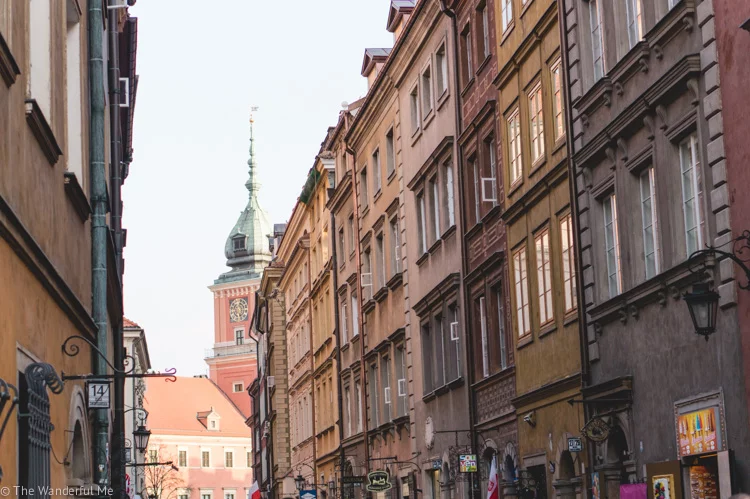
While I personally wasn’t a huge fan of Warsaw, there are a ton of things to see and do here! Plus, the main squares are super duper cute and most definitely worth a visit.
Not to mention, the vegan food in Warsaw is off the charts! Make sure to grab a few vegan pierogies while visiting this city.
Best Things to Do in Warsaw, Poland:
- Explore the Old Town
- Walk through Łazienki Park
- Have a pint in the Old Town Market Square
- Visit the Warsaw Uprising Museum (SO good!)
- Give your condolences at the Okopowa Street Jewish Cemetery
- Admire the views at the Palace of Culture and Science
- Check out the Tomb of the Unknown Soldier
- View the Jewish Ghetto Memorial
Where to Stay in Warsaw:
- Budget : Press Hostel • €7-28 — OR — DREAM Hostel Warsaw • €10-41
- Mid-Range : Old Town Bridge Rooms • €35-49 — OR — Old Town Home • €47-52
- Higher-End : Pokoje Gościnne Dom Literatury • €57-93 — OR — PURO Warszawa Centrum • €78-200
- Luxury : Sofitel Warsaw Victoria • €149-304 — OR — The Westin Warsaw • €113-431
Not sure if visiting Poland is worth your time? Take a look at these 27 magical photos of Poland — I have no doubt your mind will be changed!
Day 3-5: Krakow, Poland
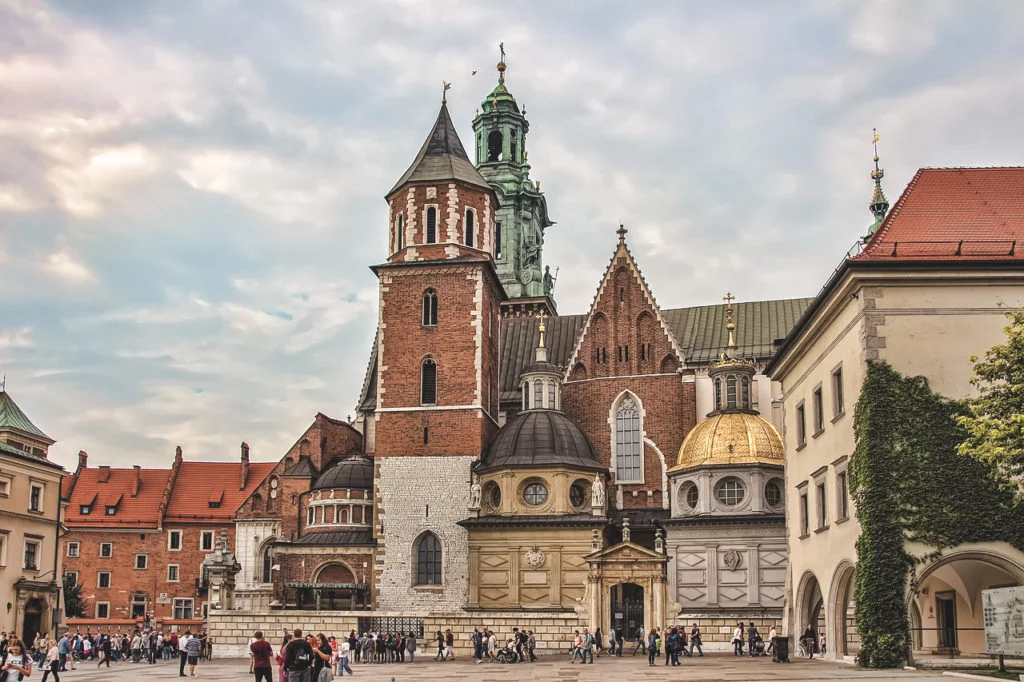
If you’re backpacking Eastern Europe, Krakow is a must! In fact, Dan and I loved this city so much we spent over 4 days here. And no, we didn’t get bored because holy moly, there is SO much to do here!
Best Things to Do in Krakow, Poland:
- Explore Krakow’s Main Square
- Visit Wawel Castle
- Have your mind blow at the Wieliczka Salt Mines
- Check out Oskar Schindler’s Factory (Schindler’s List)
- Day trip to Auschwitz Concentration Camp
- Explore the historical Jewish Quarter (Kazimierz Neighborhood)
- Try some traditional (vegan) Polish food — click here to read my Krakow vegan food guide!
- Visit the beautiful St Francis’ Basilica
Where to Stay in Krakow:
- Budget : Lemon Tree Hostel • €7-10 — OR — Bubble Hostel • €12-46
- Mid-Range : Words & Swords Apartments • €18-32 — OR — Apartamenty Marco • €39-51
- Higher-End : Aparthotel Stare Miasto • €80-156 — OR — Hotel Wit Stwosz • €72-139
- Luxury : Hotel Unicus Palace • €155-271 — OR — Hotel Polski Pod Białym Orłem Hotel • €120-416
Psst, interested in reading my 1-week Poland itinerary ? You’ll discover how to spend 7 days exploring Warsaw, Krakow, and the fairytale town of Wroclaw!
Day 6-8: Prague, Czech Republic
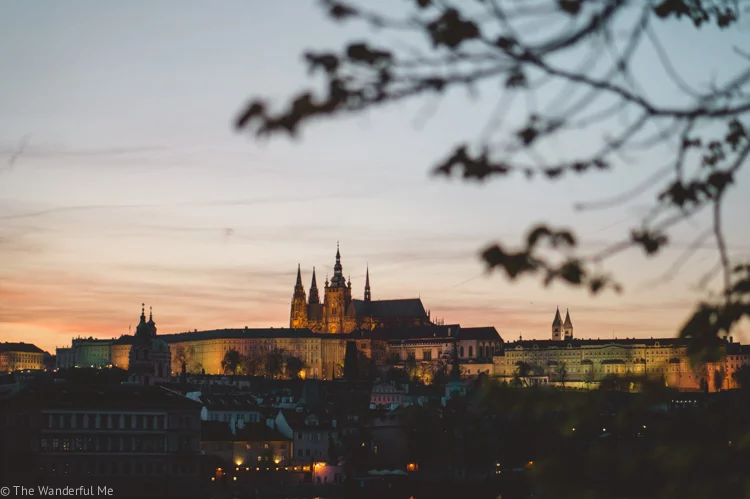
Another must-see city when on an Eastern Europe trip, Prague is a historical and cultural gold mine, not to mention it’s also pretty affordable for being such a popular destination!
Best Things to Do in Prague, Czech Republic:
- Wander about the Old Town Square
- Visit Prague Castle
- Explore the Jewish Ghetto Quarter
- View the Astronomical Clock Tower
- Have a drink of traditional Czech beer ( super affordable!)
- Stroll across the Charles Bridge
- Marvel at St. Vitus Cathedral
- Visit the KGB Museum
- Admire the Lennon Wall
- Go cruising on the Vltava River
- Party up in Prague (the clubs are fantastic)
Where to Stay in Prague:
- Budget : Hostel Kaiser • €18-25 — OR — Hostel Franz Kafka • €8-38
- Mid-Range : The Republic Garden • €19-23 — OR — Pension Karlova • €65-95
- Higher-End : Historic Royal Apartment • €89-119 — OR — Ibis Praha Old Town • €73-85
- Luxury : Mordecai Twelve • €115-178 — OR — Hotel Pod Věží • €93-127
Day 8-10: Budapest, Hungary
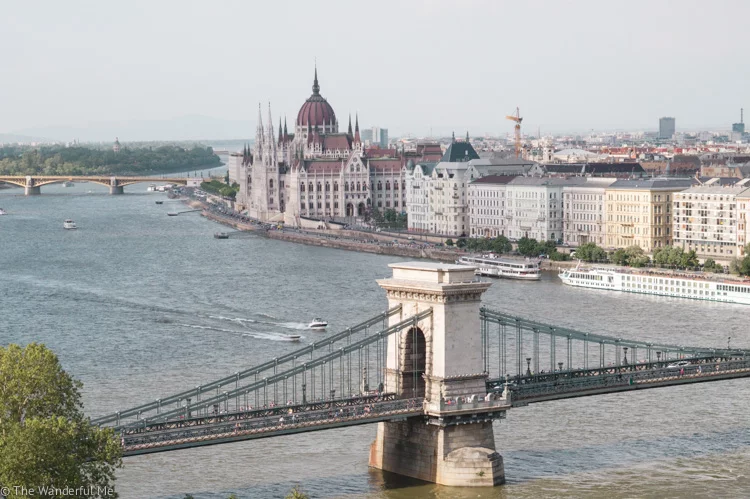
Though Poland is hands down my favorite country in Eastern Europe, Hungary is a close second. Budapest is extremely picturesque and such a beautiful city with loads of awesome things to do!
Best Things to Do in Budapest, Hungary:
- Visit St. Stephen’s Basilica (make sure to go up to the top for a gorgeous view of Budapest!)
- Go for a dip at one of the many Budapest Baths (Gellert & Széchenyi Thermal Baths)
- Admire the Hungarian Parliament Building
- Walk the Danube Promenade (and check out the infamous shoes)
- Check out Heroes’ Square
- Explore the Fisherman’s Bastion (awesome spot for a photo!)
- Visit the Dohány Street Synagogue
- Party at some ruin pubs
- Go up to Buda Castle (head up in the funicular!)
- Check out the Hungarian National Museum
Where to Stay in Budapest:
- Budget : 2B Hostel & Rooms • €13-67 — OR — Activity Hostel • €18-20
- Mid-Range : Apartment Ginkgo • €35 — OR — Urban Rooms • €45-75
- Higher-End : Basilica Friends Apartment • €100-140 — OR — The Loft Budapest • €87-105
- Luxury : Prestige Hotel Budapest • €144-261 — OR — Aria Hotel Budapest • €347-500
Need some foodie inspiration? Click here to open a new tab to my vegan food in Eastern Europe post!
2-Week Eastern Europe Itinerary
This suggested two week itinerary focuses on a lot of the same cities and destinations as above but with a few more awesome places sprinkled in.
Additionally, a few more days are added to places like Prague and Budapest, where you can have more time to venture outside the city!
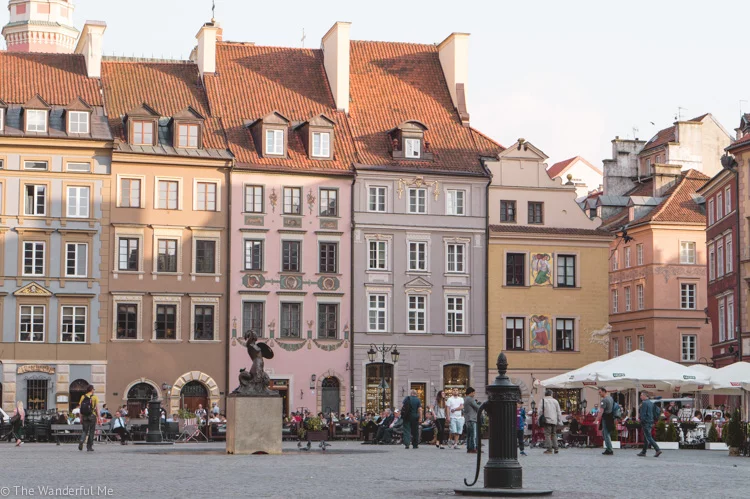
Click here to visit the list of the best things to do in Warsaw and where to stay in the city above.

Click here to visit the list of the best things to do in Krakow and where to stay in the city above.
Day 5-6: Wroclaw, Poland

Wroclaw was absolutely one of my favorite places to visit in Eastern Europe!
An adorable, picturesque city straight outta a fairytale, Wroclaw features gorgeous pastel-colored buildings, cute little gnomes dotted around the city, delicious food, cool pubs, and more.
Click here to open a new tab for my 24-hour guide to Wroclaw, Poland.
Day 6-9: Prague, Czech Republic

In addition to the best things to do in Prague above (click here to see the list), an extra day in Prague gives you the freedom and time to either do more things in the city or head out on a day trip!
I personally recommend doing a day trip to the infamous Bone Church in Kutna Hora. You can find my guide on how to do a day trip by train to that cool destination here !
Day 10-11: Bratislava, Slovakia

In my humble opinion, Bratislava is one of the most underrated cities in Eastern Europe! Many skip over this little capital when traveling from Prague or Vienna to Budapest but it is SO worth a visit.
Bratislava is the capital of Slovakia but it’s so small it gives the feel of a small town (which I love!). Since it’s so small, you can spend little time here yet see tons.
Best Things to Do in Bratislava, Slovakia:
- Visit Bratislava Castle (and walk the beautiful gardens!)
- Explore the historic Bratislava city center
- Eat some delicious vegan food (Bratislava is surprisingly awesome for veggie travelers!)
- Admire St Elizabeth’s Church (Blue Church)
- Check out St. Martin’s Cathedral
- Wander about looking at all the gorgeous colored buildings
- Look for the statues dotted around the Old Town
Personally, when Dan and I visited, we went on a free tour with our hostel ( Wild Elephants )! I highly recommend you do the same to see the best of Bratislava in a short amount of time.
Where to Stay in Bratislava:
- Budget : Wild Elephants Hostel • €11-15 — OR — DREAM Hostel Bratislava • €12-16
- Mid-Range : Zeitlos boutique hostel • €18-20 — OR — Downtown Apartment Nicole • €34-40
- Higher-End : Apartman Sv. Urban • €53-59 — OR — VIP Apartments • €73-81
- Luxury : Arcadia Boutique Hotel • €95-191 — OR — Radisson Blu Carlton Hotel • €122-383
Day 11-14: Budapest, Hungary

In addition to the list of the best things to do in Budapest above, with an extra day you can either explore more of the city and have a more relaxed time, or you can choose to do a couple day trips to fill the time.
Here are some Budapest day trips & tours I recommend:
- Half-Day Etyek Wine Tour from Budapest
- Danube Bend & Szentendre with Lunch: Day Tour from Budapest
- Szentendre Half-Day Tour from Budapest
- Budapest: Underground Caving Adventure Tour
After reading the 1-week and 10-day Eastern Europe itinerary ideas above, you might be wondering… what is the best way to get around Eastern Europe?
As someone who has traveled Europe several times now, I highly recommend either trains or buses to get between destinations!
Here are my two top ways to book Eastern Europe transportation:
- Flixbus — A ridiculously affordable bus operator that basically goes between every city in Europe. Whether you need to get a short bus to Budapest from Prague or a longer, overnight bus from Berlin to Munich, Flixbus probably offers that bus journey!
- The Trainline — Hands down one of the best sites to search and find the cheapest train tickets. Not to mention, their app is great for paperless tickets!
1-Month Eastern Europe Itinerary
If you have the time, this is my absolute favorite itinerary for Eastern Europe. Not only do you have the opportunity to see more, you get to travel slower, which is a big part of traveling sustainably . Cool, right?
Additionally, I left a couple days spare for you to play with. This could mean you spend a day or two more in a city you really enjoy or you could travel more slowly between places for even cheaper transportation.
Day 1-3: Warsaw, Poland

Click here to take a look at the list above for things to do in Warsaw and where to stay!
Day 4-7: Krakow, Poland
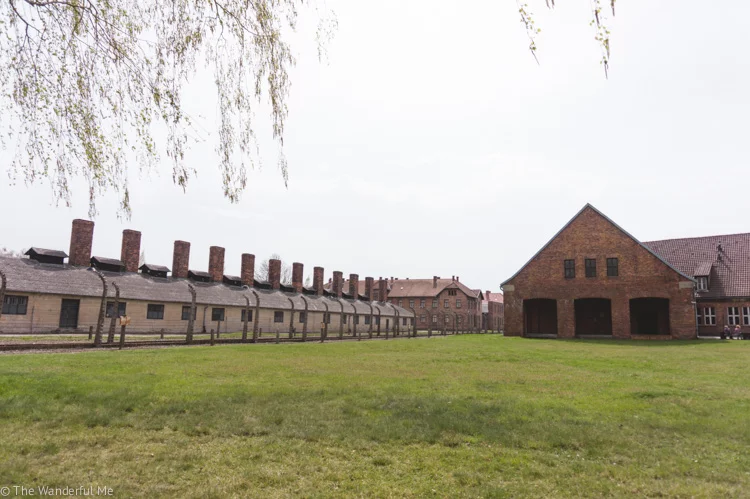
Click here to take a look at the list above for things to do in Krakow and where to stay!
Although, with a few days in Krakow, try passing the time with one of these day trips and tours:
- Full Day Tour from Krakow to Auschwitz-Birkenau Concentration Camps
- Creepy Krakow: 2-Hour City Walking Tour
- Full-Day Zakopane & Tatra Mountains Guided Tour (SO awesome!)
- Half-Day Salt Mine Tour and Schindler’s Factory
Day 7-9: Wroclaw, Poland
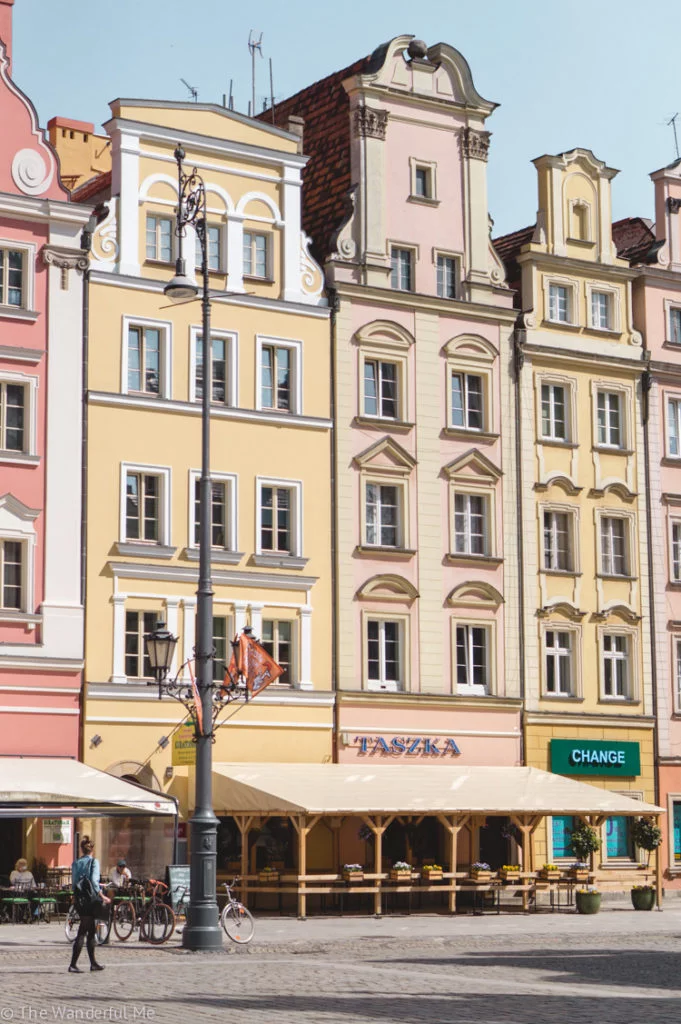
Click here to read my Wroclaw, Poland travel guide, where you’ll find the best things to do and where to stay!
Day 9-14: Prague, Czech Republic
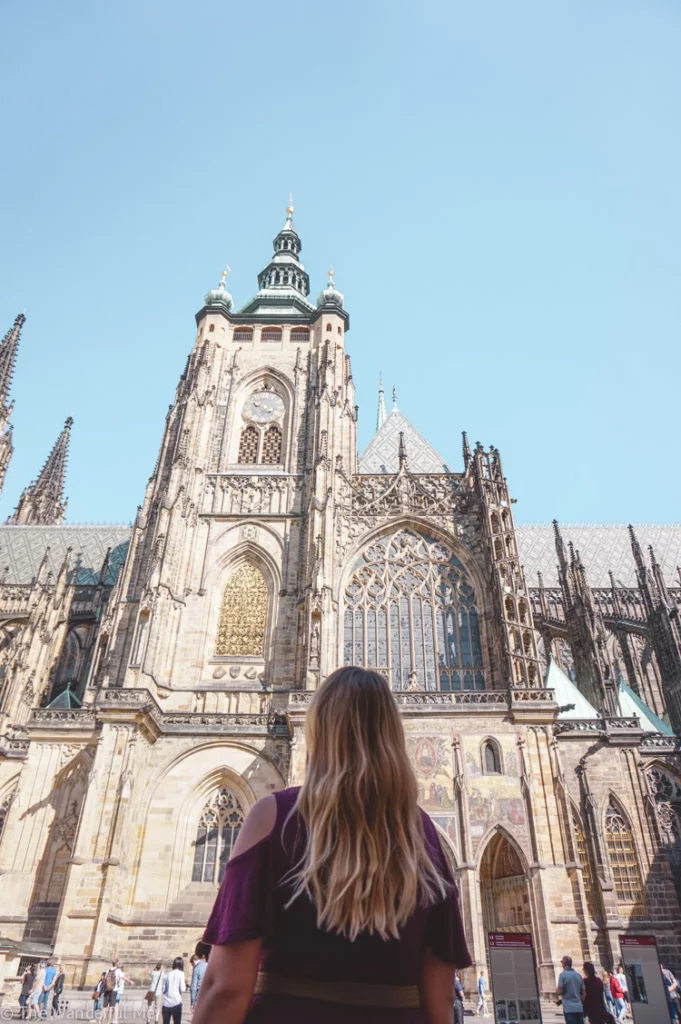
Ample time in Prague gives you more time to see this beautiful city! With 4 full days in Prague, you can relax and chill out, as well as see and explore a bunch of awesome sites, attractions, and more.
If you want to explore Prague with a tour or do a day trip, check out these:
- Český Krumlov Full-Day Trip from Prague
- 6 Hour Best of Prague Tour: Castle, Jewish Quarter, Cruise & Lunch
- Prague: Ghosts and Legends 1.5-Hour Walking Tour
- Kutna Hora & Bone Chapel Tour from Prague
None of those interest you? Take a look at more Prague tours here !
Day 14-16: Vienna, Austria

Although you could spend multiple days seeing the best of what Vienna has to offer, it’s a pretty darn expensive city so I recommend limiting your time here to save some dollars.
On the flip side, if you do have a good-sized budget for backpacking Eastern Europe, spend more time here! It’s a beautiful city.
Best Things to Do in Vienna, Austria:
- Marvel at Schönbrunn Palace (don’t forget to walk around the magnificent gardens!)
- Visit St. Stephen’s Cathedral (go up to the top for a great view!)
- Admire the Rathaus (aka the Vienna Town Hall)
- Check out Hofburg Palace
- Visit the Belvedere Museum
- Explore the Vienna Natural History Museum
- Wander about the Naschmarkt
Where to Stay in Vienna:
- Budget : CH-Hostel • €35-47 — OR — Pension Dr. Geissler • €49-144
- Mid-Range : CH-Wellnessapartments • €89-114 — OR — Hotel Josefshof am Rathaus • €92-281
- Higher-End : City Pension Stephansplatz • €131-249 — OR — Boutique Hotel Das Tigra • €124-310
- Luxury : Steigenberger Hotel Herrenhof • €205-921 — OR — Park Hyatt Vienna • €409 – a ridiculous amount
Want to explore the city with some tours? Check out some here !
Day 16-18: Bratislava, Slovakia

Click here to read my list of the best things to do in Bratislava and where to stay above.
Day 18-21: Budapest, Hungary
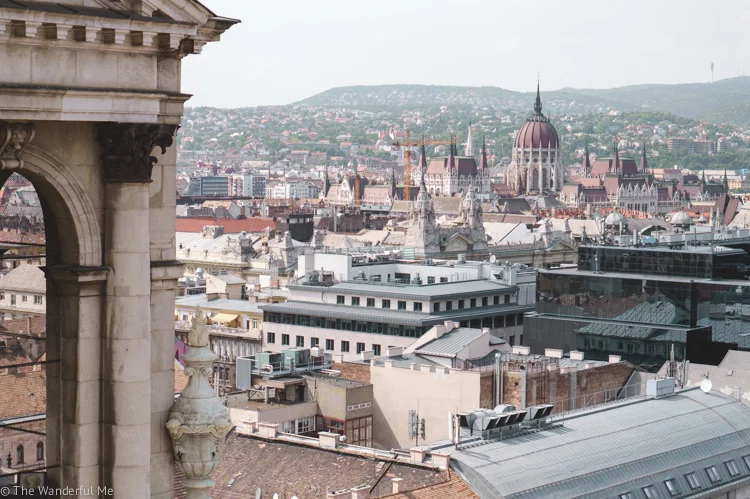
Click here to read my list of the best things to do in Budapest and where to stay above. Or click here to check out my list of Budapest day trips and tour recommendations.
Transportation Between Budapest and Cluj-Napoca
The next destination on this suggested Eastern Europe is Cluj-Napoca in Romania. Keep in mind, Romania is outside the Schengen Area, which means you’ll have your passport stamped when at the Hungary-Romania border.
The train between Budapest and Cluj-Napoca takes around 7-8 hours. This means an all day event (the Romanian countryside is nice to look at) or you can opt for a night train, which means saving money on accommodation.
Alternatively, you can also take a bus between the two destinations . Again, similar to the train, you an opt for a day or night bus. However, the night bus is a lot faster at around 9 hours, whereas the day bus takes around 11.
Day 21-23: Cluj-Napoca, Romania
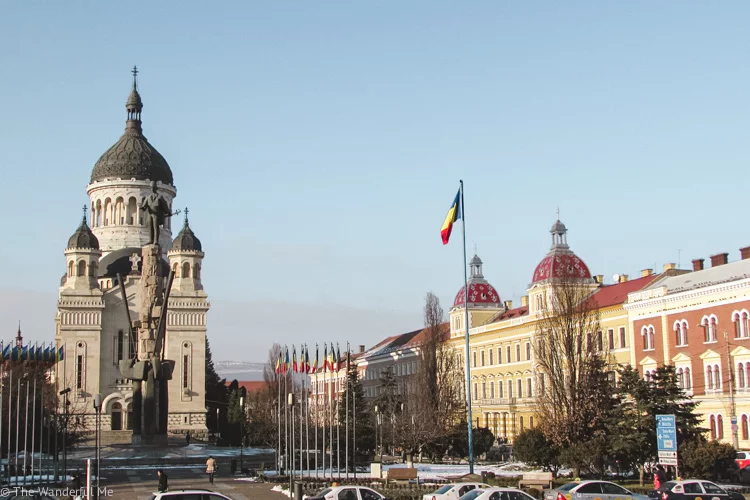
A bustling city in central Romania, Cluj-Napoca is hailed for its University and exciting city life, as well as its beautiful churches and cathedrals.
With a beautiful blend of Eastern Europe history and Western Europe modernity, you can find lots of things to do, cool sites, and wondrous attractions here.
Best Things to Do in Cluj-Napoca, Romania:
- Check out the Cluj-Napoca Art Museum
- Relax at the Botanical Garden
- Explore the many churches and cathedrals (St Michael’s Church, Orthodox Metropolitan Cathedral, Piarists’ Church, Reformed Church)
- Wander the city on an affordable local tour
- Hike up Cetățuia Hill for a beautiful view of the city
- Chill out in Central Park (the city’s gorgeous green heart)
- Discover traditional Romania at the Ethnographic Park Romulus Vuia
- Learn all things strange medicine at the Pharmacy Museum
- Uncover ghosts and experience paranormal activities at the Hoia Baciu forest
Where to Stay in Cluj-Napoca:
- Budget : Zen Hostel by Pura Vida • €10-31 — OR — Retro Hostel • €14-37
- Mid-Range : Modern Central-Near Unirii Square • €34-54 — OR — Old Central Apartment • €36-42
- Higher-End : Camino Home • €53-67 — OR — Neo Apartment Eroilor • €52-63
- Luxury : Luxury Nook • €143 — OR — Cluj Lux Apartment Central • €101-105
Transportation Between Cluj-Napoca and Braşov
Between these two Romanian cities, you can opt for either train or bus. Train takes around 6-7 hours and a bus takes around 5 hours.
Although, as someone who has taken the train, I highly recommend it. It’s super duper slow but you get a sneak peak of the Romanian countryside (which is extremely beautiful, IMO).
Day 22-25: Braşov, Romania
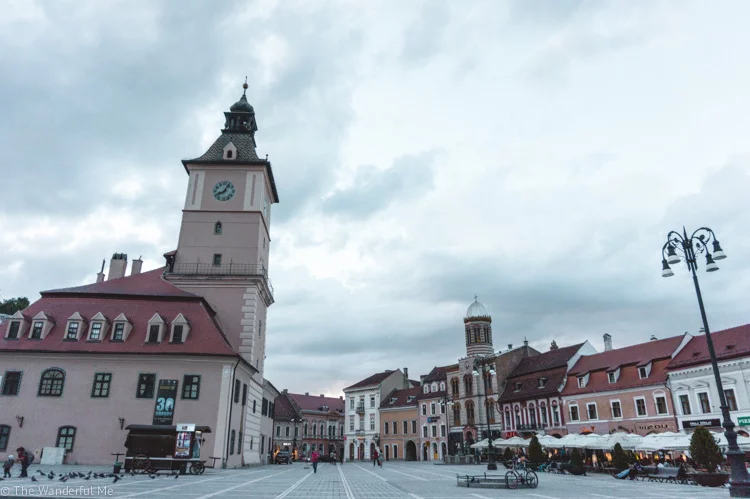
Want to visit a fairytale town? (Other than Wroclaw, Poland, that is. 😉)
Head to Braşov and you’ll step foot into a magical land filled with cute little buildings, beautiful architecture, traditional Romanian settings, and, yes, even mysterious vampires (ever heard of Dracula?)!
Known as the gateway to Transylvania, Braşov is one of my favorite destinations and a must-visit on any Eastern Europe itinerary.
Best Things to Do in Braşov, Romania:
- Explore Piata Sfatului, Braşov’s main square
- Visit the Biserica Neagra (Black Church), which is the largest Gothic Church in Eastern Europe
- Hike up Tampa Mountain for a gorgeous view (you can also ride the cable car up if you’re not into hiking)
- Walk the narrowest street in Europe (Strada Sforii, aka String Street)
- Marvel Catherine’s Gate and Braşov’s Medieval Walls
- Simply stroll through the picturesque streets of Braşov
Where to Stay in Braşov:
- Budget : Old Downtown Hostel • €10-12 — OR — Boemia Hostel • €12-13
- Mid-Range : Studio Brasov • €25-30 — OR — All Season Studios • €36-44
- Higher-End : Casa Veche • €51-65 — OR — Hotel Bella Muzica • €50-94
- Luxury : Superb Historical Center Brașov • €97-141 — OR — Vila Katharina • €81-122
Pro Tip : Braşov isn’t massive so if you have seen all you want to see in the city, venture out and do a day trip to Bran Castle (aka Dracula’s Castle), the Libearty Bear Sanctuary Zarnesti , traditional Romanian villages, or even into the Carpathian Mountains for some killer views.
Here are some highly-rated tours I recommend:
- From Brasov: Tour of Castles and Surrounding Area
- Romanian Mountain Villages Day Tour
- Bear Sanctuary and Bran Castle Day Trip
- Chauffeur Service in Brasov: You Decide where to Go
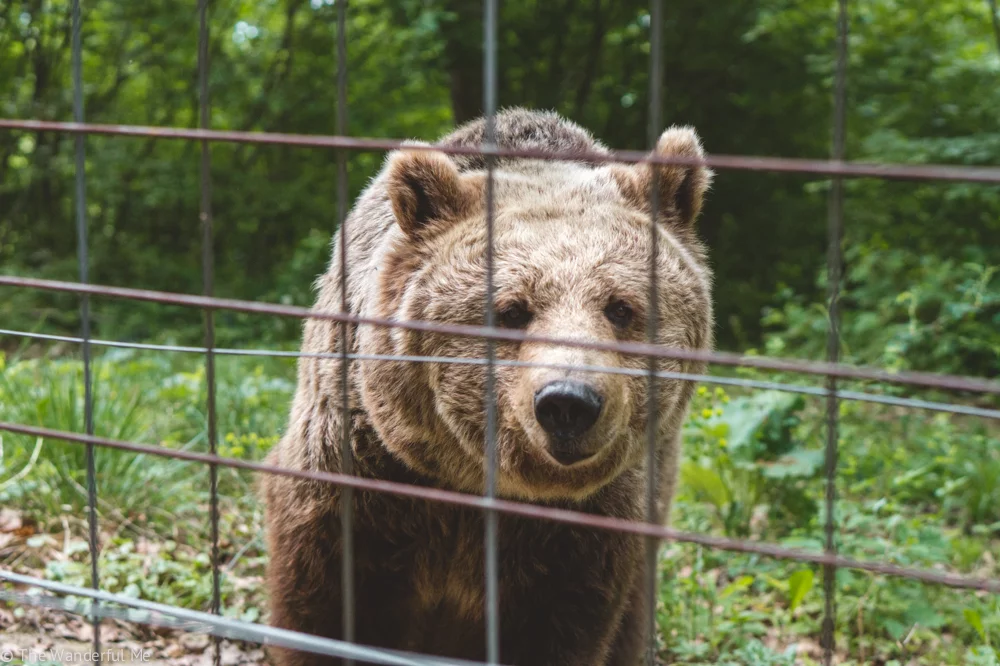
Day 25-28: Bucharest, Romania
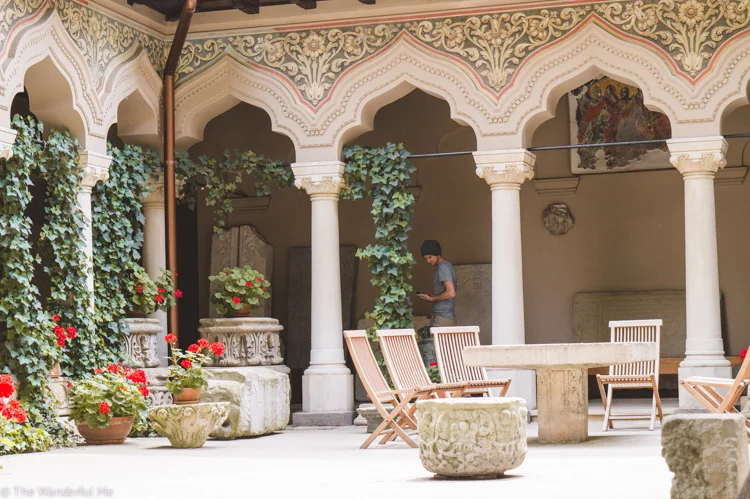
The glorious capital of Romania, Bucharest has tons to offer in terms of awesome things to do, cool sites, and mesmerizing attractions. Not to mention, loads of food options!
In fact, due to its beautiful architecture, classical art, ample green space, cute little cafes and eateries, and captivating history, Bucharest is sometimes referred to as the Paris of Eastern Europe. Even cooler, the city was literally modeled after Paris (the French architecture is abundant!).
Best Things to Do in Bucharest, Romania:
- Admire the Palace of Parliament (the second largest building in the world after the Pentagon)
- Wander about the Old Town
- Marvel at the history and architecture of Victoriei Avenue
- Take a step back in time and visit some of Bucharest’s churches (a few of the best are Stavropoleos, Coltea, Zlatari, Bucur, and Radu Voda)
- Relax and stroll through the local parks (there’s a lot to choose from!)
- Visit the Village Museum to get a peak at traditional Romanian life
- Go on a free walking tour!
Where to Stay in Bucharest:
- Budget : Antique Hostel • €8-38 — OR — Hostel Bauhaus Bucharest • €16-38
- Mid-Range : Vila Ana • €33-57 — OR — Anathea Apartment • €36-40
- Higher-End : Filitti Boutique Hotel • €58-110 — OR — Concorde Old Bucharest Hotel • €70-150
- Luxury : Hilton Garden Inn Bucharest • €107-200 — OR — Hotel Cismigiu • €109-158
Holy freakin’ moly, what a whopper of a blog post, amirite?
There’s a lot of info packed in these suggested 10-day, 2-week, and 1-month Eastern Europe itineraries but I truly hope they help you figure out where you want to visit!
Are you considering backpacking or traveling Eastern Europe soon? Or just looking for some inspiration? If you have any questions or need some other tips, stick ’em in the comments below!
Not sure what to check out next? Readers love these posts:
- The ultimate winter packing list for Europe
- 11 essentials to pack for a first trip to Europe
- The best list of awesome things to do in Salzburg, Austria
- 6 lucrative ways to make real money while traveling
- Top sites I use to score cheap flights
Like this post on the ultimate Eastern Europe itineraries? Pin it!

As mentioned above, this post contains affiliate links. Which means if you make a purchase through the links, this site receives a small commission at no extra cost to you. This helps us continue bringing you wanderful inspiration! Read our full disclosure here .
Related Posts

The Best 14-Day Greek Island Hopping Itinerary (2024 Guide)

Visiting Balos Beach on the Greek island of Crete
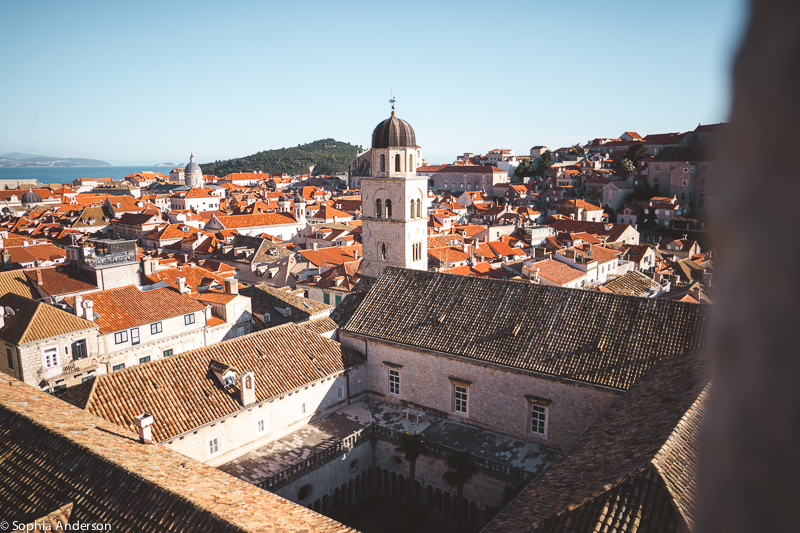
Discovering the Adriatic gems of Dubrovnik, Kotor and Budva
Article comments.
Kovalska Natali
If your time is limited but you want to get the most out of your trip in Europe, take a look at this itinerary. Everything is easily reachable by train.
Dinesh Chandel
Planning to do 2 weeks eastern eruope tour…we are school mates aged 45 , 11 in numbers, who do reunions abroad…
We prefer nature, partying, adventure activities, ……def not into meausum and religious place visiting….
We intend to start from Istanbul, do Hungary, Romania, Ukraine …etc….
Inputs highly appreciated..
We would prefer budget model for exploration..
Thanks and regards
Hey Dinesh! Sounds like a fun trip! I’ve never been to Istanbul or Ukraine so I can’t recommend or give my opinion on those destinations but I can highly recommend Romania for outdoor adventures, mountains, hiking, etc. and Hungary for cultural activities, sightseeing, and delicious food scenes. Both Romania and Hungary are budget-friendly so you won’t have any trouble there! Additionally, if you’re looking for exceptional adventure activities, consider heading up to the Tatra Mountains between the border of Poland and Slovakia — beautiful landscapes and lots of hiking opportunities!
lisa barrows
Determining the travel time, train route and destinations are important first steps to your Interrail adventure. We advise you to look at these steps before buying your Interrail pass. After all, you can decide which ticket suits you best when you know all your destinations beforehand. There are many Interrail passes you can choose from, and all of them differ in terms of validity and number of travel days. Some passes are valid in one country, but there are also tickets that you can use to travel with Interrail throughout Europe. You can buy a ticket which allows you to travel throughout Europe for 10, 15 and 22 days or even 1 to 2 months.
Very detailed itinerary giving three options. Should be bookmarked for an easy reference to the travel to Eastern Europe region
Vaskar Bhattacharya
Thanks for the captivating source of information.
Just wanted to enquire about the budget for a 10-day solo trip to Eastern Europe. Do you conduct the same?
I am from India (Kolkata to be precise)
Hi Thanks for the detailed itenary for three options i can choose last option i am solo traveller and Just wanted to enquire about the budget for 4 weeks or month do conduct the same or suggestion plz
i am from india (Hyderabad)
Leave a Comment Cancel Comment
Sign me up for The Wanderful Me newsletter!
This site uses Akismet to reduce spam. Learn how your comment data is processed .
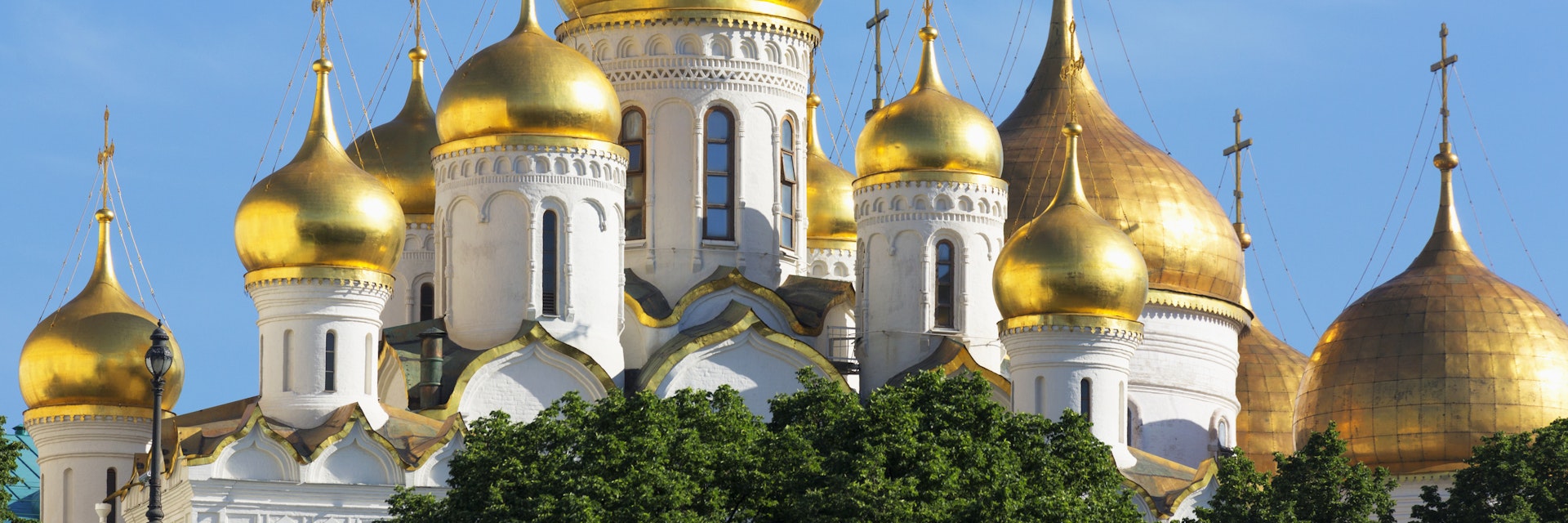
Getty Images
Eastern Europe
From soaring mountains to golden sands, Eastern Europe reveals a tapestry of quaint and contemporary cultures – always with enough rough edges to keep you intrigued.
Attractions
Must-see attractions.
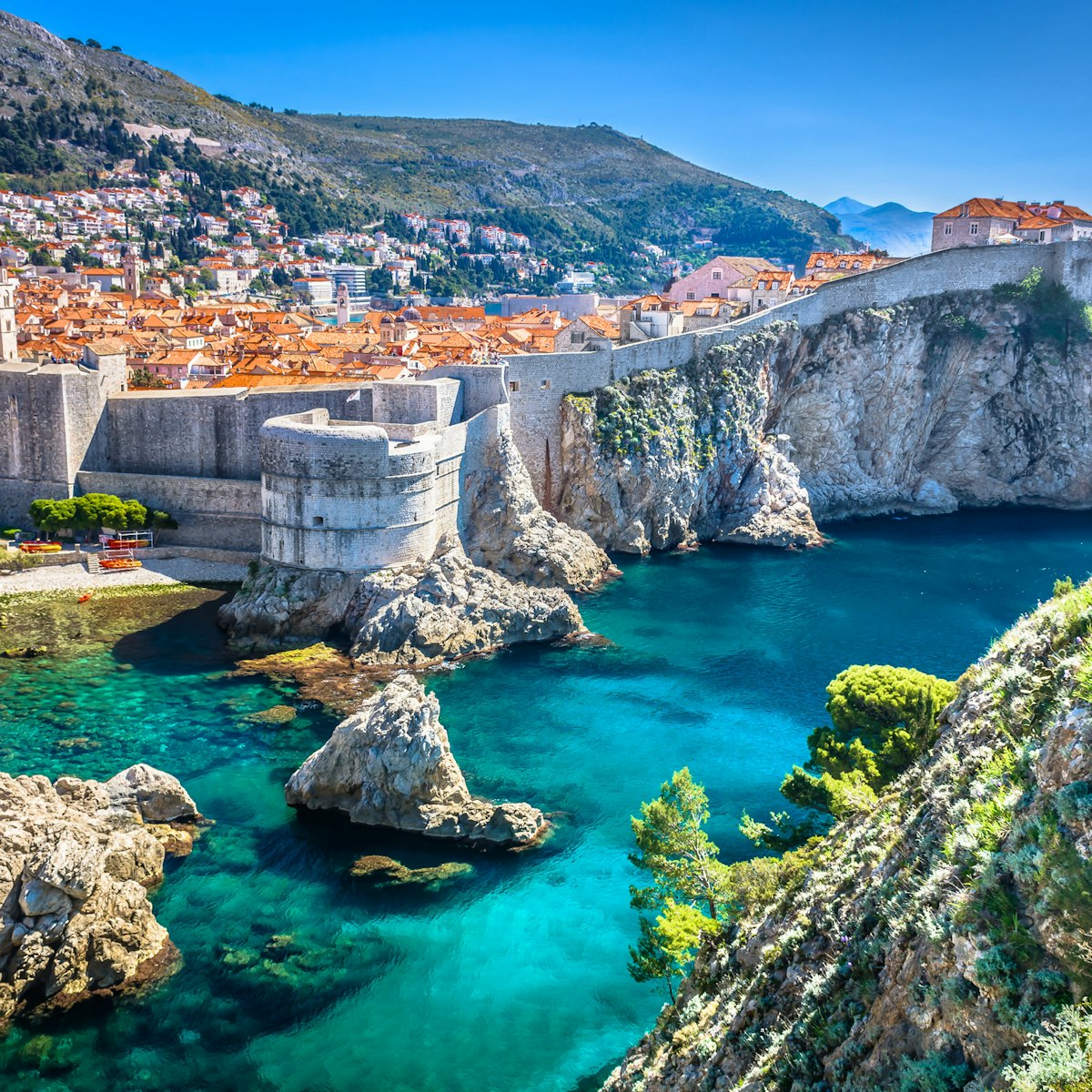
City Walls & Forts
No visit to Dubrovnik is complete without a walk around the spectacular city walls that encircle its historic core. They're among the finest in the world…

Diocletian’s Palace
Taking up a prime harborside position, the extraordinary complex of Diocletian's Palace is one of the most imposing ancient Roman structures in existence…
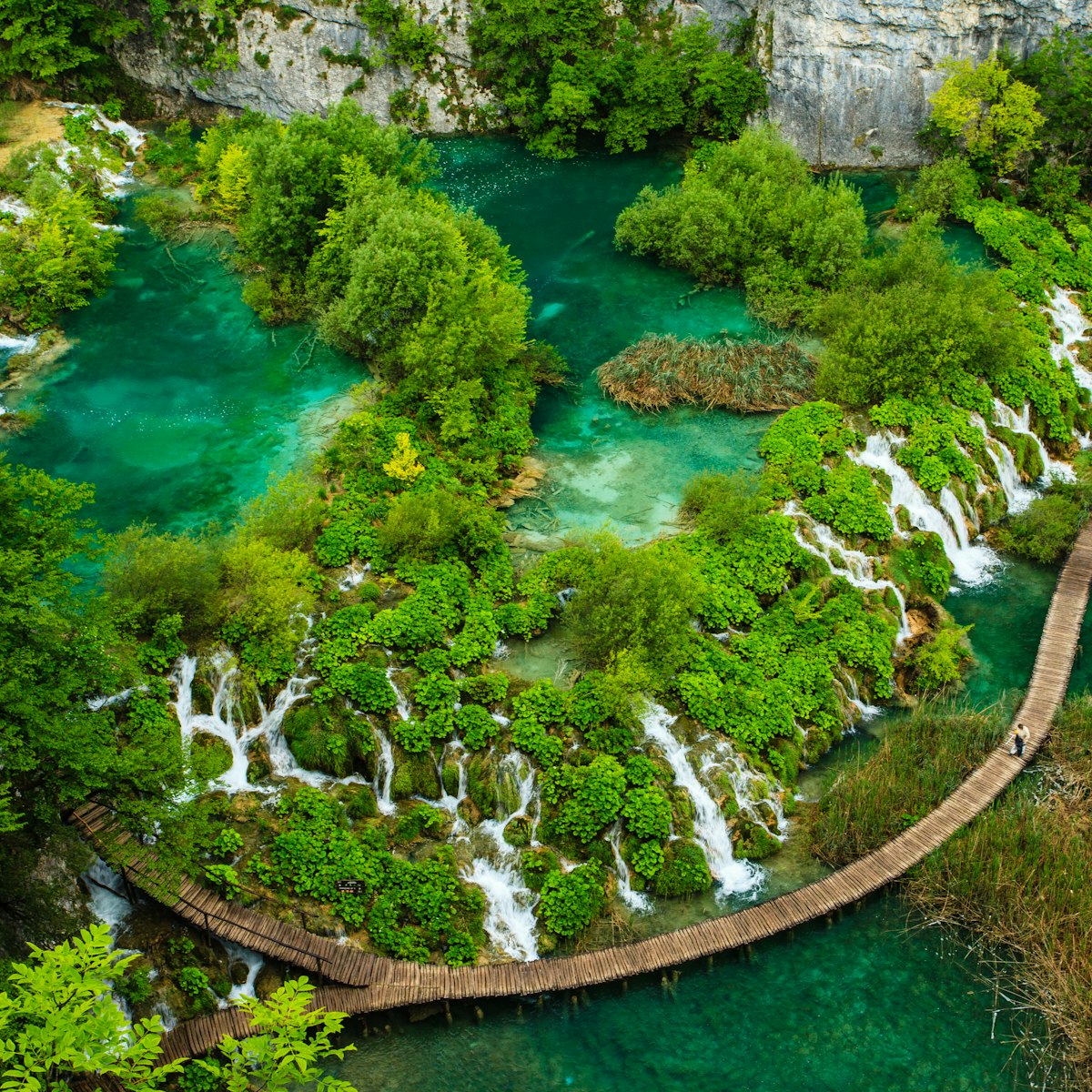
Plitvice Lakes National Park
By far Croatia's top natural attraction and the absolute highlight of Croatia's Adriatic hinterland, the Plitvice Lakes National Park is a glorious…
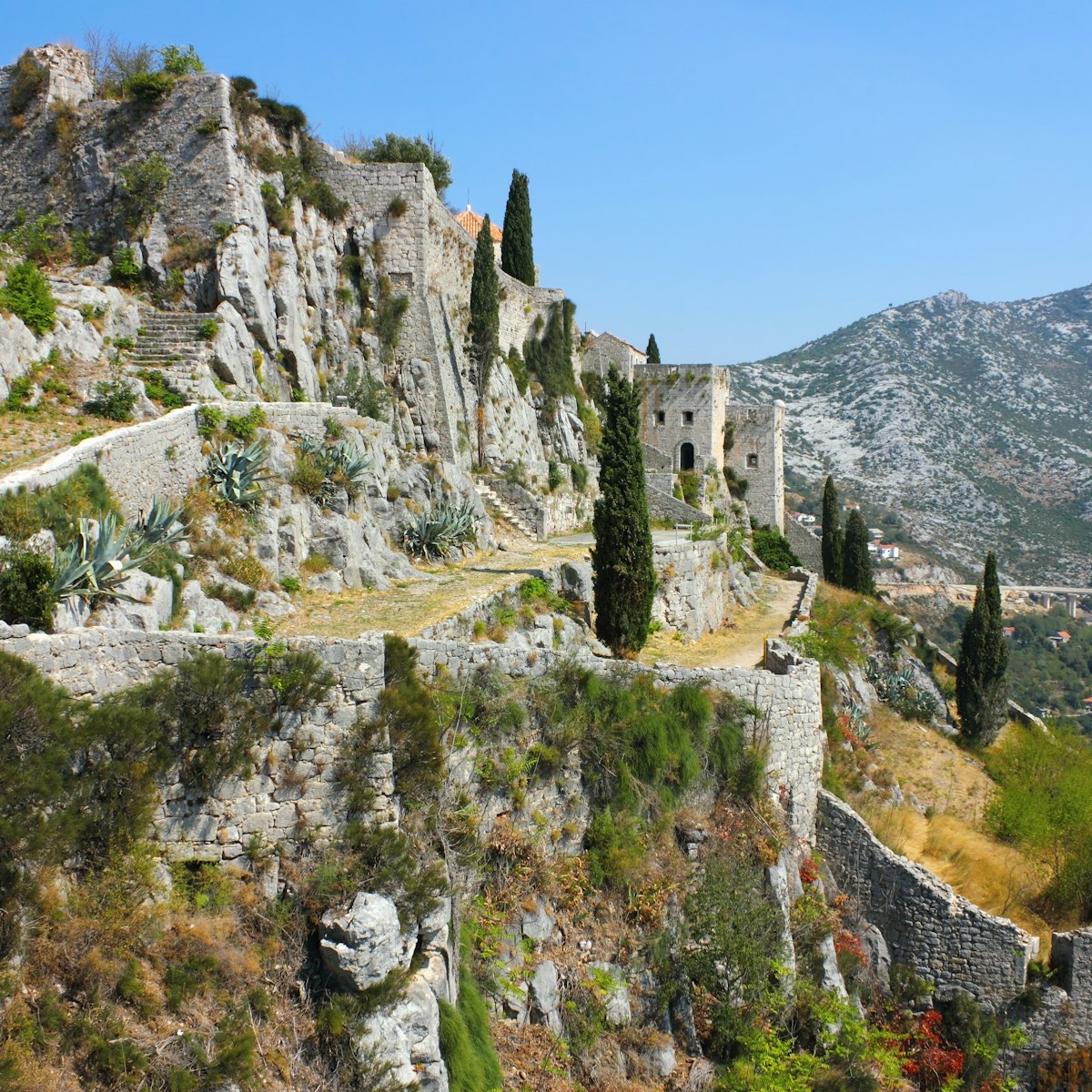
Klis Fortress
Controlling the valley leading into Split, the imposing Klis Fortress spreads along a limestone bluff, reaching 1260ft (385m) at its highest point. Its…
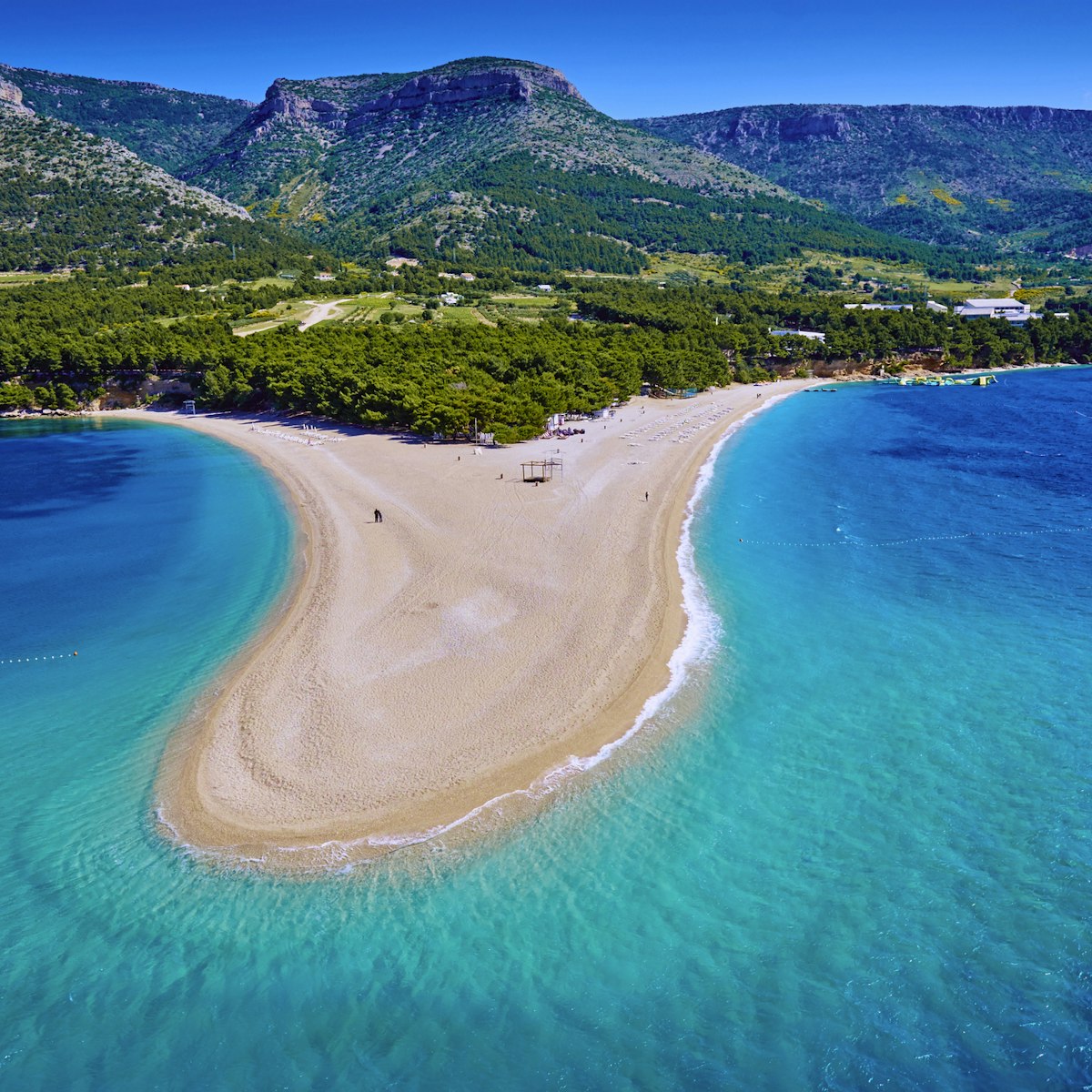
Zlatni Rat, Croatia's most photographed beach, extends like a tongue into the sea for about a quarter of a mile (400m). Despite the hype and constant…

Hill of Crosses
Lithuania's fabled Hill of Crosses is a symbol of defiance as much as a pilgrimage site. More than 100,000 crosses have been planted on this low hill,…
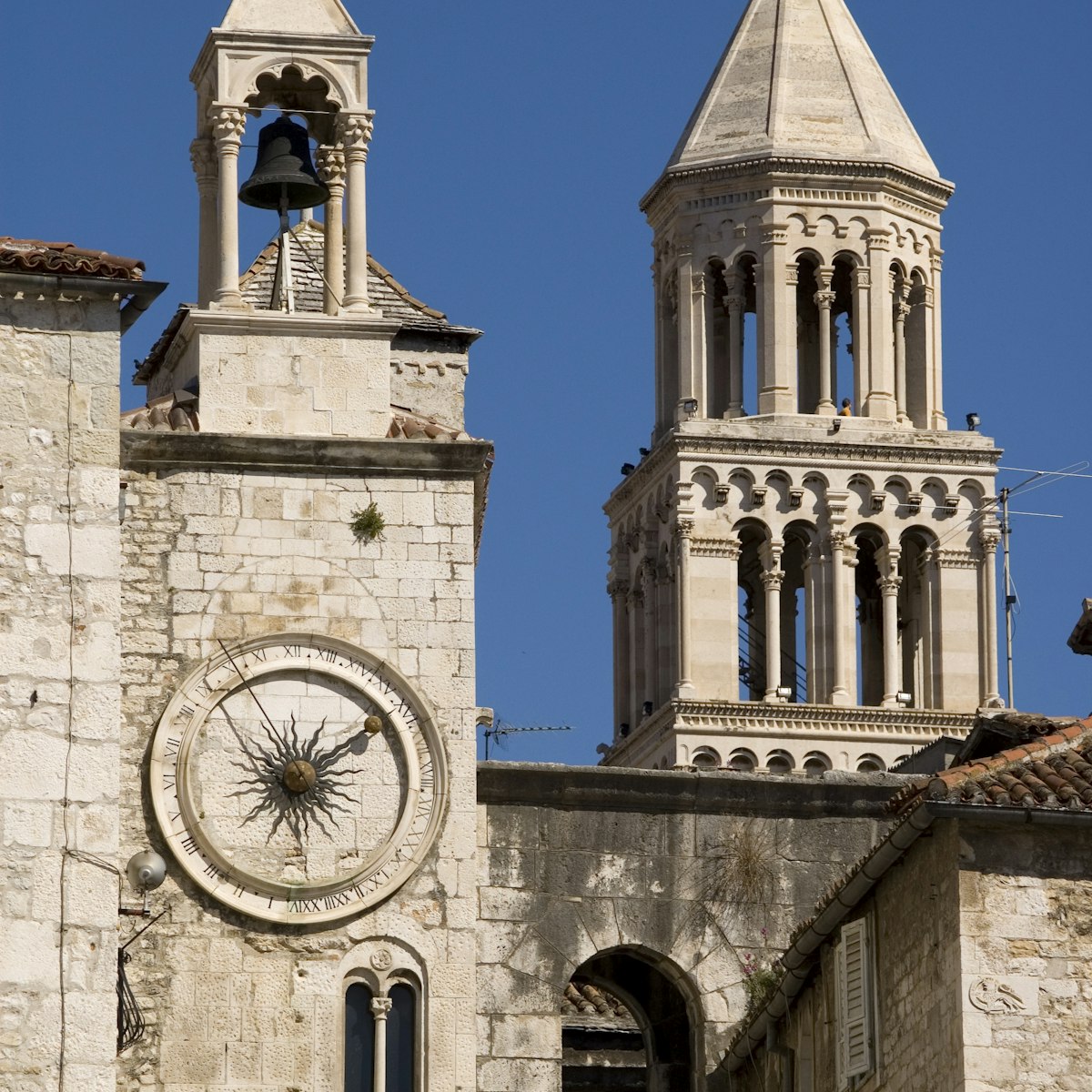
Cathedral of St Domnius
Split’s octagonal cathedral is one of the best-preserved ancient Roman buildings still standing. It was built as a mausoleum for Diocletian, the last…
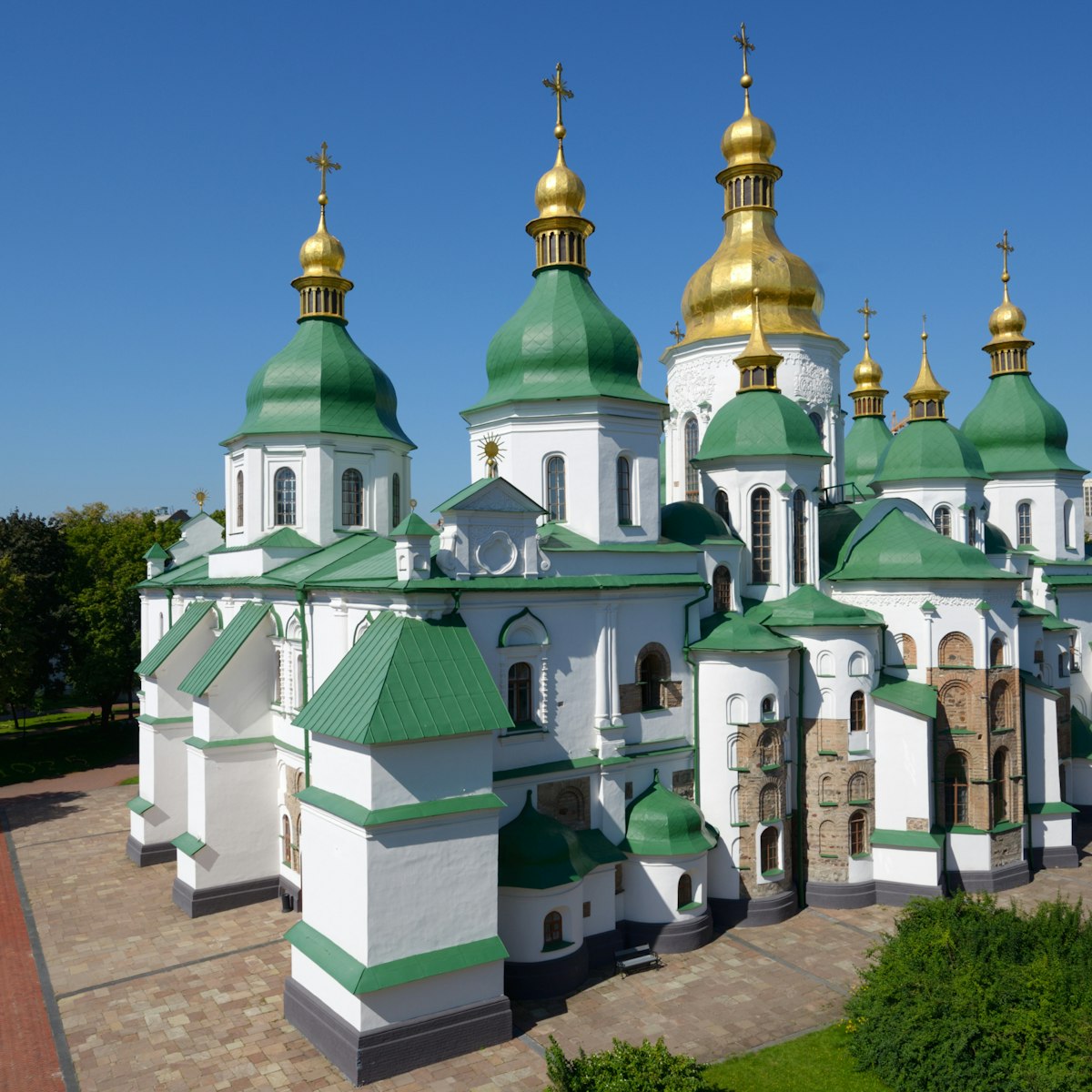
St Sophia's Cathedral
The interior is the most astounding aspect of Kyiv's oldest standing church. Many of the mosaics and frescoes are original, dating back to 1017–31, when…
Latest stories from Eastern Europe
Filter by interest:
- All Interests
- Adventure Travel
- Art & Culture
- Beaches, Coasts & Islands
- Food & Drink

Sustainable Travel
Nov 27, 2019 • 1 min read
Zaha Hadid Architects has won an open international contest to design a major new rail terminal in Tallinn, Estonia.
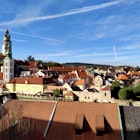
Nov 27, 2019 • 5 min read

May 17, 2019 • 6 min read
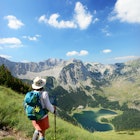
Mar 28, 2019 • 5 min read
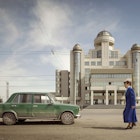
Jun 13, 2018 • 1 min read
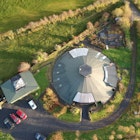
Nov 30, 2017 • 5 min read

May 29, 2012 • 4 min read
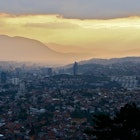
May 25, 2012 • 3 min read
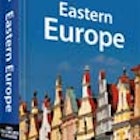
Oct 20, 2010 • 4 min read
Purchase our award-winning guidebooks
Get to the heart of Eastern Europe with one of our in-depth, award-winning guidebooks, covering maps, itineraries, and expert guidance.
Eastern Europe and beyond
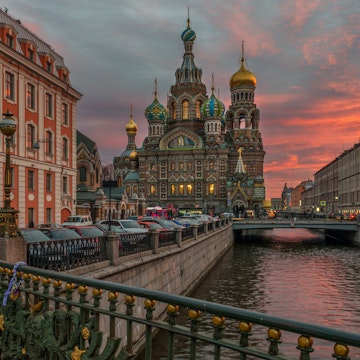

- Meet the Team
- Work With Us
- Itineraries
- Italy Travel Guide
- Hawaii Travel Guide
- Travel Tips
Attractions
17 best places to visit in eastern europe.
When you’re planning a trip to Europe , most of the places you initially think of visiting are in Western Europe: Paris, London, Rome, Barcelona, and the list goes on. But we sometimes forget that there is a whole other side of the continent waiting to be explored!
There are dozens of amazing places to visit in Eastern Europe, too. Over the past few years, we’ve been exploring Eastern Europe quite a bit and we’ve found it to be a huge melting pot of cultures, languages, and people, with amazing food, incredible wine, and great things to explore.
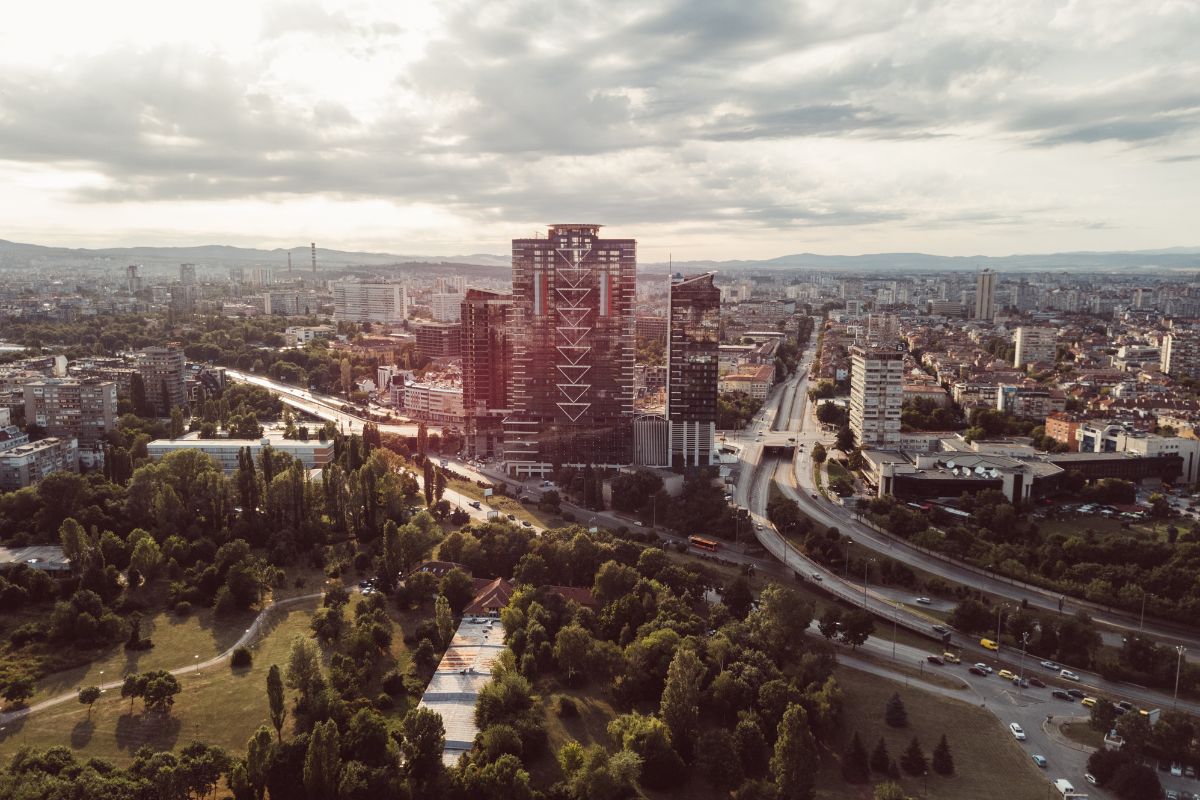
⇒ Want to plan a trip to Croatia? Check out our Croatia travel guide , our 4-day Dubrovnik itinerary , the top things to do in Zagreb and what to do in Pula to get started.
In fact, Eastern Europe is so full of amazing architecture, landmarks, cuisine, and sites to see that you definitely don’t want to leave it off your bucket list.
We’ve included in this list seventeen of the top places we have enjoyed traveling to. Check out our list below for some inspiration!
Table of Contents
17 of the Best Places to Visit in Eastern Europe
1. prague, czechia (czech republic).

Whether it’s for its medieval architecture, its Bohemian culture, or because it’s the beer-drinking capital of the world, there’s something for every kind of traveler in Prague.
There’s a good reason everyone loves this city. The Old Town is beautiful, with so many places to walk and admire. The castle towers over everything and the Vltava River flows through it all.
Charles bridge is probably the most iconic landmark in Czechia and one of the most recognizable bridges in the whole of Europe . This old bridge stands over the Vltava river in Prague, running for over five hundred meters, connecting two halves of this amazing city.
It is one of the most amazing examples of medieval gothic architecture in Prague and is also home to a few urban legends including convicts, crosses, and pacts with the Devil himself.
Start exploring in Old Town Square, where you’ll be welcomed by the medieval Astronomical Clock that will have everyone staring up on the hour, Gothic churches, bell towers, and colorful building facades. Maybe take a walking tour, which is really the best way to get acquainted with the city.
Tour you might enjoy: Best of Prague: City Walking Tour, Boat Cruise, and Typical Czech Lunch
2. Dubrovnik, Croatia

Dubrovnik is a city in Croatia that sits on the crystal blue waters of the Adriatic sea, making it one of the best seaside cities to visit in Eastern Europe.
The architecture here is a treat to the eye. It’s even nicknamed ‘the Pearl of the Adriatic’ due to the white sandstones used for building. There’s no better way to admire the city than walking atop the medieval city walls that still encapsulate the old town.
Not only is Dubrovnik a gorgeous place to visit, it’s also a pretty affordable destination for those wanting a taste of the Mediterranean lifestyle. Just make sure you go there on the shoulder season and be mindful of how many cruise ships are in port, as the city can really become flooded with tourists.
So, there’s a lot to see and do in this coastal city in Croatia . Check out our full guide to the beaches, restaurants, activities, and tours to take from Dubrovnik.
Tour you might enjoy: Exclusive: ‘Game of Thrones’ Walking Tour of Dubrovnik
3. Budapest, Hungary

One of the best-known capital cities in eastern Europe is Budapest , which is home to many amazing sites and attractions, like the Budapest Opera House – an amazing piece of new-Renaissance architecture modeled after the Vienna Opera House.
The city sits along the Danube River, which provides a scenic backdrop to the major attractions, like the neo-Gothic Parliament building, the former Royal Palace, Fishermen’s Bastion, and the gothic Matthias Church. The very moving memorial to Holocaust victims, the Shoes on the Danube, can also be observed along the promenade.
Budapest is also known for its unique ruin bars which are created inside abandoned buildings. And there’s a robust coffeehouse culture as well.
We like to explore the Hungary wine regions outside of Budapest as well. There are a lot of great wine regions to visit, especially the sweet dessert wines of Tokaj .
Tour you might enjoy: 1-Hour&30-min Budapest Evening or Night Sightseeing Cruise & Unlimited Prosecco
4. Lake Bled, Slovenia

Lake Bled in Slovenia is one of the most picturesque destinations to visit in Eastern Europe. It’s a great place to go to get away from the big city and enjoy a coastal getaway.
Perfect for honeymooners, backpackers, hikers, and more, you can visit this gorgeous lake and take in the stunning views while participating in all kinds of activities, like hiking, biking, and sightseeing. In the middle of this 2-kilometer lake is an islet with a church, and a medieval castle clinging to a nearby cliff.
With all the outdoor activities, the gorgeous hotels you can stay in, the medieval castle, and the many restaurants and cafes, Lake Bled is a great destination for a 2-4 day trip.
Due to its amazing scenery, Lake Bled is super popular with tourists, so make sure you book your flights and hotel well in advance. It’s not the most straightforward place to get to, so expect a few transfers as well.
Tour you might enjoy: Rafting in Bled
5. Hvar Island, Croatia
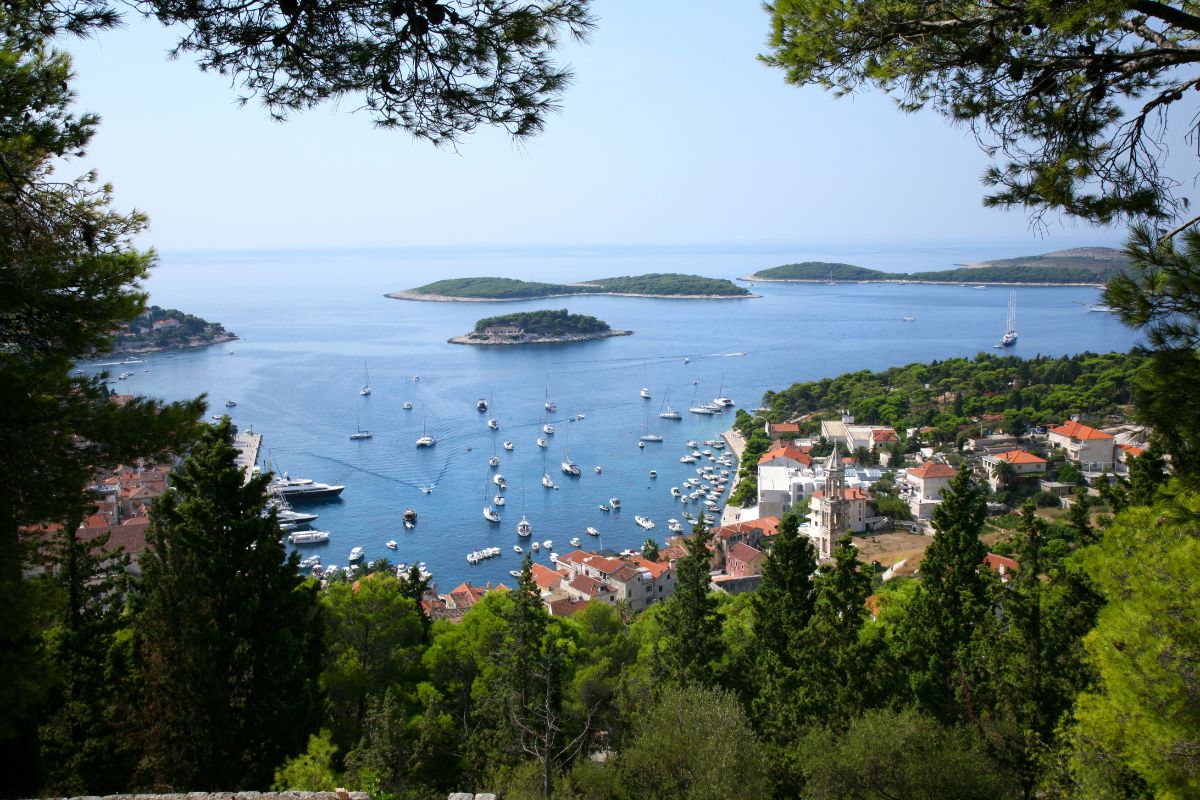
Hvar island can be found in the Adriatic sea and is one of the best summer resorts on the continent. From Mediterranean culture to Renaissance-era cathedrals, there’s something for everyone on this stunning island.
Take a walk through the lavender fields or visit one of the secluded beaches – you can truly relax and unwind on this luxurious island!
Tour you might enjoy: BLUE CAVE & 5 islands tour from Hvar
6. Transylvania, Romania

Deep within Transylvania, Romania , a tall, medieval structure looms over the tops of the forest that surrounds it.
Although the locals know it to be a fortress and a modern-day museum, this castle is also known as Dracula’s Castle! Its actual name is Bran Castle, and it is said to be the inspiration for the castle seen in the famous Bram Stoker novel Dracula.
Although the inspiration for Dracula himself (Vlad The Impaler) is said never to have set foot in this castle, thousands of visitors still come to Bran Castle to learn more about one of literature’s most iconic characters.
Tour you might enjoy: Peles Castle , Bran Castle , Rasnov Fortress,Sinaia Monastery Tour from Brasov
7. Bucegi Natural Park, Romania
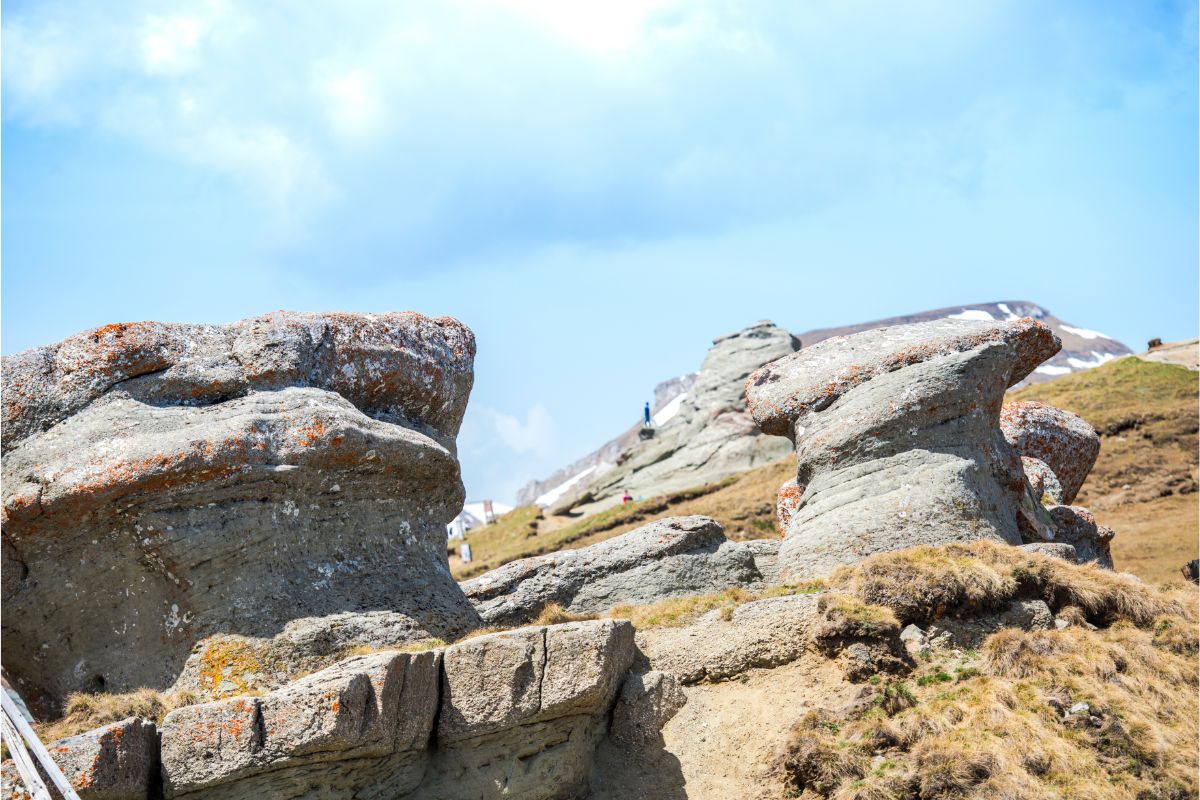
For hikers and those who love to visit some of the natural wonders of the world, Bucegi Natural Park in Romania is filled with plenty of natural scenery and amazing environments to visit.
This park is filled with limestone slopes, alpine rivers, dry grasslands, and beech forests. It’s a gorgeous place to get lost in and here you can wander for hours and feel completely cut off from the hustle and bustle of everyday life.
As a result, many visit these natural reserves and protected areas within the park just for somewhere to unwind.
The two most iconic landmarks found within the park are two natural stone formations known as the Babele and Sphinx.
These massive stones are visited every single year by thousands of tourists due to their uncanny resemblance to the Sphinx of Giza and traditional mushrooms.
Don’t want to walk? Then just hop on a cable car and spend the whole day enjoying the view from the crest of the Bucegi mountains!
8. Plitvice Lakes, Croatia

Back in Croatia, one of the country’s most popular tourist attractions is Plitvice Lakes National Park . It was granted its UNESCO World Heritage status way back in 1979 and is home to a long chain of terraced lakes, all joined by various waterfalls.
You can walk along the many hiking trails or walkways to enjoy the stunning scenery on offer, circle around this limestone canyon, or even take a trip out onto the water in one of the many boat tours on offer.
If hiking and nature are your thing, then Plitvice Lakes is definitely the ideal place to go in eastern Europe.
Tour you might enjoy: Plitvice Lakes National Park Admission Ticket
9. Vilnius, Lithuania

The capital of Lithuania, Vilnius is one of the most beautiful cities in the world due to its mixture of medieval and baroque architecture. It contains one of the largest surviving medieval quarters in Europe, which for us is reason enough to visit.
This is easily one of the most diverse cities when it comes to architectural eras and styles, from the neoclassical Vilnius Cathedral to the gothic St. Anne’s Church and the 16th-century Gate of Dawn.
It’s the ideal city to explore to try out all the food and art on offer, drink some of the fantastic beer, go bar hopping, and soak in all the sightseeing you can.
Tour you might enjoy: Full-Day The Hill of Crosses Tour from Vilnius
10. Bratislava, Slovakia

One of my favorite Eastern European cities for a long weekend break in Bratislava . It has a similar feel to other cities, like Budapest, especially as it also lies along the Danube river, but it’s much smaller and easier to get around. It also has a very nice pedestrian-only, 18th-century old town with a lot of charm.
Start off with a visit to the reconstructed Bratislava Castle, perched atop a hill overlooking the old town and the Danube, visit St. Elizabeth’s Church (aka the Blue Church), and spend plenty of time wandering around the old town, where you’ll see monuments like the Old Town Hall, St. Michael’s Gate, and the whimsical Cumil – a bronze statue of a man hanging out the top of a manhole.
If you can manage to dodge all the Stag parties, you’ll have a fantastic time in this city. The reason so many Europeans and Brits come to this city for their parties is the abundance of great bars and nightclubs. Beer is also exceptionally cheap.
Tour you might enjoy: Bratislava Foodie Tour
11. Belgrade, Serbia

The capital of Serbia, Belgrade is full of wonders and has a lot to offer. First of all, there is the most amazing Belgrade Fortress named Kalemegdan that was built in 535 BC and it can offer you a nice view of the city and some great historic landmarks.
Next take a stroll down Skadarlija, a pedestrian old street that is always brimming with activity. You’ll notice the architecture is a bit eclectic, with plenty of bulky Communist building blocks, while there is the contrast of art nouveau buildings. Stop at cafes, do some people watching, and stay for the nightlife.
Belgrade is famous for its nightlife and is often called the city that never sleeps. The most famous clubs are Freestyler and Mr. Stefan Braun . However, the clubs placed at the Sava and Danube rivers are becoming more and more popular. We’ll just mention some of them like Dragstor, Blaywatch and Acapulco.
Serbian is also known for its “kafanas“ – bars where you can enjoy and have fun listening to traditional live music. Skadarlija has some famous kafanas.
This area is also a great place to try delicious Serbian food. Visit the restaurant Tri Šešira (Three Hats) built-in 1864. It’s a traditional restaurant that offers as much history as it does great food. Make sure to try some great steaks and unforgettable kaymak.
Tour you might enjoy: Belgrade Sunset Cruise
12. Perast, Montenegro
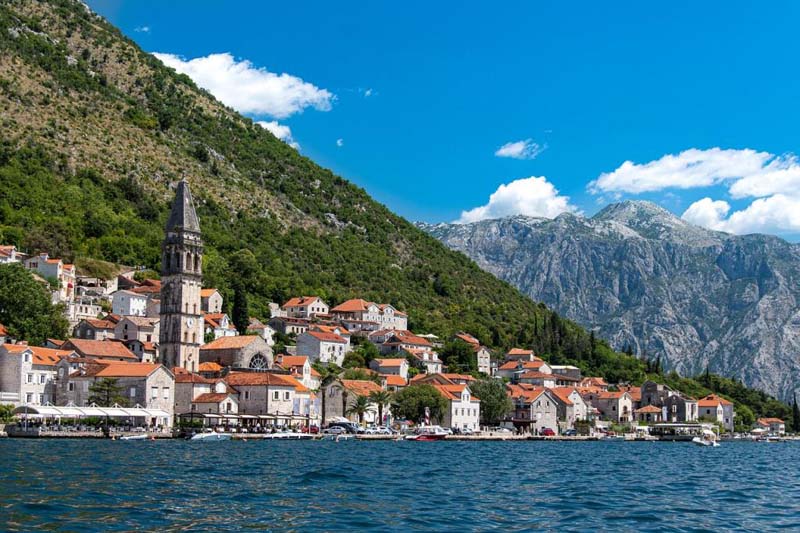
Perast is only 20 minutes away from Kotor – another city you should definitely explore if you have the time – and Perast is a quaint waterfront town. This place is declared a World Heritage Site by UNESCO. It is quite a small town with less than 400 inhabitants.
Once called “The city of ghosts” now is very popular among foreign tourists. With scenic views over two small islands and beautifully restored stone villas, it’s no wonder that one of the world’s biggest hotel groups Iberostar opened its hotel in a restored 18th-century palace.
There are only a few museums, cafes, and winding streets, but the food is great! Make sure to try the famous Perast cake made of almonds. Enjoy the scenery and peacefulness of this town.
Tour you might enjoy: Kotor Cruise: Perast, Our Lady of The Rocks, Mamula, Blue Cave, Porto Montenegro
13. Kavarna, Bulgaria

Kavarna is a small port town, situated on the Black Sea to the Eastern and Southern sides. There are magnificent cliffs combined with relaxing beaches. Also, there are fissures and caves to be explored as well, but if you’re not up to it, you can simply enjoy the tranquil landscapes.
What is more, Kavarna is an ancient town in Bulgaria, but after a severe earthquake part of it was drawn into the sea. Luckily, in Roman times it was rebuilt 3km inland. Today, Kavarna offers a lot to see and experience.
There are plenty of restaurants with local food and drinks that you should taste, and there is even a Fish Festival during the summer, offering you the best products of the sea.
Plus, if you like golfing, you can easily play and enjoy this sport on one of the world’s best golf courses .
14. The Skull Tower Of Nis, Serbia

For those who love to indulge in the history of all the places they visit, the Skull Tower of Nis is definitely a destination for you.
Located in the city of Nis in Serbia, there is a large stone structure built with the embedded human skulls of Serbian rebels during the early 1800s.
The tower was dismantled in the 1860s but was restored after the Ottomans withdrew from Serbia. Now, the tower is over four meters high and is thought to contain over 50 individual human skulls.
Although this landmark may be too grisly or morbid for some, those with a passion for history are sure to be fascinated by this.
Skull Tower is said to attract somewhere between 30,000 to 50,000 visitors every single year, making it one of the most visited sites in Serbia – so join the masses and take a trip to Serbia to see it yourself.
Tour you might enjoy: Nis Sightseeing Tour
15. Wieliczka Salt Mine, Poland

Another UNESCO World Heritage Site is the Polish Historic Monument of the Wieliczka Salt Mine.
This excavated mine has been transformed into an amazing attraction that doubles as a museum for the site’s history as a salt mine in the most stunning way possible.
There are dozens of statues and artwork carved out of rock salt, some of which were created by the previous miners themselves. There is also a two-mile tour of the corridors, chapels, and underground lake that dives deep, deep below the surface. You could spend hours lost in this amazing monument.
Tour you might enjoy: Wieliczka Salt Mine Guided Tour from Krakow
16. Auschwitz, Poland

Getaways don’t always have to be vacations. There are a lot of ways to educate ourselves and learn about various cultures and histories while on a trip, as well.
One of the most important museums to visit is the Auschwitz-Birkenau State Museum in Poland. This museum was originally a concentration and extermination camp run by Nazis during the Nazi occupation of Poland between 1939 to 1945.
The museum acts as a memorial for those who lost their lives (a reported 1.1 million people in total) during the Holocaust. It’s a poignant and moving place to see, so you can really understand the atrocities that took place.
Although Auschwitz may not be your first ideal ‘vacation’ spot, there’s no denying that this is one of the most important places in Europe (perhaps even the world) and by visiting this museum, you can learn more about the tragic events that took place there and pay your respects to victims that died there.
Tour you might find interesting: Auschwitz & Birkenau: Live-Guided Tour with Transportation and Hotel Pickup
17. Novi Sad, Serbia

This city of Serbia is situated a bit more to the North and it is the capital of the province of Vojvodina. This is mainly a student city, but it has a lot to offer to the tourists as well.
If you’re a history buff, you can visit Petrovaradin Fortress , right across the Danube river, or have a great time in one of the many museums Novi Sad has. Also, you can take a stroll down the Danube river on the quay and simply enjoy watching people and the steady flows of the river.
What is more, if you visit Novi Sad during the summer, you can enjoy one of the biggest festivals in Europe – Exit – and witness a truly festive atmosphere.
Tour you might enjoy: From Belgrade: Novi Sad and Karlovci Sremski Wine Tasting

Final Thoughts
So, those were our recommendations for the best places to visit in eastern Europe. Take a look over our picks and find out which place is the ideal vacation spot for you!
Be Prepared For Travel Planning is the most important part of any successful trip. Do it the easy way:
🧳 Travel Packing List | ✔️ Why You Need Travel Insurance | ✈️ What to Do Before You Leave Home
- Find and book the best hotel (our favorite booking site is Expedia)
- Research flight options (our favorite tool is Skyscanner )
- Book a tour (we always use Viator to find the best tours)
- Rent a car through Discover Cars (they search the best deals for you!)
YOU MIGHT ALSO LIKE

How to Plan a Trip to Europe (2-Week Europe Itinerary)

8 Unique Places to Stay in Europe & UK

Ultimate Summer Europe Packing Guide

21 Most Charming Small Towns & Cities in Europe
Like this post? Why not save it to Pinterest? FOLLOW US on Pinterest , Instagram , Facebook for more great travel inspiration and tips.

Leave a Reply Cancel reply
Your email address will not be published. Required fields are marked *
Save my name, email, and website in this browser for the next time I comment.
- Travel Resources

2 Weeks in Eastern Europe: 5 Itineraries
DISCLAIMER: This post might have links to travel services and products that we enjoy. We might make a commission from it at no extra cost to you.
Despite being frequently overshadowed by its Western counterparts, Eastern Europe deserves a slot on your travel bucket list. From charming towns, natural beauty, and vibrant culture, I’ll highlight why this region should be on your radar.
The Caucasus Mountains, Adriatic, Caspian, and Black seas on the South and the Barents and Baltic seas on the North border the Eastern part of Europe. The countries within Eastern Europe include Bulgaria, Belarus, the Czech Republic, Poland, Hungary, Moldova, Romania, Ukraine, Slovakia, and the Western portion of the Russian Federation.
You can see a lot of places in just 2 weeks in Eastern Europe. Choose countries that are near one another to save some time. Go see some castles, eat local dishes, go wild swimming or rent a boat and enjoy the ocean.
ALSO READ: 2 weeks in Poland and Things to know before going to East Europe
THINGS TO KNOW BEFORE VISITING EAST EUROPE

Eastern Europe is a massive region. It’s understandable if you feel a bit overwhelmed planning your trip. Creating a travel itinerary and researching each destination shouldn’t be too stressful of a task. It should be exciting, something to look forward to.
To help you ease some of the stress and confusion, I put together some tips and things that you should know about spending a holiday in East Europe.
When is the best time to go to East Europe
Depending on the activities you plan to do, you can visit Eastern Europe anytime. For example, if you prefer to spend time on the beach and the coast, spring to summer are two great time to visit. The destination perfect for this time of the year is Greece, Montenegro, Albania, and Croatia.
But if you want to do some hiking in the autumn season or skiing in winter, Georgia, Bosnia and Herzegovina, Romania, Serbia, Bulgaria, Slovakia, Slovenia , Montenegro, and Poland offer affordable yet fantastic ski resorts.
Are 2 weeks enough for East Europe
14 days is not enough time to explore an entire European region. Sure, the continent is small with a fantastic transportation system, but there is so much to see. To make the most out of your time, it’s best to decide first which activities you want to do, attractions to see, and country you prefer.
With that information, you can plan your 2 weeks in Eastern Europe much better. Choosing the right mode of transportation will either make your trip better or worse. For example, although most parts of Europe have an open border policy, not all countries in the east practice this.
Meaning if you rent a car in Croatia, bringing it all the way to Albania might be an easy task. I’ll discuss more about transportation in the next section.
Getting around
If you want to rent a car, consider leasing from major brands such as Avis, Budget, Hertz, Sixt, Europcar, and AutoEurope. From there, you can check which companies will allow you to take the vehicle in all the countries you want to see.
Let’s say you picked up your car in Zagreb, but your trip ends in Tirana. Ask AutoEurope if you can pick up from Croatia and drop off the vehicle in Albania.
But if that sounds like too much trouble, another option is to rely on buses, trains, and planes . You can also rent a car in each country as you discover the things on your list, drop it at the airport or any city before you cross the border, and then get another car at your next destination.
Language and currency
Eastern European countries under a single currency called the euro include Croatia, Estonia, Greece, Latvia, Lithuania, Montenegro, and Slovakia. Whereas Albania, Bosnia and Herzegovina, Bulgaria, Czechia, Hungary, Romania, and Serbia are the countries that have decided to remain with their own currencies.
Many Eastern European countries are members of the EU and implement the Schengen State visa policy. This means that if you’re travelling to Greece, Poland, Lithuania, Estonia, Latvia, Croatia, Czechia, Slovakia, Hungary, and Estonia, and your hold a passport from the US, UK, Japan, Australia, New Zealand, Malaysia, South Korea, Singapore, and many places in Latin America, you can enter and travel for up to 90 days .
Albania, Bosnia and Herzegovina, Montenegro, Romania, Bulgaria, and Serbia are not part of the Schengen State (although some are part of the EU). These countries pretty much have the same visa policy as Schengen, with some differences.
For example, Albania allows US citizens to stay for up to 1 year, while EU passport holders can stay for 90 days. Serbia allows some other countries, such as Russia, to stay for 30 days.
On the other hand, many of these countries (non-Schengen member) allows substitute visa. This means that if you hold a valid visa from the UK, US, and Schengen, these visas are valid in these countries too. Each country accepts different substitute visas and validity of stay, so check these before going .
- Serbia visa policy
- Albania visa policy
- Bosnia and Herzegovina visa policy
- Montenegro visa policy
- Schengen State visa policy
What is the average cost for 2 weeks in Eastern Europe
The Baltics and probably Greece might be the most costly in Eastern Europe, but it’s still cheaper than in West and Central Europe. Food, transportation, and tours are pretty much the same cost across the eastern region. The accommodation is where you’ll notice a bit of difference.
For a mid-range budget, $1,300 is good for 14 days in East Europe . You can enjoy a private room and eat out throughout your trip. If you need to travel on a shoestring budget, you can do it at $900 while sleeping in dorm rooms and most eating street food or dining at local restaurants.
If you plan to spend 2 weeks in Eastern Europe as a celebration, you can do it as a luxury trip with a budget of $2,000 . With this budget, you can stay in four or five-star hotels, eat out, and enjoy private tours.
Other basic travel tips
Pinned map of top things to see in east europe.
Albania, Bulgaria, Croatia, Czechia, Estonia, Greece, Hungary :
Latvia, Lithuania, Montenegro, Poland, Romania, Serbia, Slovakia :
Click the icon on the top right to enlarge the map. Credit: map data: Google
2 WEEKS IN EASTERN EUROPE ITINERARY
If you are planning to travel for 14 days in East Europe but need some direction, this guide is for you. With the help of this two-week itinerary for East Europe, which highlights the best sights, you can plan the perfect getaway with your friends, family, or even yourself.
Eastern Europe has lovely mountain villages, magnificent castles and palaces, and stunning beaches. To help you devise your itinerary, I’ve provided 5 sample itineraries that you may select from and adjust to match your 14 days in East Europe.
Itinerary #1: The Baltics – Lithuania, Latvia, Estonia
The Baltics, commonly known as the Baltic States, are three nations: Lithuania, Latvia, and Estonia, located on the Eastern shore of the Baltic Sea. In addition to providing a fairy tale experience in its small villages and forests, the Baltic countries give a more authentic look into the history of Eastern Europe.
From its medieval roots to the tragic battles for independence. Your 2 weeks in Eastern Europe trip here will captivate you at every turn. We have a specific article on how you can spend 2 weeks in the Baltics , there are two itineraries you can choose from.
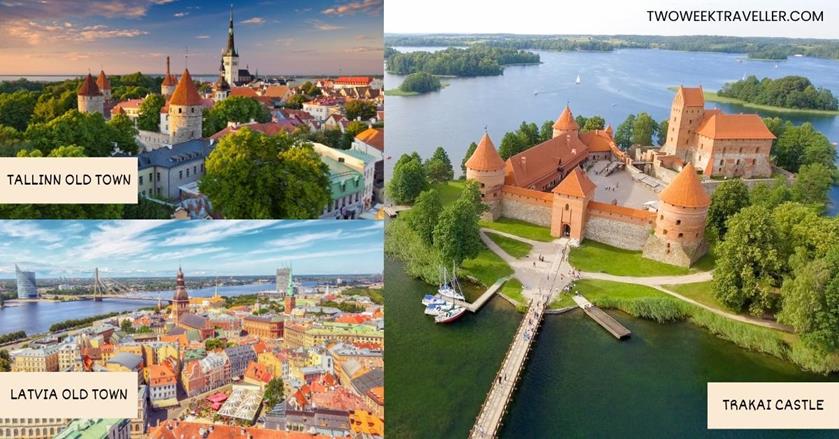
Estonia for 5 days
Start your adventure in Tallinn, the capital of Estonia, where you may stroll around The Old Town, designated a UNESCO World Heritage Site in 1997 and features ancient churches and cobblestone streets. There is much to see and discover outside the city, including the Aleksander Nevski Cathedral, the pink Toompea Castle, and the Lennusadam Seaplane Harbour Museum.
Latvia for 4 days
Riga, the capital of Latvia, is a crossroads of many countries and civilisations. To discover the city’s diversity, visit Riga’s Central Market, the biggest indoor market in Europe with over 3,000 stalls. Here, you can choose souvenirs, sample authentic street food, or consume fresh goods from nearby Latvian farms.
Lithuania for 4 days
End your vacation in Vilnius, Lithuania’s capital, where you can begin your day with some pastries from the historic Hales Market. Ensure to visit its primary landmark, the 14th-century Trakai Castle, in the middle of Lake Galve. You can stop by the historical Gate of Dawn and check out the Museum of Occupations and Freedom Fights during your stay here.
Begin your trip in Estonia, and take a 50 min direct flight from Tallinn to Riga to reach Latvia. Afterwards, fly from Riga to Vilnius for around 50 min to arrive in Lithuania. Alternatively, you can opt for bus services such as Lux Express or car rental for convenient transfer between countries, which often takes roughly 4-5 hr.
Itinerary #2: The Beach – Greece, Croatia, Albania or Montenegro
If you’ve been daydreaming about pristine beaches and considering travelling to a unique location, take this as your cue to get tickets. If you visit Eastern Europe’s magnificent cities and attractions, you’ll discover more than just its numerous islands and breathtaking beaches. Although tourism is still growing in this region, it offers a cheap and beautiful getaway.

Greece for 5 days
Greece is best known for its fascinating culture and natural beauty. It is home to some of the world’s most significant historical sites and over 6,000 islands. The top sights to see on the mainland, besides the capital Athens, are the monasteries of Meteora and Ancient Delphi. However, most visitors travel here to board a ferry for one of the famous islands, which include Crete, Corfu, Mykonos, Santorini, and Zakynthos.
If you’re looking for an island that has it all but is not too far from Athens, how about Milos? It’s rich in history but also offers a unique landscape due to volcanic activities in the past. There are minerals, lava rocks, and fantastic beaches. Stay in one of the best hotels in Milos facing the beach and enjoy the stunning Aegean Sea for the sunset. In the morning, you can visit the island’s Papafragas Caves and archaeological sites.
Croatia for 5 days
Croatia’s most famous beach, Ziatna Rat, is also known as the Golden Horn or Golden Cape because of its distinctively shaped shoreline and scattered sparkling pebbles lined up with umbrellas and sunbeds that line the beach during summer.
The Banje Beach in Dubrovnik is big enough for groups and romantic enough for couples. It offers a chance to dip yourself in the water and is a great place to watch the sun go down. If you just want to spend time in Croatia, we have two weeks in Croatia guide featuring 3 itineraries.
Albania for 4 days
Among Europe’s best-kept secrets, Albania provides a long stretch of coastline called the Albanian Riviera and famous beach towns like Dhermi and Ksamil. The Budva Riveria, which stretches down the Montenegrin coastline, is a popular summer beach resort for tourists and locals. This area has several outstanding beaches, with Mogren Beach being the one nearest to Old Town Budva.
Getting from one place to another
Begin your 2 weeks in Eastern Europe trip in Greece, and take a flight from Athens to Zagreb that takes 3 hr 50 min to reach Croatia. The best way to get from Croatia to Albania is to fly from Zagreb, which takes 2 hr 39 min. To reach Montenegro, take a nonstop flight from Zagreb to Podgorica for 1 hr 10 min.
Itinerary #3: Czechia, Slovakia, Hungary
Czechia, Slovakia, and Hungary offer you exciting culture, unique dishes, and very diverse culture. As you can see, These three countries are not too far from central Europe. This means that while travelling this region, you can clearly see the fascinating transition from Western Europe, to Central, and then entering Eastern Europe.
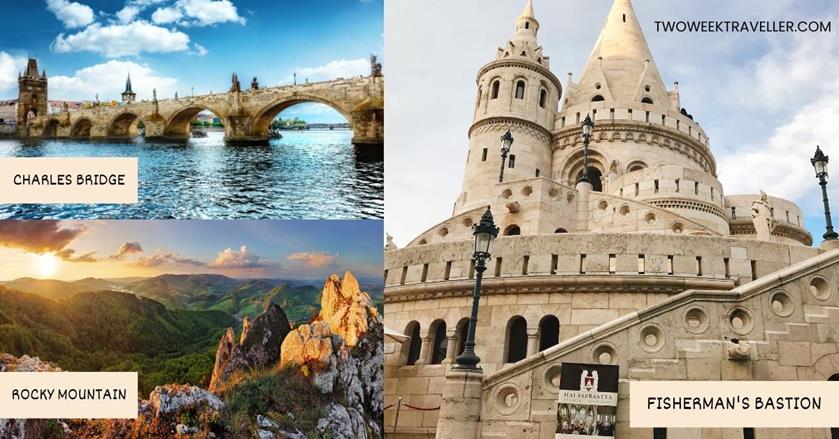
Czechia for 4 days
Despite being one of the smaller countries on the continent, travellers seeking some of the top destinations in Eastern Europe won’t be let down by the Czechia, formerly known as Czech Republic. The Prague Castle, home to the stunning St. George’s Basilica, the Powder Tower, St. Vitus Cathedral, and the Golden Lane, with its ancient workshops, serves as the main attraction for most tourists here.
Slovakia for 5 days
Slovakia is a paradise for outdoor enthusiasts, known for its national parks, beautiful hiking trails, and numerous caves, several of which are UNESCO-protected sites. With an astounding 19 natural reserves, more than 350 caverns, and hundreds of canyons and gorges, the Slovak Paradise National Park ought to be at the top of your list of places to go while you’re there. Alpine skiing is particularly common in this area, and you may experience it in both the Low Tatras and the High Tatras mountain ranges.
Hungary for 5 days
Hungary is bordered on both sides by the lovely Danube River, and the Freedom Bridge offers some of the prettiest sunset views of the river. Suppose you’re seeking a trip that mixes some rest with a solid cultural experience. This country is for you since it is home to numerous old spa towns and facilities, including Lake Heviz and Szechenyi Thermal Bath. While touring Budapest, swing by the Hungarian Parliament Building, as it has a regal appearance and is beautiful at night when lit.
Take a 1 hr 10 min nonstop flight from Prague to Budapest to get from the Czech Republic to Hungary. Take a 2 hr 55 min trip from Budapest to Kosice to travel from Hungary to Slovakia.
Itinerary #4: Romania, Bulgaria, Serbia
Romania, Bulgaria, and Serbia are a fun trio to spend 14 days exploring. You can visit beaches, go hiking, learn about the history, party, and also explore the gastronic culture of the Eastern Europe.
Since all of these countries share a land border, it’s very easy to cross from one place to another. You can do it by bus which would be the cheapest way, but there are also trainlines and flights.

Romania for 6 days
Romania is one of the cheapest travel locations in Europe, particularly if you plan to go hiking in the Carpathian Mountains. Among Bucharest’s most stunning structures include The Old Town, Arch of Triumph, and Revolutionary Square. Don’t miss The Palace of the Parliament, which features over 3,000 rooms built with marble and steel.
Bulgaria for 4 days
Another inexpensive destination is Bulgaria, where you can enjoy a summer holiday by the Black Sea. For outdoor enthusiasts, you can find a variety of hiking trails and beautiful views at the famous Vitosha Mountain or the Central Balkan National Park. Some of Sofia’s notable attractions that you should visit include St. George Rotunda Church and Boyana Church.
Serbia for 4 days
Serbia, abundant with wonders just waiting to be discovered, is a great place to end your journey. You can start exploring the Town Halls and the Presidential Palace, but a trip down Kneza Mihaila street is a better way to take in historic structures. Other attractions are Nikola Tesla Museum, Belgrade Fortress, and the Great War Island.
To get from Bulgaria to Serbia, take a nonstop flight from Sofia to Belgrade, which takes 1 hr 10 min. After your trip to Serbia, take a nonstop flight from Belgrade to Bucharest, which lasts an average of 1 hr 25 min to arrive in Romania.
Itinerary #5: Off-the-beaten-path – Bosnia and Herzegovina, Montenegro, and Albania
Make your trip memorable by skipping Europe’s typical destinations and heading off the beaten track. While Western European countries swarm with travellers worldwide, these countries are just as stunning and historical that often remain uncrowded.
With various unique attractions, consider these overlooked European gems for your upcoming holiday. Most of these places are in Southern Europe , so if that’s the region you’re interested in in, this itinerary will suit you.
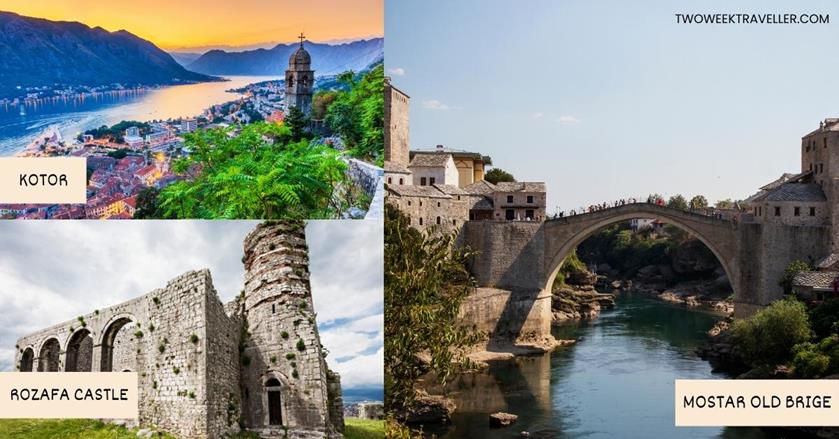
Bosnia and Herzegovina for 5 days
Discover the Old Town of Bosnia and Herzegovina, which includes the Mosque of Mostar and the Stari Most, and dip in the pools of Kravice Waterfalls. Keep your camera ready as you walk past the gorgeous Neretva River. The central city of Sarajevo is within a short drive from a range of affordable ski resorts, including Jahorina and Babin Do.
Montenegro for 4 days
The 15th-century village of Sveti Stefan, encircled by pink sand beaches, and its seafood restaurant have established this region as a popular tourist destination in Montenegro. The greatest way to experience Tara Canyon, the second-deepest canyon in the world, is on an exhilarating whitewater rafting adventure. Don’t forget to visit the Pavlova Strana viewpoint to admire the Rijeka Cronjevica River.
Albania 5 days
Hiking the Albanian Alps is considered one of the highlights of touring Albania because of its gorgeous snow-capped peaks, lovely valleys, and breathtaking canyon. To see the breathtaking sunset over the entire city of Tirana, take a cable car up to the summit of Dajti Mountain. I highly urge visiting The Sunset Restorat Bar, a restaurant perched atop a cliff above Filikuri Beach with views of Himara’s coastline and the Southern Albanian mountains.
You can begin your journey in Albania and fly from Tirana to Podgorica in 3 hr 20 min to reach Montenegro. Take a 5 hr 35 min flight from Podgorica to Sarajevo to get to Bosnia & Herzegovina.
THINGS TO SEE AND DO
This section lists the best things to do and places to see in each country to help plan your itinerary. Everything is categorised by country. After this section, you’ll see a list of must-try dishes in each country.
- The Blue Eye/Syri i Kaltër
- Skanderbeg Square
- Llogara National Park
- Rozafa Castle
- Amphitheatre of Durrës
- Good Cave (Shpella e Mirë besh)
- Preza Castle
- Vjosë-NartëDelta Protected Area
- Berat Castle
- Castle of Gjirokastra
- Et’hem Bej Mosque
- Ulza Regional Nature Park
- Parku Kombëtar Shebenik
- Pyramid of Tirana
- Buna River – Velipoja
Bosnia and Herzegovina
- Mostar Old Bridge
- Latin Bridge
- Sarajevo Tunnel
- Mlinčići/Jaice
- Sarajevo City Hall
- Gazi Husrev-beg Mosque
- Dervish House
- Štrbački buk Bosnia
- Avaz Twist Tower
- Pliva Waterfall
- Vrelo Bosne
- Mehmed Paša Sokolović Bridge
- Apparition Hill
- Kozara National Park
- Kastel Fortress
- Bjelašnica – skiing and mountain biking
- Black Sea Cruise with Lunch
- National Palace of Culture in Sofia
- Sofia History Museum
- Varna Gourmet and Wine Tasting
- Belogradchik Rocks
- Prohodna Cave in Karlukovo
- Rila Monastery & Boyana Church tour
- Krushuna Waterfalls
- The Rose Valley near Kazanluk
- Skopje (N. Macedonia) day tour
- Dubrovnik’s Old Town Walls – join a walking tour
- Trsteno Arboretum, Trsteno near Dubrovnik
- Dubrovnik’s Lovrijenac Fort
- Visit Game of Thrones filming locations – book a tour
- Nikola Tesla Technical Museum in Zagreb
- Diocletian’s Palace in Split – enjoy a walking tour with a local guide
- Mulini Beach in Rovinj
- Blue Cave, near Split – book the 5 island boat tour
- Museum of Broken Relationships
- Krka Waterfalls, near Split – visit on a boat tour
- Plitvice Lakes National Park near Zadar
- Kornati National Park near Zadar
- Euphrasian Basilica in Porec
- Pula’s Roman Arena
- Swim at Galebove Stijene in Pula
- Explore Brijuni/Brioni National Park near Pula
- Great Waterfall
- Golden Horn Beach
- National Park Kornati
- Paklenica National Park
- Rector’s Palace
- Cathedral of Zagreb
- Katedrala sv. Jakov
- Crkva sv. Donata
- Trakoscan Castle
- Dubrovnik Cable Car
- The Cathedral of the Assumption of the Virgin
- Park Maksimir
- Skradinski Buk Waterfall
- Temple of Augustus
- Park Šuma Marjan
- Hvar Island
- Sightseeing Dinner Cruise
- Prague Castle
- Charles Bridge
- Prague City tour
- Prague Astronomical Clock
- St. Vitus Cathedral
- Medieval Dinner
- Dancing House
- Old Town Square
- Brno Walking Tour
- Lennon Wall
- Národní Muzeum
- Karlštejn Castle
- Petrin Tower
- Church of Our Lady before Týn
- The Powder Tower
- Sedlec Ossuary
- State Castle and Chateau Český Krumlov
- Klementinum
- Tallinn Walking tour
- St. Olaf’s Church
- Lahemaa National Park
- Alexander Nevsky Cathedral
- Join a city tour – either a walking tour or 2-hour guided tour or an electric bike tour or push bike tour
- Kadriorg Art Museum
- Tallinn TV Tower
- Danish King’s Garden
- Estonian cuisine – do a 3-hour food tour or a food tour with a market visit on a bike
- Go on a Shore Excursion – check out this tour or cruise port with a bike tour
- Tallinn Town Hall
- Estonian Open Air Museum
- Day trip to Lahemaa National Park – read the reviews
- Day trip to Parnu
- Day trip to Helsinki, Finland by ferry
- Acropolis of Athens and Acropolis Museum
- Temple of Olympian Zeus
- National Archaeological Museum
- Ancient Agora of Athens
- Balos Beach
- The archaeological site of Mycenae
- Odeon of Herodes Atticus
- Panathenaic Stadium
- Archaeological Site of Sounion
- Melissani Cave
- Porto Katsiki
- Budapest hop-on-hop-off bus
- Hungarian Parliament Building
- Budapest’s Széchenyi Thermal Bath – book a full-day spa
- Buda Castle
- Buy souvenirs at Central Market Hall
- Take a boat cruise Danube River in Budapest – check cruise prices
- Matthias Church in Budapest
- Esztergom Basilica
- The Caves of Lillafured near Miskolc
- Lavender field at Tihany
- St. Stephen’s Basilica
- Széchenyi Chain Bridge
- Heroes Square
- Central Market Hall
- Matthias Church
- Gellért Thermal Bath
- Dohány Street Synagogue
- Vajdahunyad Castle
- Shoes on the Danube Bank
- Szimpla Kert
- Rudas Baths
- City Park of Budapest
- New York Café
- Riga day trip
- Riga hop-on-hop-off bus
- Sigulda and Gaugja National Park
- Explore Riga downtown on a walking tour or Old and New walking tour
- House of the Black Heads
- Riga Central Market – go on a food-tasting tour
- St. Peter’s Church
- Beer or Cide tour – check this bike tour
- The Freedom Monument
- Latvia Palace – and medieval castle tour
- Riga Cathedral
- Day trip to Rundale Palace and Hill of Crosses – check the tour cost
- Three Brothers, Latvian Museum of Architecture
- Art Nouveau Building – sign up for an architectural bike tour
- Latvian National Museum of Art
- Go on a pub crawl
- Daugava River – go on a boat tour or this one
- Day trip to Jelgava
- Try out the shooting range – read the reviews
- Museum of the Occupation of Latvia
- Day trip to Sigulda and Turaida – look at the price
- Trakai Castle from Vilnius – do an audio guide tour or one with a guide
- Curonian Spit tour
- Bernardine Garden
- Hill of Crosses tour
- Vilnius via a walking tour or bike tour
- Gediminas Castle Tower
- Jewish Quarter and Soviet Sites
- Vilnius Cathedral
- St. Anne’s Church
- Hill of Crosses – day trip from Vilnius
- Gates of Dawn
- Hot air balloon over the city – read the reviews
- Museum of Occupations and Freedom
- Cathedral Square
- Learn about Lithuanian cuisine – book a walking food tour or dinner with a local family
- Three Crosses Monument
- Palace of the Grand Dukes of Lithuania
- Full-day tour around Vilnius, to Trakai, and Keranve – check the tour price
- Vingus Park
- Walk around Uzupis – the art district of Vilnius
- Day trip to Paneriai Memorial Park – a tour that includes Trakai Castle
- Great Montenegro Tour – including Lovcen, River of Crnojecvic, and Sveti Stefan
- Ostrog Monastery
- Durmitor – explore Northern Montenegro
- Old Olive Tree
- Lady of the Rocks – plan a tour with Blue Cave
- Lovćen National Park – join a full day tour
- Crno Jezero
- Perast Old Town – day trip from Kotor
- Đurđevića Tara Bridge
- Tara River – go whitewater rafting
- Perast Beach
- Lake Skadar – boat tour from Virpazar to Kom Monastery
- Church of the Madonna dello Scalpello
- Kotor Bay – discover Kotor Old Town
- Former Austro-Hungarian Fort
- Blue Cave – boat tour including Lady of the Rocks and Mamula
- Skadar Lake National Park
- Wine and food tour – look up the price
- Independence Square
- Kayaking in Budva – check the tour price
- Wieliczka Salt Mine Tour
- Rynek Glowny
- Schindler’s Factory
- St. Mary’s Basilica
- Auschwitz-Birkenau Tour
- Palace of Culture and Science
- Ghetto Walking Tour
- The Royal Castles in Warsaw
- Chopin Concert
- Energylandia
- Hop-on Hop-off Bus
- Wroclaw Market Square
- Gdansk beach day and – City & Boat Tour
- Zamek Wawel
- Gdansk Walking Tour
- Marlbork Castle
- Stutthof Concentration Camp Tour
- Timisoara day tour
- Romanian Athenaeum in Bucharest
- National Museum of Romanian History in Bucharest
- Turda Salt Mines and Rimetea tour
- Dimitrie Gusti National Village Museum in Bucharest
- Cluj Medieval City tour
- Grigore Antipa National Museum of Natural History in Bucharest
- Dracula’s Castle & Birthplace
- Covered Stairway in Sighisoara
- The Black Church in Brasov
- Bran Castle and Dracula’s Castle tour
- The Clock Tower in Sighisoara
- Old Town Brasov tour
- Bucegi Natural Park near Brasoc
- Transylvanian Alps
- Novi Sad & Sremski Karlovci tour
- Uvac Meanders
- Full day Belgrade tour
- Belgrade Fortress
- Saint Sava Temple
- Go on a cruise around Belgrade – 2-hour city cruise or a sunset cruise
- Republic Square
- Book a Red Belgrade Communist Tour – check the price
- Nikola Tesla Museum
- Sargan Eight Railway – and House on Drina River, book a tour
- Ada Ciganlija
- Golubac Fortress – day tour from Belgrade with Iron Gate tour
- Studenica Monastery and Manasija Monastery – book a tour with Lisine Waterfall
- Manastir Žiča
- Day trip to Eastern Serbia – read the reviews
- Kopaonik National Park
- Holy Martyr George
- Stopić Cave
- Tasmajdan Park
- Aeronautical Museum in Belgrade
- Skull Tower
- Nature Park Sicevo Canyon
- Bratislava Sightseeing by traditional bus or segway tour or walking tour
- Bratislava Castle
- Michael’s Gate
- Soviet Era and Post-Communist Tour
- St. Martin’s Cathedral
- Devín Castle – 3-hour guided tour
- Spiš Castle
- The Blue Church – Church of St. Elizabeth
- Book a food tour – look at the price or a wine tasting tour
- Castle of Spirits (Bojnice Castle)
- Presidential Palace
- Orava Castle
- Tatralandia
- Primate’s Palace
- Dobšinská Ice Cave
- AquaCity Poprad
- Jasna Low Tatras
- Trenčín Castle
- Čachtice Castle
- Slovak Paradise National Park
- Demänovská Ice Cave
- The Ľubovňa Castle
WHERE TO STAY IN EAST EUROPE
This list of accommodations in Eastern Europe will help you find the one that suits your budget and level of comfort a lost easier:
Vilnius, Lithuania
- Affordable: Jimmy Jumps House or Mikalo House or Downtown Forest Hostel & Camping
- Mid-range: Comfort Hotel Rock n Roll or Domus Maria or Come2Rest – Subaciaus 5 or Art City Inn
- Luxury: Hotel Vilnia or Novotel or Neringa Hotel or Radisson Blue or Congress Avenue Hotel
Riga, Latvia
- Affordable: Orange Cat Rooms or Cinnamon Sally Backpackers Hostel or Blue Bird Hostel
- Mid-range: Avalon Hotel & Conferences or Wellton Riga Hotel & Spa or Hestia Hotel Draugi or Forums Boutique Hotel
- Luxury: Grand Palace Hotel or Neiburgs Hotel or Relais Le Chevalier or Hilton Garden Inn
Tallinn, Estonia
- Affordable: Alur Hostel & Bar or Villa Kadriorg Hostel or Imaginary Hostel
- Mid-range: Thomas’ Home or ibis Hotel or Rija Fonnental Design Hotel or St Olav Hotel
- Luxury: Revelton Suites or The von Stackelberg Hotel or Rixwell Collection Savoy Hotel or Radisson Collection Hotel or Centennial Hotel
Athens, Greece
Zagreb, croatia.
- Affordable: Apartments Lucky Place or Main Square Hostel
- Mid-range: Manda Heritage Hotel or Pod Zidon Rooms
- Luxury: Hotel Le Premier or Esplanade Zagreb Hotel and Sheraton Hotel
Tirana, Albania
Prague, czechia, bratislava, slovakia, budapest, hungary, bucharest, romania, sofia, bulgaria, sarajevo, bosnia and herzegovina, podgorica, montenegroo, must-try eastern european dishes, drinks, and snacks.
The cuisine in East Europe has lots in common, but still, there are plenty of dishes that only exist in specific countries Don’t forget to sit down at a local restaurant and try as many as you want.
- Borscht (Ukraine) – A beetroot-based soup
- Pierogi (Poland) – Dumplings with various fillings
- Ćevapi (Bosnia and Herzegovina) – Minced meat sausages
- Moussaka (Bulgaria) – Layered eggplant, potato, and meat casserole
- Pljeskavica (Serbia) – Meat patty, often served in a somun (like pita bread)
- Goulash (Hungary) – Meat stew seasoned with paprika
- Koldūnai (Lithuania) – Meat or vegetable-filled dumplings
- Sarmale (Romania) – Cabbage rolls stuffed with meat and rice
- Šopska Salata (Bulgaria) – Tomato, cucumber, and cheese salad
- Mămăligă (Romania) – Cornmeal porridge, similar to polenta
- Chvarci (Serbia) – Fried pork rinds
- Kotlet Schabowy (Poland) – Breaded and fried pork cutlet
- Lecso (Hungary) – Pepper and tomato stew, often with sausage
- Njeguški Stek (Montenegro) – Pork or veal steak stuffed with cheese and ham
- Tavë Kosi (Albania) – Yogurt and lamb baked casserole
- Souvlaki (Greece) – Grilled meat skewers, often served in pita bread with sauce
- Chimney Cake/Kürtőskalács (Hungary) – Cylindrical spit cake
- Sernik (Poland) – Cheesecake made with quark
- Túró Rudi (Hungary) – Chocolate-covered curd bar
- Papanasi (Romania) – Fried doughnuts with sour cream and fruit preserve
- Kvass (Ukraine, Baltics, Poland) – Fermented bread drink
- Živovoda/Slivovitz (Czech Republic) – Plum brandy
- Palinka (Hungary) – Fruit brandy
- Borovicka (Slovakia) – Juniper berry liqueur
- Compot (Ukraine) – Fruit drink made by boiling various fruits
SUMMARY OF 2 WEEKS IN EASTERN EUROPE
From hidden waterfalls, unspoiled mountains, and magnificent beaches, Eastern Europe offers a variety of natural beauty. If you’re looking for an epic journey that isn’t your conventional European vacation, this region will satisfy your adventurous heart.
Here, you can experience any type of climate. Enjoy the summer heat on Bulgaria’s Black Sea, go hiking in Slovakia’s High Tatras, or relax in a forest in Romania. Your two weeks in East Europe trip will take you through one of Europe’s most culturally diverse locations.
TO SAVE THIS ITINERARY, PIN THIS IMAGE BELOW:


- GENERAL TRAVEL

Where to Go in Eastern Europe as a Solo Traveler

Polly Rittenberg is a traveler, content creator, and film historian. Growing up in Brooklyn, New ...
- button]:border-none [&>button]:bg-white [&>button]:hover:cursor-pointer [&>button]:hover:text-cyan-400"> button]:hover:text-cyan-400 [&>button]:bg-white hover:cursor-pointer" height="1em" width="1em" xmlns="http://www.w3.org/2000/svg">
While Eastern Europe is a region that may not be as familiar to travelers as other parts of Europe, it’s a gem of a location, just waiting to be discovered. If you are adventurous enough to explore this part of the world, you will be greatly rewarded with breathtaking landscapes and distinctive cuisines. Are you already wondering where to go in Eastern Europe first?
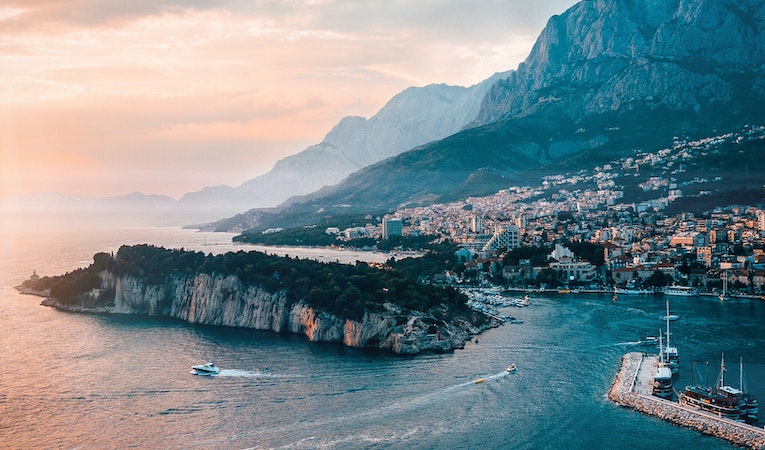
Trust us—you might be underestimating Eastern Europe.
It’s a region that’s definitely off the beaten path for most Americans who like to stick to well-known destinations in Western Europe (which is, of course, a wonderful region as well!), but if you like going to unique countries that are not very popular, you must hop on a plane to Eastern Europe.
Many destinations here are budget-friendly, and it’s unlikely you will find many of their beautiful capital cities and small villages overrun with tourists. Eastern Europe is tailor-made for the traveler who likes to immerse themselves in the local culture and meet that country’s citizens.
Is Eastern Europe safe?
Anyone who has taken a high school history class that’s covered the 20th century knows that Eastern Europe has a tumultuous history. Despite its recent history, that should not be a reason to avoid traveling to Eastern Europe.
Traveling through this region is as safe as more well-known European locales. Obviously, you should still practice a normal amount of caution that you would in any other destination when you’re traveling (like keeping track of your belongings and being aware of your surroundings), but you’ll be as safe in Eastern Europe as anywhere else.
Occasionally there’s more of a language barrier than in more popular cities like Rome, but the best way to travel through Eastern Europe is to try and reach out to the surrounding friendly locals who will go above and beyond to help you in your travels—even if they do not completely understand your language.
Talk to our Online Advisor (for FREE!) and get matched with travel programs in Europe
Where to go in eastern europe.
Need pro Eastern Europe travel tips? Our first one is to peruse the list of top destinations in this region!
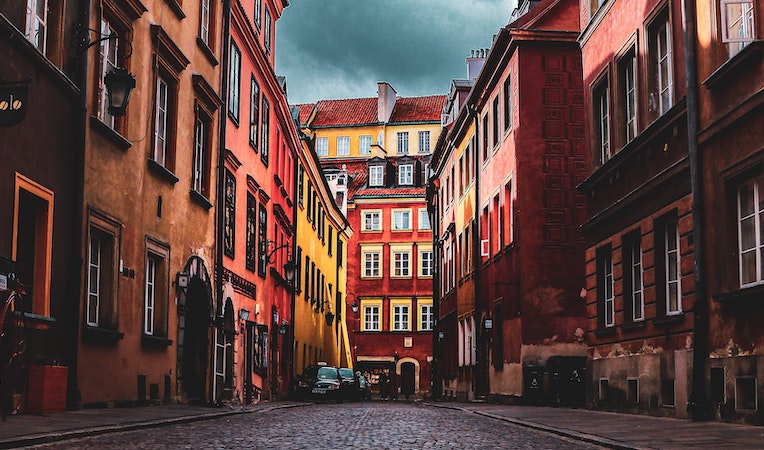
There’s no shortage of cool cities to check out.
Why? Poland is probably one of the better-known Eastern European countries and for good reason: It’s very easy to get around and each corner of the country has interesting cultural facets. If you love breathtaking castles and engaging cities, Poland is a must-visit, especially for your first entrance into Eastern Europe.
Poland’s capital city Warsaw is very modern, but still has touches of its pre-war style. Despite being smaller than Warsaw, Krakow is a very popular city with travelers.
When? If you enjoy sightseeing, traveling to Poland between June and August is the perfect time of year to visit. The warm summer weather is perfect for spending hours walking along the country’s rambling, historic streets.
Recommended programs in Poland:
- USAC POLAND: Kraków-Holocaust, European & Political Studies
- AFS Poland Global Prep: Exploring the City and Countryside
Why? While the first thought many people might think of when they hear Hungary is its capital city Budapest , there is so much more to explore in this beautiful Eastern European country. You should definitely start out your Hungarian adventure in Budapest just to look at the city’s mesmerizing architecture.
Budapest’s parliament building is truly a major sight to behold. One of the better Eastern Europe travel tips is to go and relax in one of Hungary’s many thermal baths. You will find many throughout the country. If you like quieter locations, Pecs is a gem of a Hungarian city with beautiful ruins and gorgeous scenery.
When? Autumn is a lovely time of year to visit Hungary. The weather is brisk, but you will avoid the large summer crowds that descend on the country in July and August.
Recommended programs in Hungary:
- AFS Hungary Global Prep: Inclusion and Equality in Hungary
- Traveling For-Credit Summer Internships in Europe
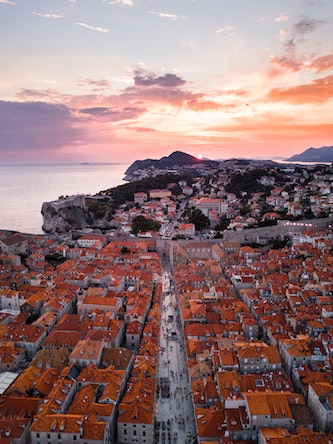
You’ll love Dubrovnik in Croatia.
Why? Croatia has exploded as a popular destination for travelers thanks to television shows like Game of Thrones. Whether or not you’re a fan of the show, Croatia is well-worth a visit. With it’s beautiful coastline, Croatia attracts tourists with their many cruise line ports and beautiful beaches for those who love nothing more than resting and getting a bit of sun.
Dubrovnik is Croatia’s most popular city for travelers, with its combination of a walled fortress and ocean views. If you like Roman architecture, Split is a wonderful Croatian city to visit. For any foodie travelers, Croatian cuisine and their local wine will quickly become your new favorite.
When? Croatia is incredibly crowded in the summer because of its beautiful beaches and islands, but if you visit in September , you will still have the warm summer temperatures, but without so many Game of Thrones-loving tourists congesting the streets of Dubrovnik.
Recommended programs in Croatia:
- Human Rights and Peace Studies in the Balkans
- Croatia - Bottlenose Dolphin Conservation
4. Slovenia
Why? Tiny, but mighty, Slovenia is another Eastern European country on the rise in popularity with travelers. Its capital city Ljubljana has a beautiful and charming old town that is popular year-round.
Slovenia is a particularly great destination if you’re a lover of the great outdoors. From its beautiful lakes to its mountain peaks, you will find many excellent outdoor activities. Lake Bled is an excellent destination if you want to see a beautiful blue lake and expressive snow-capped mountains.
When? Slovenia is best for travelers during the summer months when the weather is more consistent than throughout the rest of the year. Despite the summer holidays, it is still relatively uncrowded, even compared to some other destinations in Eastern Europe.
Recommended programs in Slovenia:
- Get Paid to Teach English Abroad in Slovenia with a TEFL/TESOL Certification
- Explore Croatia, Slovenia, Austria, Czech Republic & Greek Islands
5. Bulgaria
Why? While Bulgaria is not a very popular country with travelers yet, that will change—and soon. The country is full of natural beauty and outstanding landmarks. Sofia, Bulgaria’s capital city, is a great place to start your Bulgarian adventure.
If you want to branch out and see more of the country, definitely take a few days to explore its Black Sea coastline. If you’re a big fan of architecture, another great historic city to investigate is Plovdiv.
When? Summer is a wonderful time to visit Bulgaria. However, if you love to ski, Bulgaria’s winter ski resorts are gorgeous and more than worth the trip, particularly between December and March.
Recommended programs in Bulgaria:
- Join the Fresco-Hunting Expedition in Bulgaria
- Isla - Live Learn Intern in Bulgaria
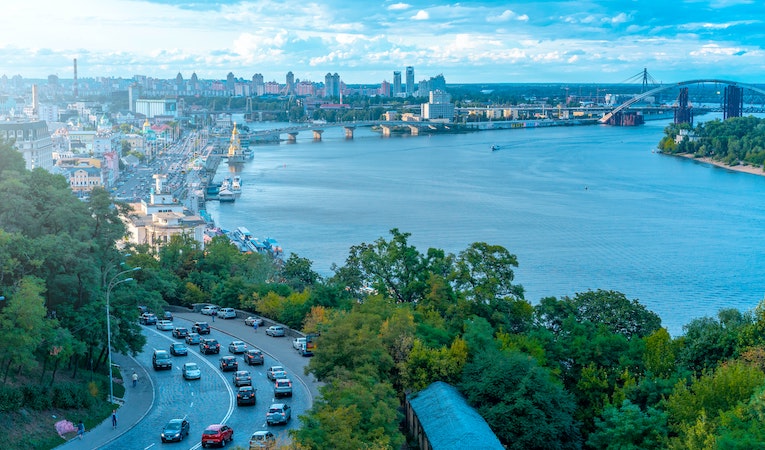
Never considered Ukraine? Head to Kyiv!
Why? While Ukraine is still feeling the effects from its Soviet-era past, the country is trying to move forward with its independence and assert itself as a major, budget-friendly destination. It still has a long way to go, but if you’re a traveler who likes to visit destinations before they are popular, Ukraine should be the next Eastern European country you visit.
In some ways, visiting Ukraine feels like traveling back to the past, particularly when you look at the country’s architecture and ancient churches.
When? Winters are very cold in Ukraine, so if you want the warmest weather all day and night, traveling to Ukraine in the summer is the best. Spring and autumn are also very nice, but it can be cold at night.
Recommended programs in Ukraine:
- Eurasian Regional Language Program (ERLP)
- Eurolingua One-to-One Language Homestay Immersion Worldwide
7. Czech Republic
Why? While the Czech Republic might be best known to travelers for its capital city Prague , anyone who ventures outside of the city can attest that there is much more to the Czech Republic than solely Prague.
Prague is definitely still worth a visit, especially if you love experimenting with different types of beer and soaking up a beautiful culture. Throughout the country, you will find a large vast of beautiful castles. For those who do not mind skeletons, visiting Kutna Hora is a must-see: Its gothic church is decorated with thousands of skeletons.
When? Visiting the Czech Republic in the spring is best, particularly because of the absence of large crowds; plus, the weather is quite mild.
Recommended programs in the Czech Republic:
- Future-Focused Study Abroad: IFSA in the Czech Republic
- The Language House TEFL - Join our Community & Teach Abroad
8. Macedonia
Why? Macedonia is a beautiful Eastern European country, but is also one of the least-visited countries in Eastern Europe. There are only two airports in the whole country (located in the capital Skopje, and Ohrid) so it can be difficult to get to, but once you do, the best way to explore the country is by bus.
The country is small enough that you can get around to different local destinations in relatively little time. The country’s landscape is largely covered by mountains and offers plenty of breathtaking views, especially for those who love to practice their photography skills while they’re traveling.
When? Macedonia has a very pleasant climate so it’s wonderful to visit during the less crowded summer months .
Recommended programs in Macedonia:
- Get Paid to Teach English Abroad in Macedonia with a TEFL/TESOL Certification
- Balkan Language Initiative
6 best ways to travel Eastern Europe

You can’t go wrong with how you choose to travel Eastern Europe.
Ready to dive in and make your Eastern European adventure happen? Check out the best experiences to make your travels abroad as meaningful as they are fun!
- Study . Trying to fill a summer or semester with unique experiences and new memories? Or maybe you just want to try something new? Head to Eastern Europe to gain college credit or cool skills.
- Intern . Whether you’re a student, recent grad, or looking for a career change, you can find competitive and valuable internships throughout Eastern Europe, across a wide array of fields and specializations.
- Gap Year . Find yourself! Everyone dreams of a gap year in Europe—until they see the price tag. Head to Eastern Europe to have once-in-a-lifetime adventure without breaking the bank.
- TEFL Certification . Eastern Europe has become a beacon for travelers who want to gain hard skills in TEFL. Prague has become especially popular, but you can find dozens of amazing courses across the region.
- Adventure . Do something you can tell your grandkids about. Eastern Europe may not scream adventure right off the bat, but when you consider the relatively unknown and unexplored beaches and mountains, it begins to make a lot of sense.
- Language Schools . Polish, Croatian, Russian...there are a ton of nuanced languages in Eastern Europe. And where better to learn them than where they grew?
Grab these Eastern Europe travel tips and have a great time!
When you next find yourself daydreaming about an upcoming international trip, absolutely consider checking out Eastern Europe. The beautiful scenery, unique cuisines, and lower travel costs will surely entice you to return to this part of the world over and over again.
Get inspired! Read More Travel Articles on GoAbroad.com

Explore Programs on GoAbroad.com
Related Articles

By Julia Zaremba | 9 hours ago

By Chris Kane | 9 hours ago

By GoAbroad Writing Team | 10 hours ago

Popular Searches
Study abroad programs in italy, study abroad programs in spain, marine biology study abroad programs, study psychology abroad, fall study abroad 2024, spring study abroad programs, recommended programs.

1685 reviews
International Volunteer HQ [IVHQ]

1932 reviews
MAXIMO NIVEL

564 reviews
Intern Abroad HQ

2731 reviews
African Impact
For Travelers
Travel resources, for partners.

© Copyright 1998 - 2024 GoAbroad.com ®
- Study Abroad
- Volunteer Abroad
- Intern Abroad
- Teach Abroad
- TEFL Courses
- Degrees Abroad
- High School Abroad
- Language Schools
- Adventure Travel
- Jobs Abroad
- Online Study Abroad
- Online Volunteer Programs
- Online Internships
- Online Language Courses
- Online Teaching Jobs
- Online Jobs
- Online TEFL Courses
- Online Degree Programs

The 18 Best Cities to Visit in Eastern Europe
I was in my early twenties when I first travelled to cities in Eastern Europe. Since then, the cities I visited have become some of my favourite destinations across the continent. There’s just something so magical about getting off the beaten path and going somewhere new. Travelling to cities that shock and excite you. And that is entirely why I’m here to share with you my favourite cities in Eastern Europe to help you book an adventure of your own!
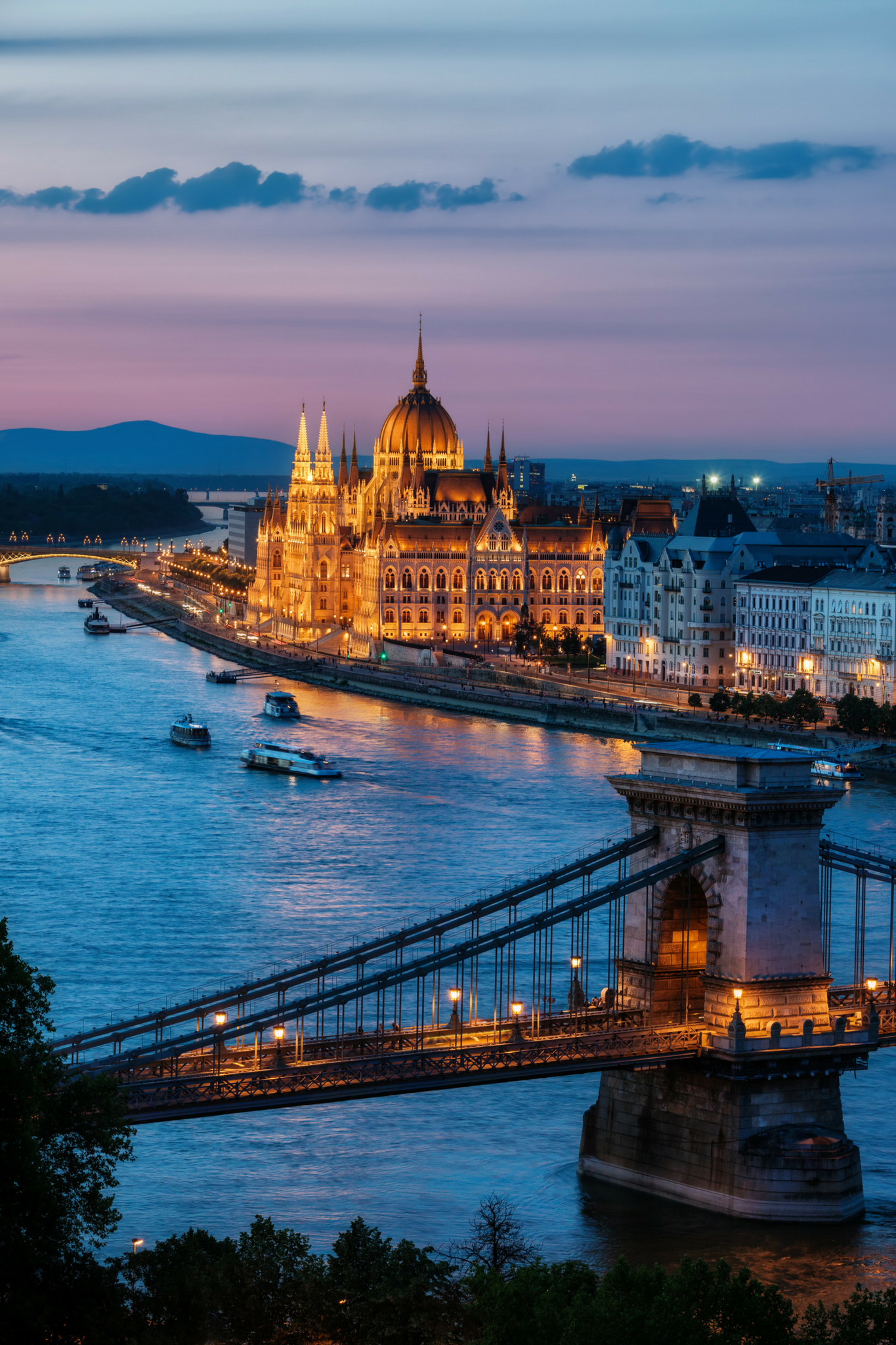
1. Budapest, Hungary
Stealing hearts now more than ever, Budapest has become one of the most popular cities in Eastern Europe and for good reason. Many moons ago (okay maybe only 7 years give or take), the city of Budapest was one of Europe’s best kept secrets and indeed one of its’ most underrated cities. Nowadays Budapest has become a must visit for travellers looking to venture East from Central European countries like Germany, Austria and Slovenia, especially so if you’re hoping for an escape from the €.
Read more: 20 Places you must see in Budapest
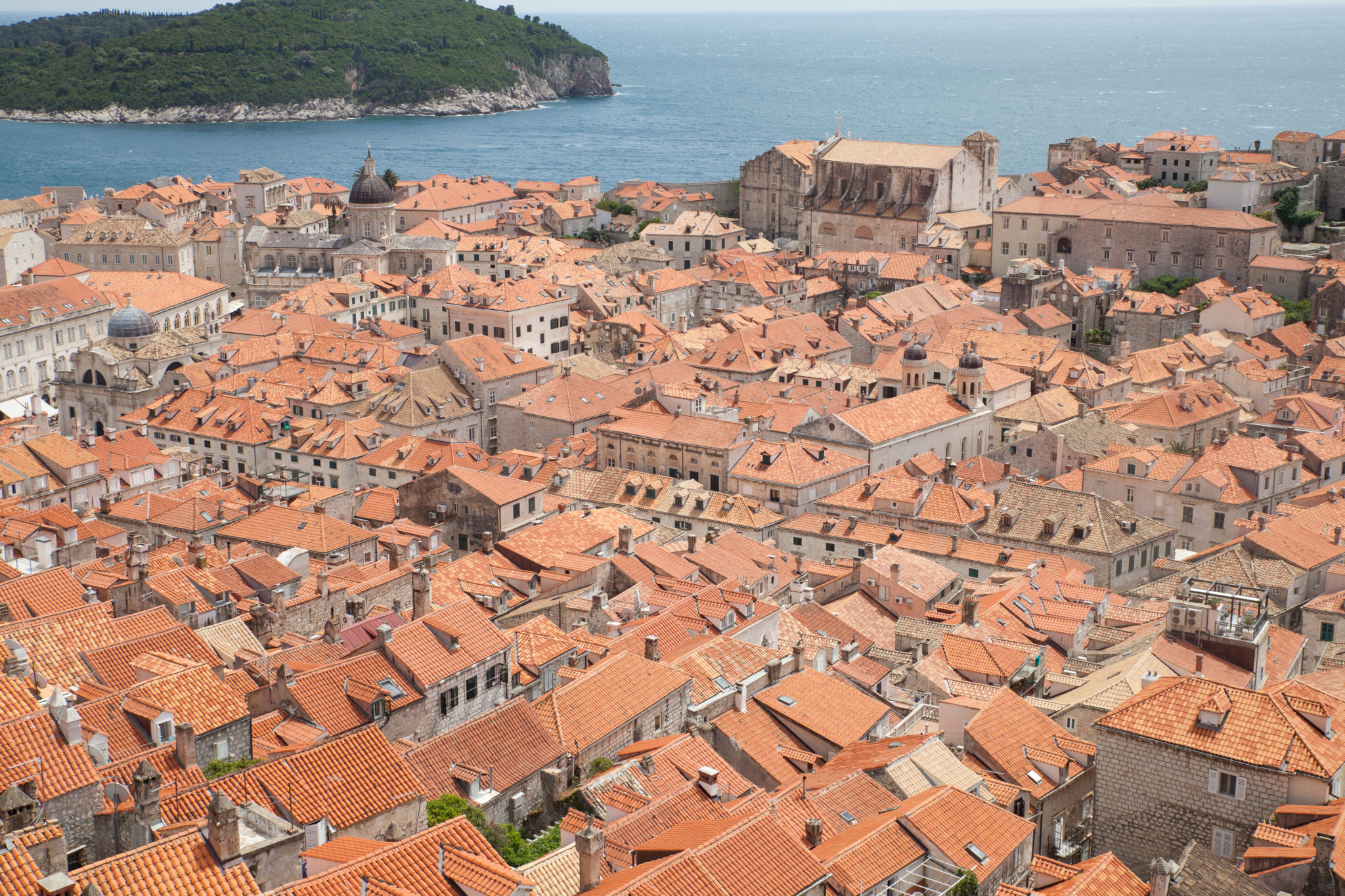
2. Dubrovnik, Croatia
A hot favourite, Dubrovnik has become one of Europe’s most sought after cities to visit. It is undeniably one of the most popular cities in Eastern Europe – but this hasn’t always been the case. This city on the coast of Croatia is a summer worth crossing an ocean for, so whatever direction you’re coming from – be sure to give yourself plenty of time to unwind!
Read more: 10 Things you Must Do in Croatia
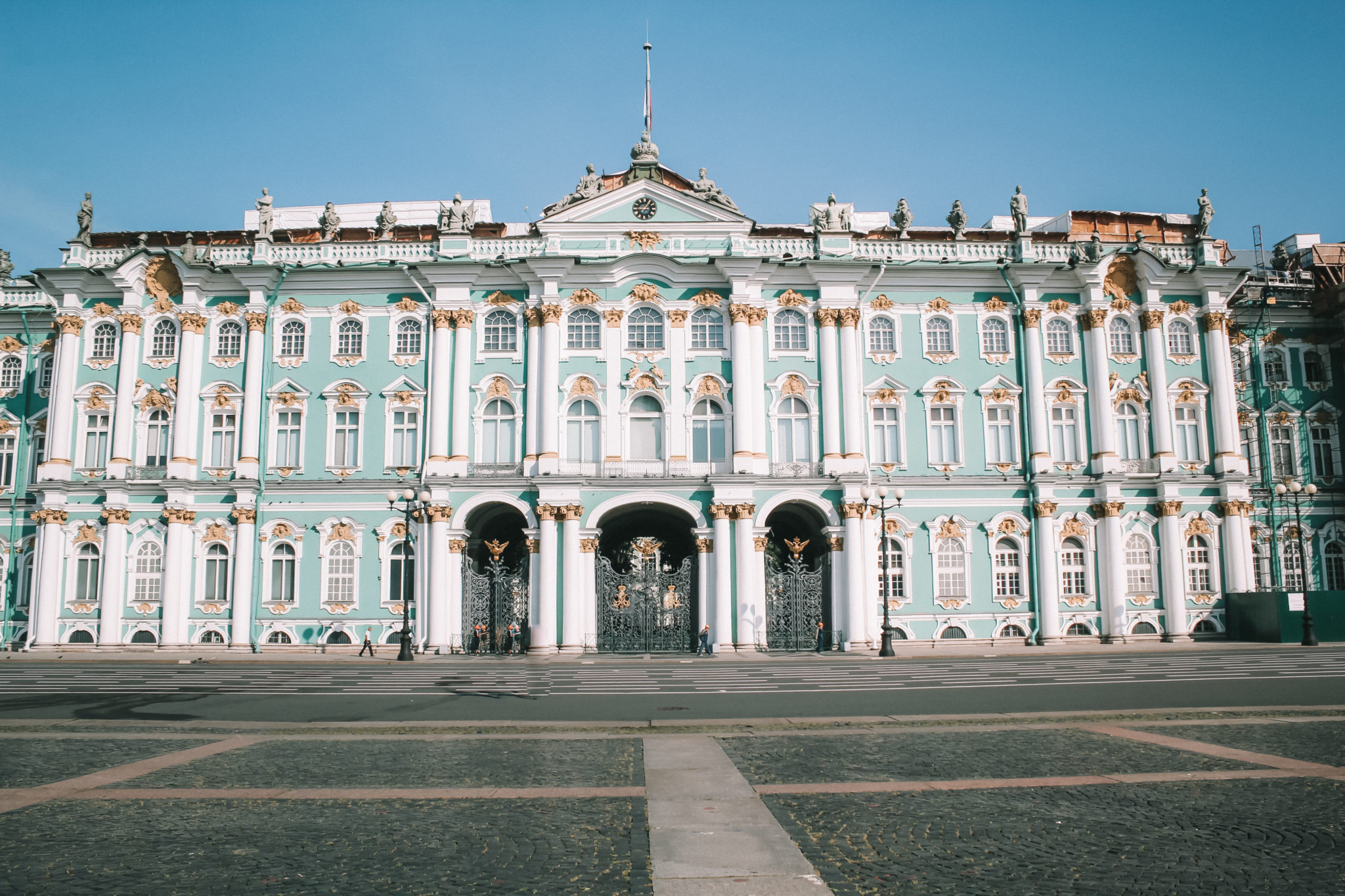
3. St Petersburg, Russia
Of all the cities I’ve explored in Europe, St Petersburg is the one I was most excited for and boy did it not disappoint. Having studied Russian history at university I was determined to see the legacy of Peter the Great – both in introducing Eastern Europe to Western culture and customs, as well as the architecture, art and of course a visit to the palatial summer residence to visit the royal gardens in all their playful glory.
Read more: A Quick Guide to St Petersburg, Russia
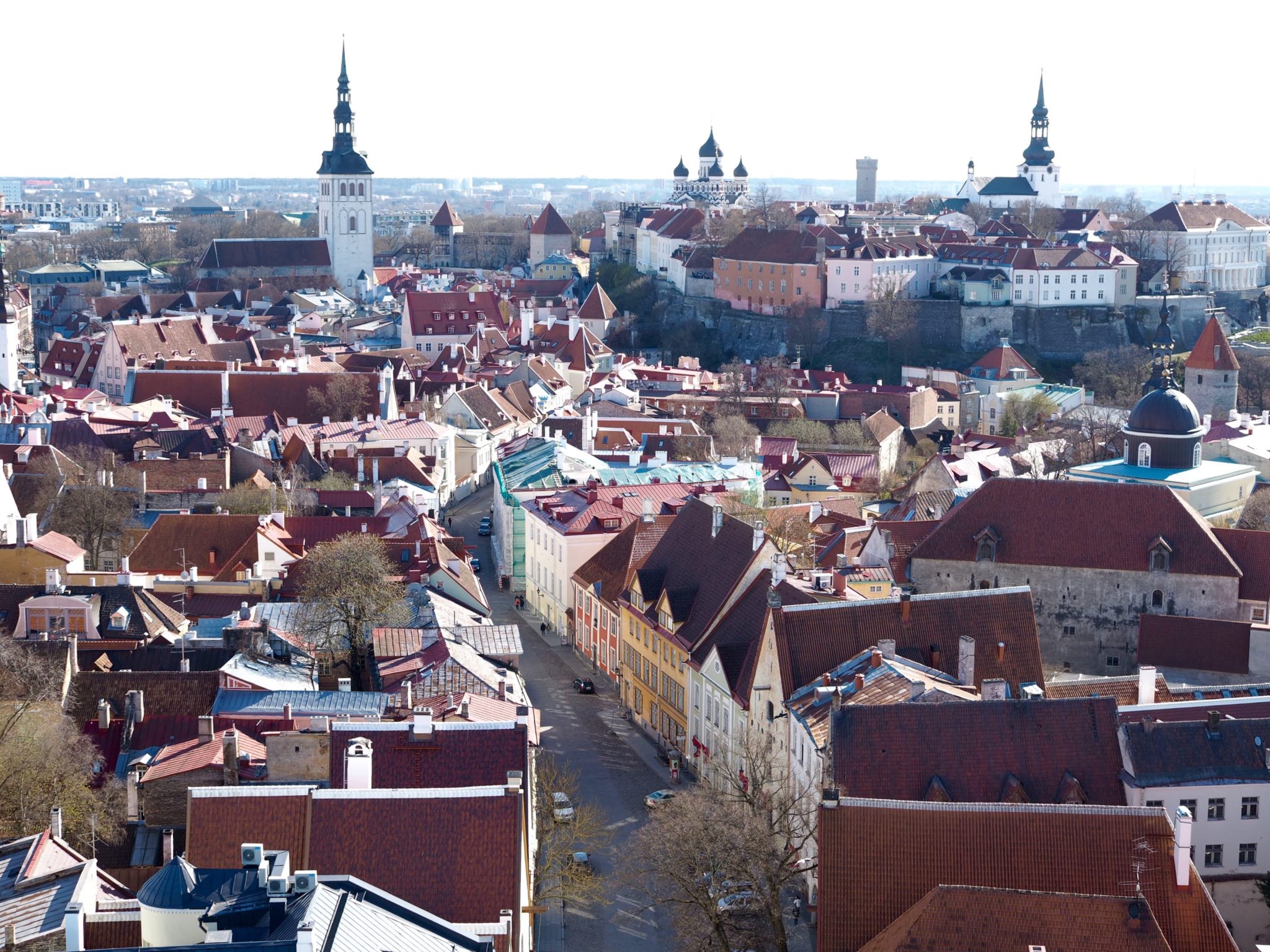
4. Tallinn, Estonia
The capital of Estonia – Tallinn – has become a staple stopover for visitors to Helsinki who are looking to enjoy the Baltics briefly in a one or two day stopover. This fairytale capital city has one of Europe’s most well-preserved Old Towns, with the likes of Unicorn juice still available for purchase at the local pharmacy. Sold!
Read more: The Top 10 Things to do in Tallinn, Estonia
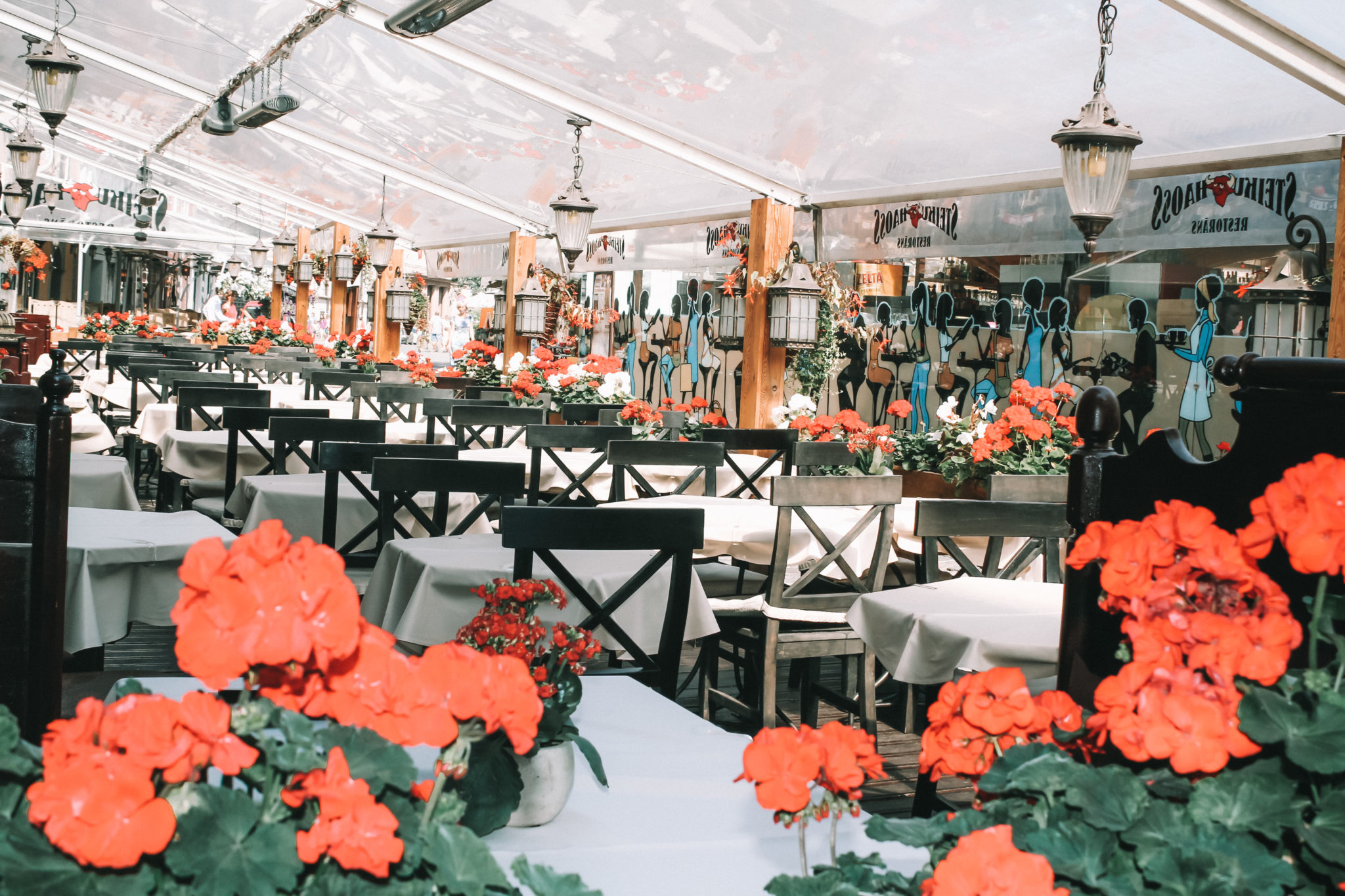
5. Riga, Latvia
Riga has become another “quick visit” city for travellers in the Baltics, thanks to its’ cheap airlines connecting many travel routes from East to West and vice versa. Riga is a city worthy of at least two full days to explore and has a lot of charm on offer, especially in the Spring/Summer time.

6. Prague, Czech Republic
My visits to Prague have been plentiful – thanks in part to a short stint living in Berlin, but mostly to an undying love affair with this fascinating city. Blending a range of architectures (mostly Gothic, Renaissance and Baroque), this city is a world in itself. Expect a handful of magical encounters and quirky boutiques selling figurines as mysterious as the encounters on the street. This is quite a fun city to explore!
Read more: A Guide to Visiting Prague

7. Krakow, Poland
Krakow is a city many of us long to visit – not only for its charm and beauty, but also the dark past of nearby Auschwitz and Birkenau that allow visitors to pay respects, stop and learn the details of the Holocaust. The city itself is vibrant and buzzing with students, giving it a unique appeal for young travellers looking to mix in with locals and enjoy all the city has to offer.
Read more: A Quick Guide to Krakow

8. Bratislava, Slovakia
Conveniently located on the direct train route between Vienna and Budapest, Bratislava is another great city to stopover for a day or two, especially if you’re looking for something a little more out of the ordinary and away from the crowds.
Read more: The 20 Most Breathtaking Places to Visit in Europe
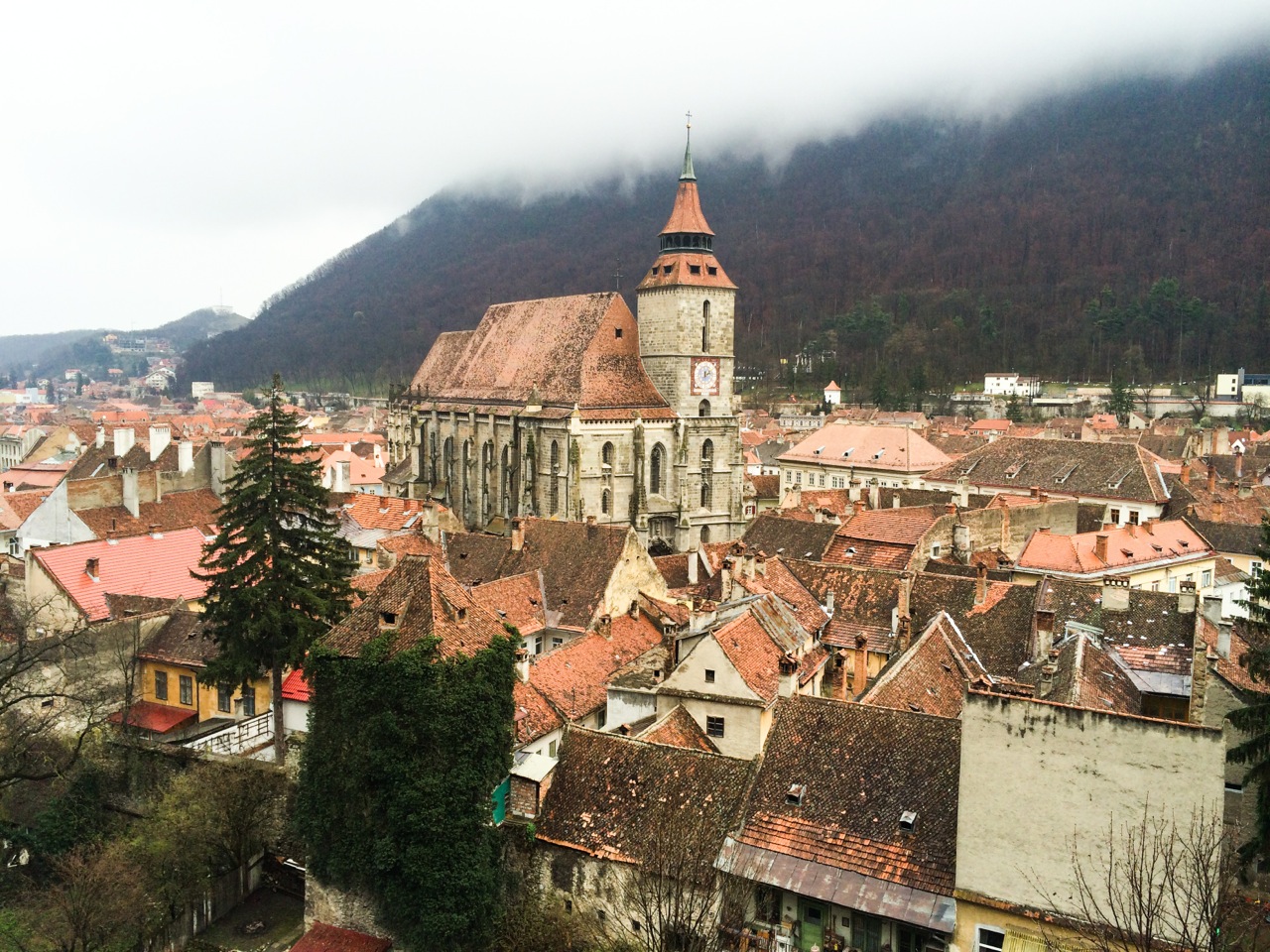
9. Brasov, Romania
Brasov is one of Romania’s most visited cities thanks to its convenient location as the gateway to the most recognisable castles in the country: Bran Castle (also known as Dracula’s Castle) and Peles Castle. The city itself deserves a day or two to explore, though you could very happily perch yourself on an Air BnB balcony for a handful of days to enjoy a slower pace as your dollar will inevitably stretch farther when converting to the Romanian leu.
Read more: 8 Places you Must Visit in Romania
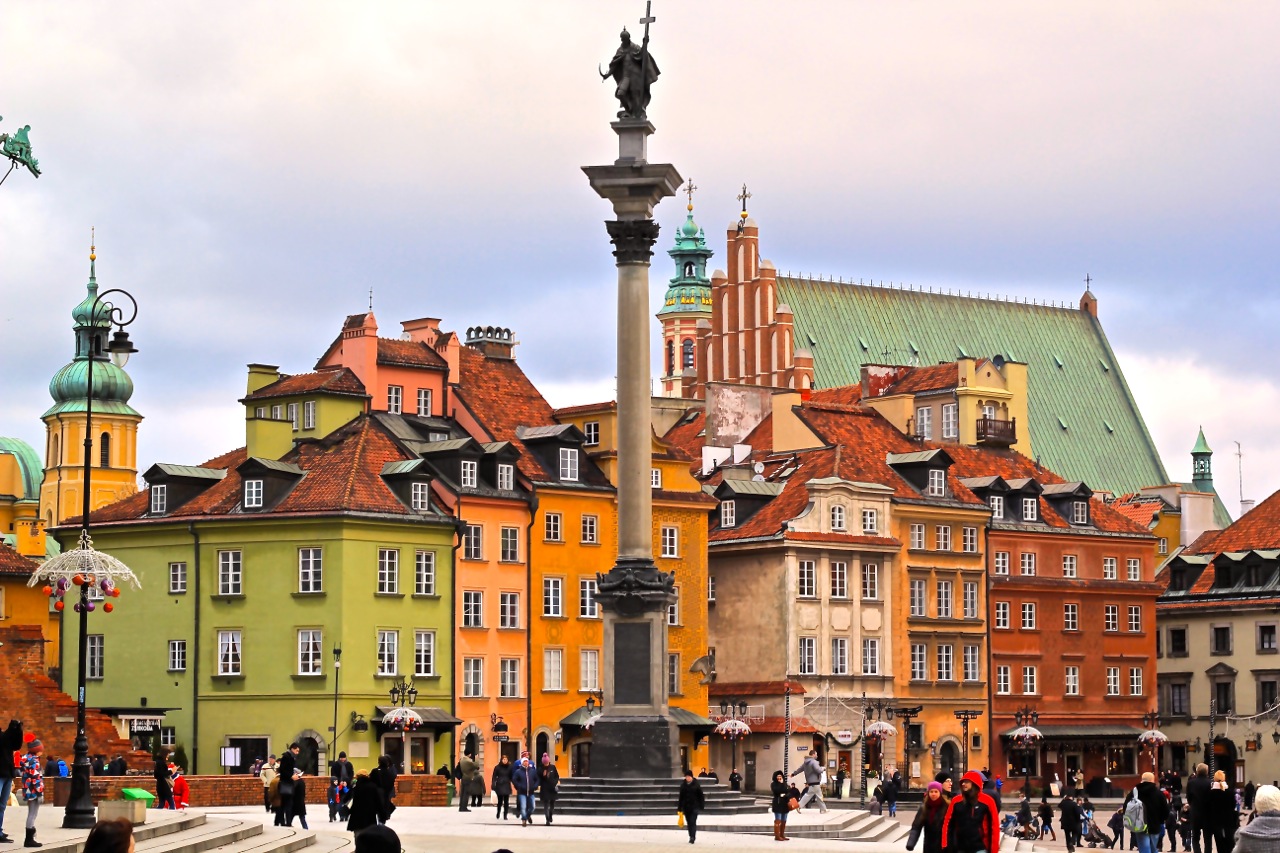
10. Warsaw, Poland
The capital of Poland has a turbulent past, however an ongoing effort to preserve the city’s Old Town in all of its glory makes this one of Eastern Europe’s prettiest capitals – a title of which it so often does receive (but very much deserves!) Poland still remains on the zloty, making it one of the more affordable countries to visit in Europe, allowing you to spend a while longer and stretch your dollar further.
Read more: A Quick Guide to Warsaw
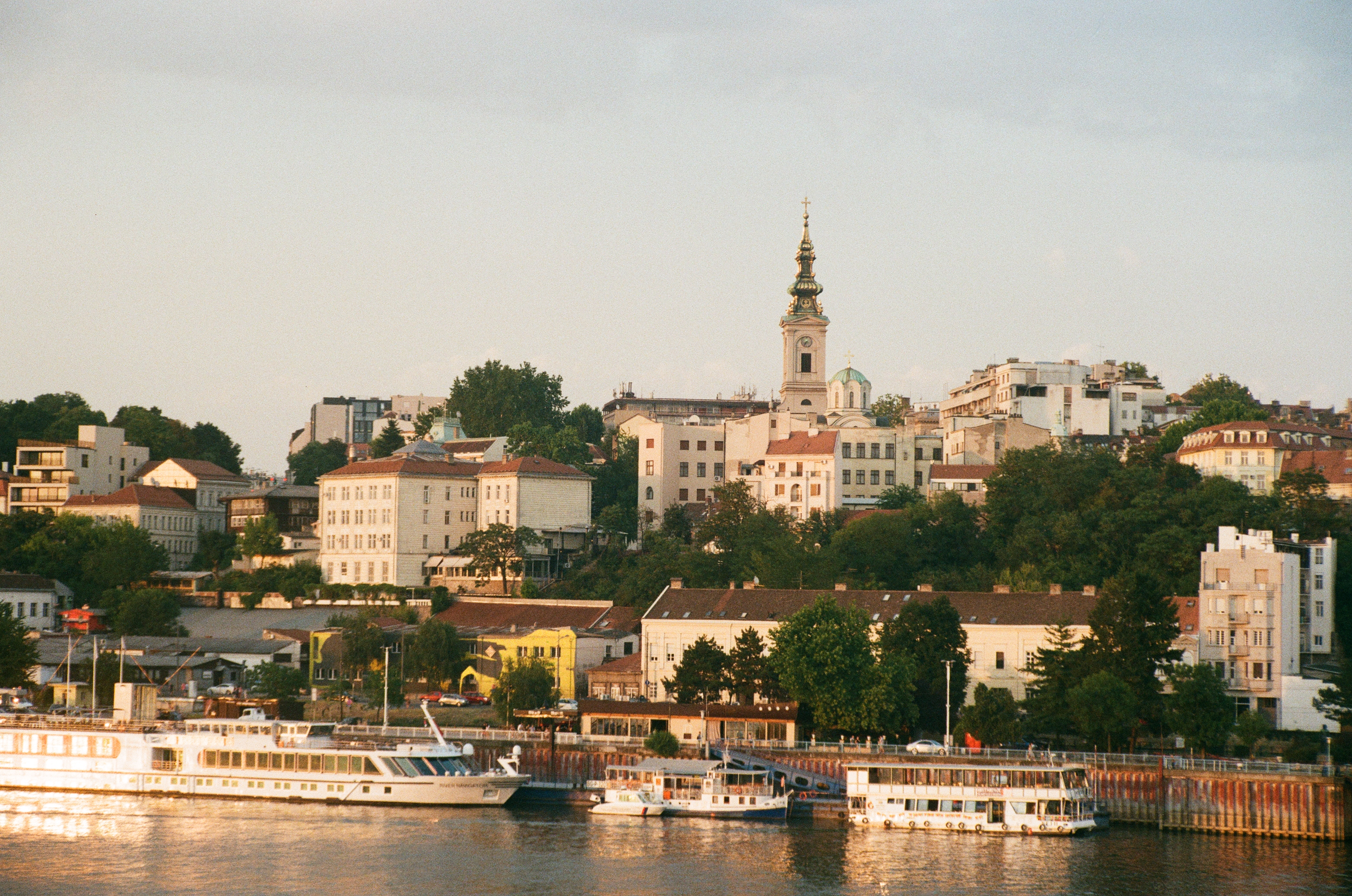
11. Belgrade, Serbia
The capital of Serbia has a way of capturing hearts, especially in the warmer months when diners take their lunches and dinners al fresco, in balmy evenings that see much of the city’s inhabitants surface for an all round social affair. The city is also one of the most affordable cities to visit on the list and as such is a great spot to stop for a while and enjoy life like a local (Aussies: also note that Serbia is not included in your Schengen visa allowance of 90 days!)
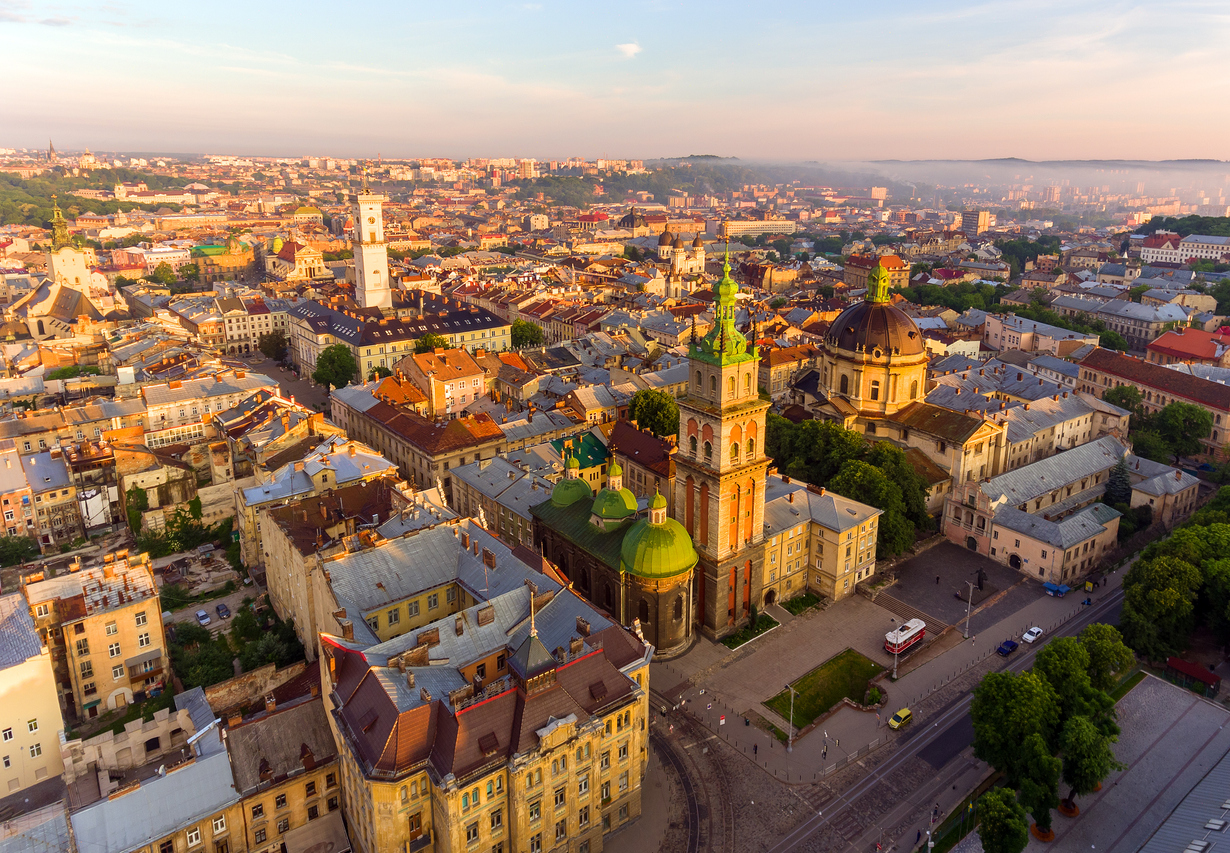
12. Lviv, Ukraine
Venturing further East, Lviv is located a short journey onwards from the Polish border and is Ukraine’s seventh largest city, making it the perfect size to explore over a few days. The architecture is a marvel in itself, with influences from nearby Poland, Austro-Hungarian heritage and a unique mix between Eastern, Central and Western European styles.

13. Sibiu, Romania
Romania is one of Europe’s most underrated countries to visit and home to some of the most epic landscapes you will see the world over. Mountains, valleys and impressive castles await, with Sibiu being one of the best cities to base yourself to explore the nearby region. Located in the region of Transylvania, Sibiu is one of the gateways to the castles in the nearby region. Be sure not to miss Bran Castle (also known as Dracula’s castle) and Peles Castle (the filming location for the recent film A Christmas Prince ).

14. Moscow, Russia
The Russian capital is as fascinating in real life as you could imagine, even if you let your mind get creative. Visiting historic sites, churches and of course the Kremlin will require at least four days on the ground to experience it all. Even if you’re staying centrally, be sure to venture underground to Moscow’s metro stations as they are considered some of the most extravagant and opulent in the world.
Read more: Where to Eat, Play and Stay in Moscow
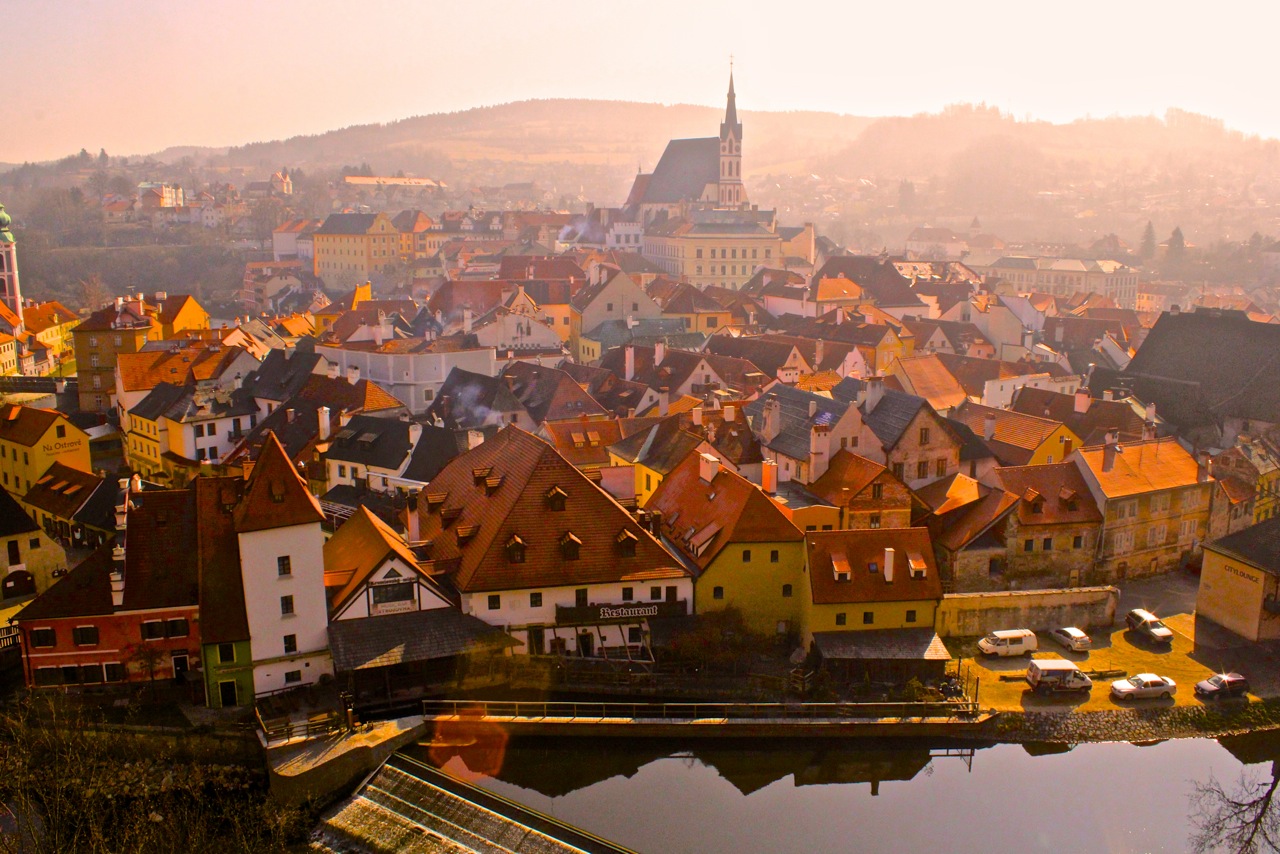
15. Cesky Krumlov, Czech Republic
As our regular readers will already know, Cesky Krumlov is a WOW favourite and hands down one of the prettiest small cities in all of Europe. Just a few hours bus ride south of Prague, there really is no way you can visit Czech Republic without stopping by “Krumlov” as it is fondly known to locals.
Read more: The cutest town: A Guide to Visiting Cesky Krumlov

16. Wroclaw, Poland
Another favourite for Poland is Wroclaw – the largest city in Western Europe and easily accessible by road from Germany if you are venturing East from there. With intricate and beautifully presented town houses, this city is as pretty as a postcard and it is little wonder it has earned its place as one of Poland’s prettiest pit stops.
Read more: Is this the prettiest town in Europe? Why you must visit Wroclaw

17. Gdansk, Poland
If you haven’t had enough of Poland quite yet then venture onwards to Gdansk, a port city on the Baltic coast. The Old Town has been reconstructed post WWII but has noticeably managed to maintain its appeal and old world charm.

18. Kiev, Ukraine
Finally, the capital of Ukraine would still have to be one of our most favourite cities in Eastern Europe and still one of the most underrated (how we are still unsure!?) There is endless history to be discovered and an ever-changing future for the country with Kiev at the heart of it. Be sure to allow at least four days on the ground to explore the city of Kiev – the sheer geographic size of the city is astounding!
Over to you! Where are your favourite cities in Eastern Europe? Follow me on Instagram for more inspiration!
Brooke Saward founded World of Wanderlust as a place to share inspiration from her travels and to inspire others to see our world. She now divides her time between adventures abroad and adventures in the kitchen, with a particular weakness for French pastries.
Find me on: Twitter | Instagram | Facebook
Thank you for sharing such amazing content.
Beautiful photos and interesting comments, butI don’t think the citizens of Bratislava (an hour away from Vienna) would thank you for saying they’re in Eastern Europe! Geographical quirks in Europe can be very misleading for non-Europeans too: such as Kirkenes in Norway being further east than Istanbul!
Very informative… Thank you!!!!
I’m happy to have found this amazing article and I very much enjoyed reading it. I am a British-Hungarian citizen. If you allow me to point out a little error, then it is about Hungary’s geographical categorisation. Hungary is not in Eastern Europe, nor is the Czech Republic. These two are as much Central European as Austria itself. According to the official map of Central Europe, Hungary and the Czech Republic are in this area. Hungary also has a famous university called Central-European University in its capital Budapest. . In a strategical and economic point of view Hungary is the … Read more »

Los Angeles
Plan a trip
First trip solo
Packing guide
20 Best Places for Solo Female Travel
Travel after a break up
20 Places in your 20’s
WAYS TO TRAVEL
Solo travel
Adventure travel
Luxury travel
Learn a language
Become a blogger

Get our Rail Planner app
Plan your trip, get extra discounts, and show your Pass as you go.

Our favorite spring routes
Celebrate spring with these 7 off-the-beaten-path train routes

All about seat reservations
Everything you need to know about booking your seats

Alternatives to Busy Routes
Travel between popular European cities without seat reservations

Through our Chatbot in the bottom right corner.

Ask the Community
Browse questions from fellow Eurail travellers, or ask your own!
- Plan your trip
- Suggested Itineraries
Eastern Europe Itinerary
- Order overview
- Reservations overview
- My Trips & Travelers
- {{translatedTraveler}} {{#promotional}} {{currencySign}} {{standardPrice}} {{/promotional}} {{quantity}}x {{currencySign}} {{finalPrice}}
- Child {{childPasses}}x FREE
- {{translatedPassType}}
- {{translatedValidityPeriodDescription}}
- {{translatedClass}}
- Remove Pass(es)
- {{variant.localizedTravelPackDescription}} {{quantity}}x Free
- {{variant.localizedPassUpgradeDescription}} {{quantity}}x {{currency}} {{price}}
- Your order will arrive by {{expectedDeliveryDate}} 1 x {{currency}} {{price}}
Your cart is empty
Eastern Europe travel is ideal for people with a curious mind in search of a fascinating Eurail train vacation! Visit Vienna’s (Austria) splendid Hofburg Palace, wander around Prague’s (Czech Republic) fairytale castle district and relax on Croatia’s pristine islands off the coast of Split . With its diverse culture and rich history, Eastern Europe has so much to offer.
Itinerary in short
Cities visited in this trip:, prague, the czech republic, budapest, hungary, braşov, romania, split, croatia, bled, slovenia.
Vienna, Austria
Click here or on the map on the right to start your adventure
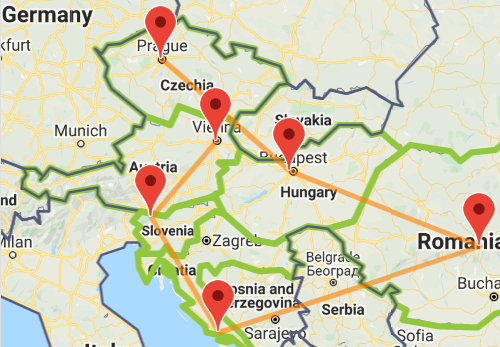
A trip to Prague, the Czech Republic’s capital should include plenty of time spent absorbing the city's spectacular historical sites in the Castle District and Old Town. Be sure to include Prague Castle , St Vitus's Cathedral and the Royal Palace and marvel at grandiose Gothic architecture. And stroll across Charles Bridge for the best views in town of the fairy-tale vista of Castle Hill. Once you've ticked off Prague's famous sites, you're ready to escape the swarms of tourists into the heart of the city. Head to the north of the city and get a taste of authentic local-life. Check out the National Gallery for a display of Czech and Slovak paintings and sculptures followed by an ice-cold Czech beer in a local bar. Other popular atractions in Prague include Franz Kafka’s House and the Mozart Museum.
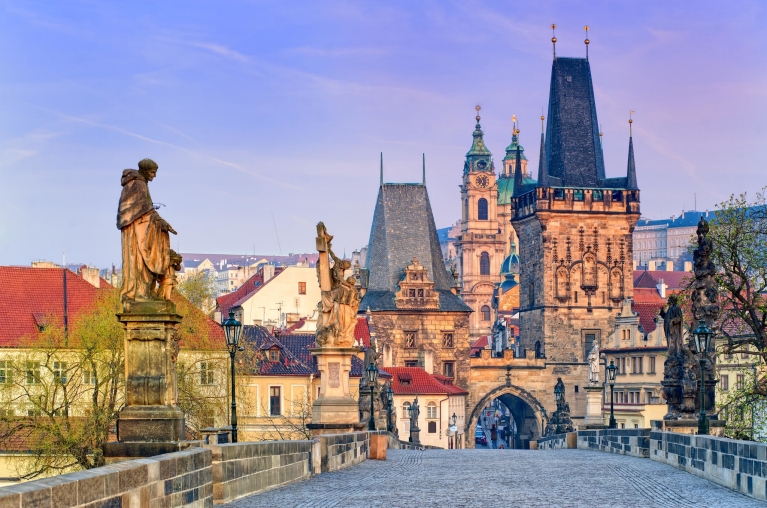
From Prague to Budapest
Travel time:
Praha hl.n.
Budapest-Keleti
Hungary's capital, Budapest is one of the most spectacular in Eastern Europe. By day enjoy an intimate boat ride along Budapest’s pride and joy, the River Danube and admire splendid views of Royal Palace . Budapest also has some decent museums and exhibitions waiting to be explored. As the sun goes down, check out the city's excellent and affordable restaurants followed by a thriving night scene to rival that of much of Eastern Europe. Sziget Festival takes place in August on Old Buda Island, and is one of Europe's biggest and best outdoor music and cultural events. Get a ticket for the whole week or a single day pass – it's fairly cheap compared to other major music festivals. Once you've worn yourself out there, head to one of Budapest's famous thermal baths. Szechenyi Spa is one of the most authentic, established in 1881, and includes a spa, pools and wellness treatments.
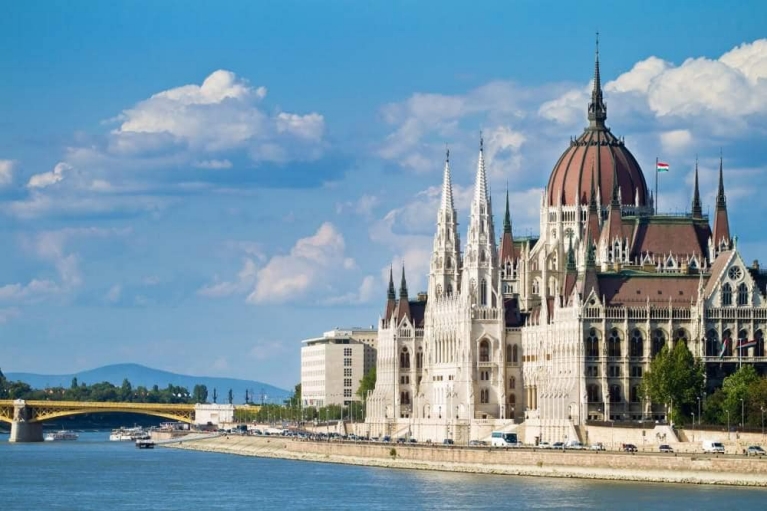
From Budapest to Braşov
Sighişoara, romania.
One of Romania’s highlights is the historic town of Braşov and the beautiful countryside that surrounds it. The town itself is set within medieval walls and has a lively atmosphere. The key attraction in the area is Bran Castle – the setting of Stoker’s legendary vampire tale. Perched up on a mountain-side, the castle looks every bit as mysterious as you would expect. Bran Castle can be reached by bus from Braşov (about 40min). There are plenty of walking routes to choose from in the area. Piatra Craiului National Park – the backdrop of Hollywood movie Cold Mountain is especially popular and is not far from Braşov. The Bucegi Mountains are also a much-loved adventure hotspot with hiking, rock-climbing and mountain-biking possible in summer. Once winter draws in skiing and snowboarding are enjoyed by the locals and tourists.
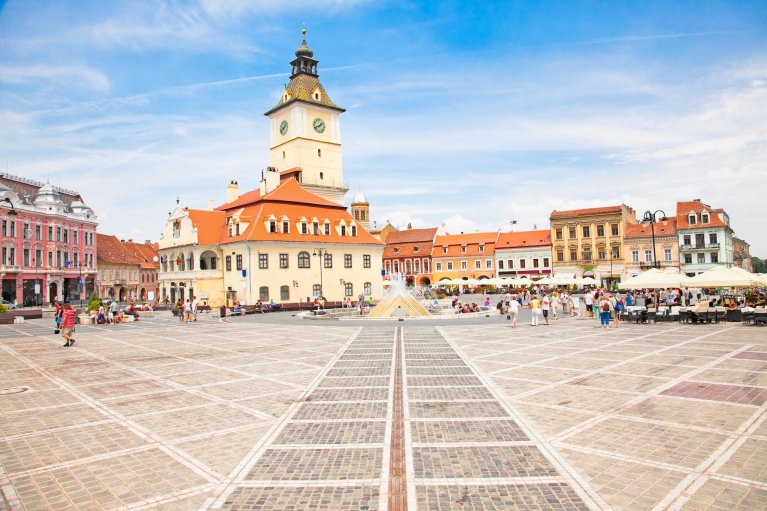
From Braşov to Split
Oradea, romania, zagreb, croatia.
Zagreb Glavni Kolod
Arrive in Split, the mecca of Croatia's Adriatic coast and step out onto a palm tree-lined train platform! Just a stone's throw from the station is the port, where the Adriatic becomes an island-hopping paradise, with regular sailings to Croatia’s stunning islands. We recommend the mouth-watering island of Brač and its mesmerising Zlatni Rat – a stunning pointy-shaped beach, jutting into clear azure waters. After some sun-soaked beach time, head back to Split for an evening stroll around the ancient city centre housed within the Diocletian Palace walls. Meander through narrow streets and admire the Venetian architecture of white façades that set the place aglow. Dubrovnik – "the pearl of the Adriatic" – is a destination not to be missed. There’s no train network to Dubrovnik so take a bus from Ploče (2-3 hours; not included in the Eurail pass ).
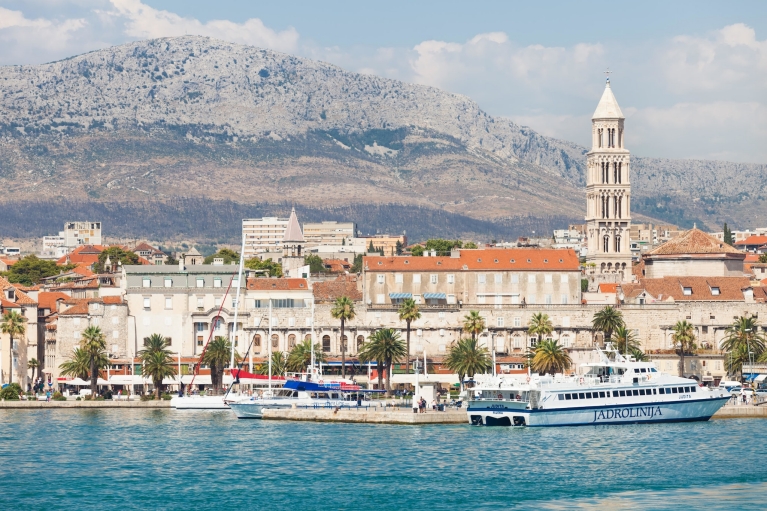
From Split to Bled
Ljubljana, slovenia.
Ljubljana Brnik
Lake Bled is the ideal place to explore Slovenia’s rich and natural cultural heritage. The enchanting beauty of Bled and its surrounding mountainous landscape can best be enjoyed aboard a ‘pletna’ water taxi – a traditional wooden boat resembling a large gondola. You'll be whisked around the mesmerising glacial lake and taken to Slovenia's only island, Bled Island . Alternatively hire a mounain bike and take your time exploring the tranquil lakeside. Punctuating the tiny island is the Assumption of Mary Pilgrimage Church , dating back to the fifteenth century. Walk the 99 steps up to the church and once inside, ring the church bell for guaranteed good luck on your Eurail trip! The lake shores can be walked in a couple of hours and for the best photo-taking spot in town, climb up to the Osojnica viewing point where you’ll be blown away by Slovenia's scenery. Castle Bled is also worth a visit.
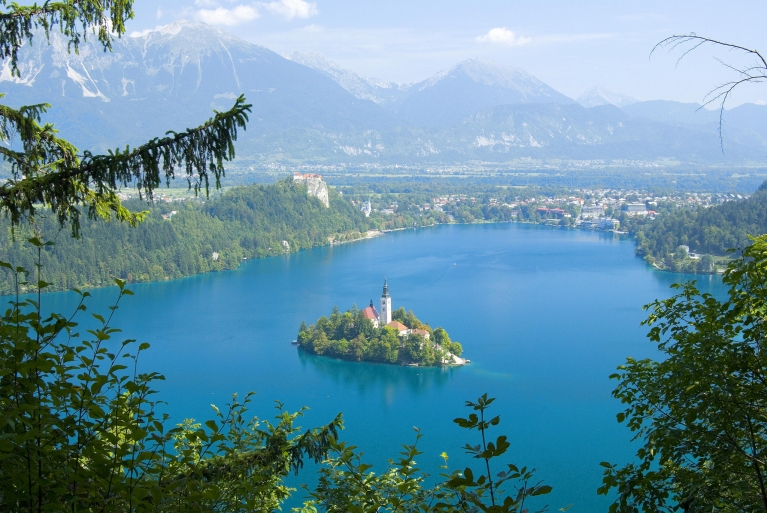
From Bled to Vienna
Villach, austria.
Villach Hbf
Vienna, Austria
Wien Meidling
It’s no surprise that Austria’s capital, Vienna has been voted as one of the top cities to live in, given that half the city is coated in green space, and there are grand ornate buildings in every direction. Not to be missed is Stephansdom, Vienna’s iconic Gothic cathedral. In the surrounding Stephansplatz – sit back at a café terrace and watch Viennese life as it passes you by. Another key site is the Hofburg Palace – the imperial palace once home to some of Austria’s most powerful people, including the Habsburg dynasty. Tour the grand rooms of the old residence and explore the 3 museums. If you’re traveling in summer try and fit Donauinselfest (website in German) into your schedule. This popular music festival held on Danube Island is absolutely free! Expect a line-up of both local and international acts.
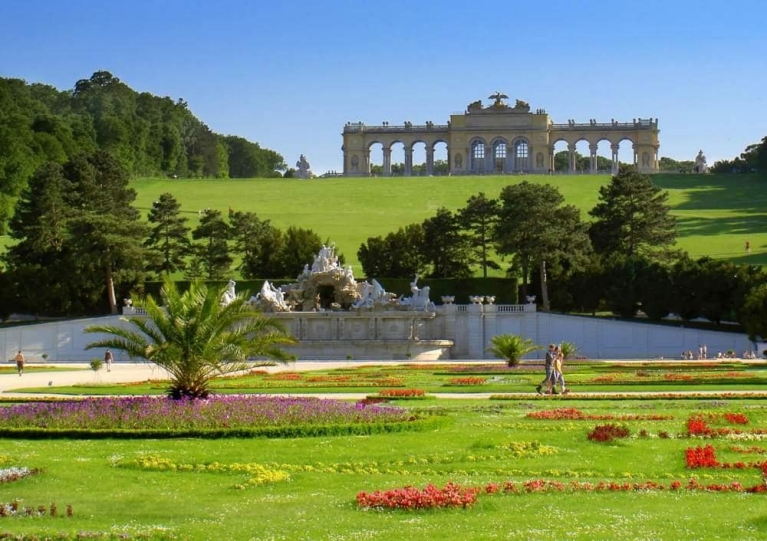
Experience this itinerary with the Eurail Global Pass
Change of currency.
You cannot change the currency once you have a Pass in your cart. Remove the Pass, and then change the currency on the website header.
Eastern Europe

- 1 Countries and territories
- 3 Other destinations
- 4.1 History
- 6.1 By plane
- 6.2 By train
- 7 Get around
- 12 Stay safe
The term Eastern Europe can defined in several different ways; see the understand section below for discussion. This article uses a fairly narrow definition, covering only Belarus , Russia and Ukraine .
Countries and territories [ edit ]
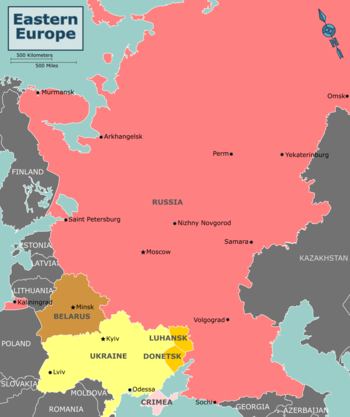
Although part of Kazakhstan is west of the Ural River and thus in Europe, the country is mainly in Central Asia and covered as part of that region.
For the south-easternmost part of Europe, see Caucasus .
Cities [ edit ]

- 55.790833 49.114444 1 Kazan — the capital of Tatar culture is an attractive city in the heart of the Volga Region with an impressive kremlin
- 50.45 30.523611 2 Kyiv (Kiev) — Ukraine's capital with heritage from the Viking Age
- 53.902246 27.561837 3 Minsk — capital of Belarus
- 55.755833 37.617778 4 Moscow — the heart and brain of the largest country on Earth, Moscow has the heritage of both the tsars and the Soviets and all the other current or former occupants of the Kremlin
- 46.485722 30.743444 5 Odesa — a harbour city on the Black Sea with a mixture of different cultures.
- 59.95 30.316667 6 Saint Petersburg — Russia's gateway to the West
- 44.605 33.5225 7 Sevastopol — a port city on the Crimea
- 43.585278 39.720278 8 Sochi — a city on the Black Sea which hosted the 2014 Winter Olympics
- 48.708611 44.514722 9 Volgograd — formerly called Stalingrad, this city was the scene of perhaps the deciding battle of World War II , and now home to a massive war memorial
Other destinations [ edit ]
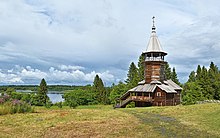
- 56.832113 60.348417 1 Border of Europe and Asia — it's clearly defined near Yekaterinburg , and a very popular stop for photo ops straddling the continents!
- 56.8 39.79 2 Golden Ring — a loop of pretty historical cities and towns forming a ring northeast of Moscow
- 65.07 60.15 4 Komi Virgin Forests — profoundly remote, and hard-to-visit, but this is by far Europe's largest wild area, containing Europe's largest National Park, Yugyd Va
- 57.016667 28.916667 5 Pushkinskiye Gory — the estate and museum of Alexander Pushkin, a world-known Russian poet.
- 51.272222 30.224167 6 Chernobyl — tour the site of the infamous 1986 nuclear disaster
- 48.75 30.2166 9 Uman — city in central Ukraine with the famous Sofiyivka Park
Understand [ edit ]
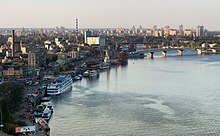
This article covers Belarus, Russia and Ukraine, all of which use East Slavic languages and share a common heritage going back to the Russian Empire and the Soviet Union , with Orthodox Christianity as the dominant religion. Parts of Western Ukraine , including the city of Lviv , have a Catholic majority, albeit one that celebrates its liturgy according to the Eastern rite.
During the Cold War a different definition of "Eastern Europe" was used, at least in the Western press and history textbooks. It included all the Communist countries of Europe which were members of the Warsaw Pact alliance, excluding the Soviet Union. In Churchill's phrase, these were the countries behind the "Iron Curtain".
Countries that were included in that definition but are treated in other region articles here are:
- Bulgaria , much like the countries covered here, with a South Slavic language and a strong Orthodox church
- Poland , the Czech Republic and Slovakia , with West Slavic languages and largely Roman Catholic
- The former East Germany , now part of the reunited Germany
Some countries in Europe were lumped in with Eastern Europe by some because they were Communist, although they were not part of the Warsaw Pact and neither geographically nor linguistically East European. These were:
- Yugoslavia — now Serbia , Croatia , Slovenia , Bosnia and Herzegovina , Montenegro , North Macedonia and Kosovo
- Albania (was in the pact, but withdrew from it in the 1960s)
A broader definition could include the following former Soviet republics and areas:
- Russia, Belarus and Ukraine, which we cover here
- Moldova and the not-widely-recognised breakaway country of Transnistria
- The Baltic states : Lithuania , Latvia and Estonia
- Georgia , Armenia and Azerbaijan
- Abkhazia and South Ossetia , which are secessionist states, not widely recognised by other countries
History [ edit ]

Since ancient times, nomadic peoples have travelled across the Eastern European plains, forests and tundras. The Rus were a tribe of partially Scandinavian origin (see Vikings and the Old Norse ) which settled along the rivers of eastern Europe from the 9th century and onwards, and over time became assimilated by the local Slavic population, with their name surviving in the names of Russia and Belarus. In the 13th century, the Mongol Empire conquered the Eurasian plains and vassalised many Slavic nations under the Golden Horde. The Russians eventually defeated the Mongols, and in 1547 Ivan IV proclaimed himself Czar of Russia, a country which was to expand south to the Caspian Sea, and east to the Pacific Ocean. Most of today's Belarus and Ukraine were part of the Polish-Lithuanian commonwealth .
In 1721, Peter the Great defeated the Swedish Empire in the Great Northern War, and proclaimed himself to be Emperor of the Russian Empire , which became one of Europe's and the world's great powers.
The Russian Empire was drawn into World War I , which led to the Russian Revolutions (February and October). The Soviet Union was the product of the October Revolution, and after it consolidated control over Russia, it was able to take over the other states defined as Eastern Europe in this article. The Soviet Union was hit hard by World War II in Europe , and was one of the adversaries of Cold War Europe until dissolved in 1991, with Russia, Belarus and Ukraine becoming sovereign countries. The Soviet power structure still remains in the region, as Russia keeps Belarus as a close ally, and makes claims on Ukraine.
Talk [ edit ]
Russian , Belarusian and Ukrainian are the East Slavic languages, together with the Rusyn language, which is spoken locally in the Carpathians. The East Slavic languages are written with Cyrillic script and are to some degree intelligible to each other. Ukrainian and Belarusian are mutually intelligible to a large extent, while Russian significantly more challenging for those who only speak Ukrainian or Belarusian and vice versa. Russian was the common language for inter-ethnic communication in the Soviet Union and is commonly used in Belarus, as well as in eastern and southern Ukraine.
30 million people in Russia have a mother language other than Russian; see Minority cultures of Russia . In Western Ukraine, there are also minority communities who speak Polish, Romanian or Hungarian as their mother tongues.
English was not commonly taught during the Soviet era but can be understood by educated young people.
Get in [ edit ]
By plane [ edit ], by train [ edit ].
The Trans-Siberian Railway from Beijing and Vladivostok to Moscow is a classic rail journey. The Almaty – Urumqi service runs twice per week, and Moscow is easily reached from Almaty by train.
Get around [ edit ]
Due to the war, transportation between Ukraine and Russia is shut down.
See [ edit ]
The Russian Empire was a patron of European art and European classical music , in particular in Saint Petersburg and Moscow. The autonomous republics are known for their local folk culture, see minority cultures of Russia .
Do [ edit ]
The vast sceneries of the countries give opportunities for outdoor life .
Eat [ edit ]
In such an area covering very different climates, there are different cuisines. Due to spontaneous and forced migration inside the Russian Empire and later the Soviet Union, traditions from far away can be found in surprising places, and of course in cities such as Moscow. Russian cuisine is the dominant culinary tradition in much of this area. The cuisines of Belarus and Ukraine are related to Central European cuisines, particularly those of other Slavic countries. There are also influences from Balkan cuisine, Georgian cuisine and Chinese cuisine .
Drink [ edit ]
Tea is the traditional hot drink.
Eastern Europe is part of the "vodka belt", with both plain and seasoned vodka. Crimea and Carpathian Ukraine are known for wine .
Mead and kvass are lighter beverages typical to the region.
Stay safe [ edit ]
Other than the geopolitical situation in the region, Eastern Europe is generally safe for tourists. However, most of this region has cold winters , with Russia being notorious for its frigid weather.
Go next [ edit ]
- Nordic countries , Baltic countries , Balkans
- Has custom banner
- Has warning box
- Has mapframe
- Maps with non-default alignment
- Maps with non-default size
- Has map markers
- All destination articles
- Outline regions
- Outline articles
- Region articles
- Has Geo parameter
- Articles Geo different to Wikidata
- Pages with maps
Navigation menu
- 25 Places In Eastern Europe...
25 Places in Eastern Europe You Must See at Least Once in Your Life

For travellers looking to explore past Paris, Barcelona, and London, Eastern Europe offers stylish capital cities with world-class museums, breathtaking natural beauty, and well-preserved architectural gems dating back to medieval times. Whether it’s your first time travelling to Eastern Europe or your 50th, here are Culture Trip’s suggestions for the 25 places you must see at least once in your life.
1. wieliczka salt mine, poland.
Natural Feature

2. Hungarian Parliament Building, Hungary
Architectural Landmark, Building

The Hungarian Parliament Building , also known as the Parliament of Budapest, is the largest building in Hungary, and one of the largest Parliament buildings in the world. The symmetrical facade of the exterior is designed in the Gothic Revival style, but the inside is just as impressive. Book your tour in advance to avoid waiting in long lines.
Tatra Mountains, Slovakia
Slovakia ’s Low and High Tatras offer the best hiking and skiing in the country. Numerous mountain lodges provide respite to hikers in the summer and skiers in the winter. The scenic views are breathtaking, and the prices for accommodation and food are a fraction of what you would find in the Alps or Dolomites .
Low Tatras, Nízke Tatry, 032 11 Lazisko, Slovakia High Tatras, Slovakia

3. Bran Castle, Romania
Archaeological site, Building, Museum, Historical Landmark

Valley of the Beautiful Women
After exploring the castle ruins in Eger, Hungary , take a bus a short distance away to the Valley of the Beautiful Women. While finding beautiful women here is certainly likely, what you’ll also find is many wine cellars, offering regional red and white wines by the glass and bottle. Taste-test as many as you like, and leave some room in your suitcase; at 3 to 15 Euros for most bottles, you’ll want to carry home more than just one.

4. Plitvice Lakes, Croatia

Cesky Krumlov, Czech Republic
Possibly the most picturesque town in the Czech Republic; certainly worth the train or bus trip from Prague . First, take a walking tour of this small, quaint town, and then find a seat at one of the many outstanding local breweries.

Timisoara city centre, Romania
Modern cafés and restaurants with budget-friendly prices line the picturesque and pedestrian-only Timisoara city centre. Consider taking a bike tour to learn more about the history of this Romanian treasure, which will shine as the European Capital of Culture in 2021.

Lake Balaton, Hungary
The “Hungarian Sea” is packed with Hungarians on holiday during the summer months of July and August. Join them at a relaxing lake resort, or at one of the large festivals which takes place by the lake each summer, such as the legendary Balaton Sound or the eclectic Samsara yoga and trance music festival.
Banska Stiavnica, Slovakia
In south-central Slovakia, this historic UNESCO World Heritage town used to make money from mining. Today, visitors can still take a tour of the old mine shafts, and admire the 16th-century churches, Renaissance palaces, and regal medieval castle in the well-preserved town centre.

5. Lake Skadar National Park, Albania/Montenegro
Brno, czech republic.
The Czech Republic’s second largest city offers Baroque churches, world-class museums, a gorgeous Christmas market, and a a more local feel than Prague. Sip a coffee at one of the many trendy hipster cafés taking the city by storm, then walk up the hill to tour the medieval Špilberk Castle which stands guard over the city.

Debrecen, Hungary
Hungary’s major university city in the east has been welcoming more and more tourists thanks to budget airlines such as Wizz Air. You can find great coffee at Volt Egyszer café and a variety of Hungarian beers, wines, and spirits at Roncs bar , a ruin pub in the city centre. Go to the top of the Nagytemplom church for a lovely view of the city.
Nagytemplom, Debrecen, Kossuth tér 1, 4026 Hungary, +36 52 614 160
Volt Egyszer café, Debrecen, Piac u. 16, 4024 Hungary, +36 52 218 105
Roncsbar, Debrecen, Csapó u. 27, 4024 Hungary, +36 52 688 050
Maramures, Romania
Visiting the villages in the Maramures region of northwestern Romania feels like stepping back in time. Visitors can admire the unique wooden churches and carved wooden gates. Several guided tours offer travellers the opportunity to learn about the architecture, folk traditions, and culture of this off-the-beaten-path destination.

Slovak Paradise national park, Slovakia
Slovakia offers so many natural paradises for hikers, but what is really special about Slovak Paradise national park is the ladders, wooden walkways, chains, and canyons you can navigate as you hike through one of the most beautiful nature areas in Eastern Europe.
Old Town, Lviv, Ukraine
Lviv’s Old Town’s buildings are most famous for their intriguing fusion of Eastern European architectural styles with Italian and German influences. The Old Town has been included in UNESCO’s World Heritage List since 1998, including the High Castle, several stunning churches, and the bustling Market Square.

Sighisoara, Romania
This tiny town in Transylvania is famous as the site of Vlad the Impaler ’s childhood home. Vlad the Impaler later became the inspiration for the world famous Count Dracula, so Dracula fans flock here to see where he grew up. Sighisoara might have a dark spot in its past, but is now a perfectly pretty pastel town within old medieval walls on a small hill; dotted with lovely cafés, restaurants, and boutique hotels.
Vilnius, Lithuania
Lithuania’s capital city is famous for its Baroque architecture and the medieval Old Town. The city is also host to several interesting museums, including the sobering, but must-visit Museum of Genocide Victims .

Tkalčića Street, Zagreb
Croatia’s capital is home to a delightful street packed with fabulous cafés and restaurants serving food and drink at all hours of the day and night. In the morning, enjoy a coffee at Sjedi 5 . In the evenings, relax over a locally brewed beer at Pivnica Mali Medo pub. Stroll around and admire the old buildings full of history which now serve as the primary meeting places for residents of Zagreb and tourists alike. Sjedi 5, Ul. Ivana Tkalčića 84, 10000, Zagreb, Croatia , +385 97 696 6988
Pivnica Mali Medo, Ul. Ivana Tkalčića 36, 10000, Zagreb, Croatia , +385 1 4929 613
6. The Skull Tower of Nis, Serbia

7. Auschwitz, Poland
Memorial, Museum

Ljubljana, Slovenia
Ljubljana might be a capital city, but it doesn’t feel like one. The fairytale capital of Slovenia is presided over by its medieval castle on a hill, and the winding river, which cuts through the city centre, is perfect for taking a SUP Tour to learn all about the history of this magical place.

Tokaj region, Hungary
In the northern part of Hungary and southern part of Slovakia, you will find one of the most underrated wine regions in Europe – Tokaj. Although Tokaj wines are well-known in Eastern Europe, they are not frequently exported to the west. Head there now to visit the gorgeous vineyards and sample Tokaj’s best before the crowds.
Since you are here, we would like to share our vision for the future of travel - and the direction Culture Trip is moving in.
Culture Trip launched in 2011 with a simple yet passionate mission: to inspire people to go beyond their boundaries and experience what makes a place, its people and its culture special and meaningful — and this is still in our DNA today. We are proud that, for more than a decade, millions like you have trusted our award-winning recommendations by people who deeply understand what makes certain places and communities so special.
Increasingly we believe the world needs more meaningful, real-life connections between curious travellers keen to explore the world in a more responsible way. That is why we have intensively curated a collection of premium small-group trips as an invitation to meet and connect with new, like-minded people for once-in-a-lifetime experiences in three categories: Culture Trips, Rail Trips and Private Trips. Our Trips are suitable for both solo travelers, couples and friends who want to explore the world together.
Culture Trips are deeply immersive 5 to 16 days itineraries, that combine authentic local experiences, exciting activities and 4-5* accommodation to look forward to at the end of each day. Our Rail Trips are our most planet-friendly itineraries that invite you to take the scenic route, relax whilst getting under the skin of a destination. Our Private Trips are fully tailored itineraries, curated by our Travel Experts specifically for you, your friends or your family.
We know that many of you worry about the environmental impact of travel and are looking for ways of expanding horizons in ways that do minimal harm - and may even bring benefits. We are committed to go as far as possible in curating our trips with care for the planet. That is why all of our trips are flightless in destination, fully carbon offset - and we have ambitious plans to be net zero in the very near future.

Guides & Tips
Five places that look even more beautiful covered in snow.

The Best Places to Travel in May 2024

The Best European Trips for Foodies

The Best Private Trips to Book in Europe

The Best Places to Travel in August 2024

The Best Private Trips to Book With Your Support Group

The Best Places in Europe to Visit in 2024

The Best Rail Trips to Take in Europe

The Best Private Trips to Book in Southern Europe

The Best Trips for Sampling Amazing Mediterranean Food

The Best Private Trips to Book for Your Religious Studies Class

Places to Stay
The best private trips to book for your classical studies class, culture trip spring sale, save up to $1,100 on our unique small-group trips limited spots..

- Post ID: 1536533
- Sponsored? No
- View Payload
Deals of the Week All of Europe's finest Up to 50% OFF
Eastern Europe Tours & Trips
Discover an appealing variety of Eastern European tour packages that will take you to fascinating cities rich in history such as Vienna, Prague or Budapest. Meet new people and experience new cultures while visiting Poland, Croatia or Transylvania with our unique adventure packages. We've also collated the best 4 week Europe itineraries and 2 week Eastern Europe itineraries .
250+ Eastern Europe tour packages with 2,033 reviews
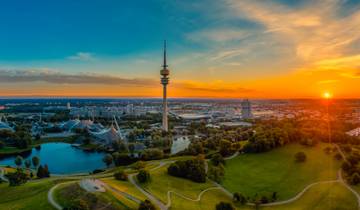
- Coach / Bus
- Sightseeing
Incredible Central & Eastern Europe (4 Star Hotels)
- €150 deposit on some dates Some departure dates offer you the chance to book this tour with a lower deposit.

- In-depth Cultural
- Christmas & New Year
Best of Central Europe
The Central Europe tour I was on with my daughter went beyond my expectations. I was nervous about having all that free time in new places but Eliza our amazing tour guide, gave us the best orientations and knowledge of all the places we visited. Sharing her local knowledge and her mastery of all the languages to help us fully experience and enjoy the countries we were in, made it perfect. The group size was good and she looked after us at every turn, especially on busy train stations and on arrival at new places. She helped us experience the local culture and food in each location, so we had highlights all through the tour. Highly recommend
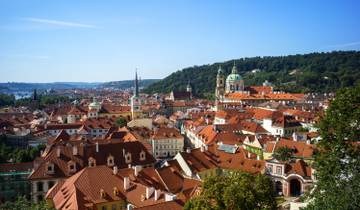
Imperial Capitals ( 6 days )
Excellent experience, well organised tour by Europamundo.

Budapest to Sofia Adventure
Really enjoyed the itinerary and the program. Lots of free time. Advance notice would have provided opportunity to book other tours, plan to do more in the cities. Transport was mostly public bus, train and local taxi which was problematic for some on the tour carrying bags up and down flights of stairs. The taxi drivers were not so helpful and their vehicles had limited space to put our luggage. Perhaps an arrangement with the taxi company ahead of time to ask that drivers to come with empty boots and willing to assist in putting the luggage in would be appreciated.

Journey through Central Europe & Romania

Budapest to Istanbul
Great leader, interesting destinations. Would have never seen many of these places on my own.
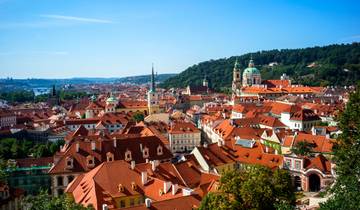
Eastern Europe Road Trip (End Berlin, 13 Days)
Tammy rocked my world. She was the sun to my stars. She was the peanut butter to my jelly. Woo! Tammy!
- €100 deposit on some dates Some departure dates offer you the chance to book this tour with a lower deposit.
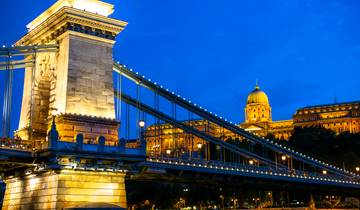
Highlights of Eastern Europe (Classic, End Vienna, 14 Days)
Wonderful way to see Europe. Staying 2 nights in most places gave us time to explore on our own. We had a great Tour Leader and Driver who made the trip so special. My absolute highlight was the UNESCO listed Wieliczka Salt Mine. It was an amazing experience that I never tire of telling people about.
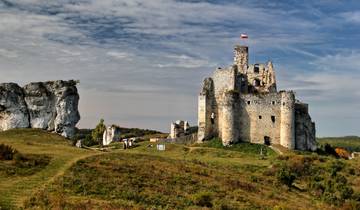
The Best of Eastern Europe
This was a great tour made wonderful by our tour guide Zdenka. She knew these countries so well, she wanted us to see everything possible and she made it happen! Our bus driver, Gaspy, kept us safe and on time. Would recommend this tour, you learn so much and the countries visited were so beautiful and welcoming. This is the first time that Globus gave us a couple small, quirky new hotels that were not comfortable. Please Globus stick to regular hotels that have great staff. if the hotels are far from city center please give us transportation there and back on our afternoons off whenever possible.

Eastern Europe Road Trip (End Warsaw, 13 Days)
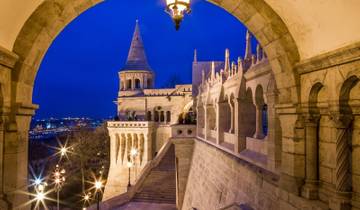
Best of the East
It was good we enjoyed
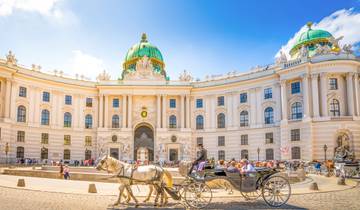
Prague Vienna and Budapest (10 Days)
It was a very good trip. Prague, Vienna and Budapest are very beautiful cities and it was great to get into the museum in Vienna before it was open to the public. We also did Schonbrunn Palace early and avoided the crowds. I think the highlight for me was the Budapest evening cruise and dinner as it was just stunning and the food was excellent. We picked this tour because of the amount of free time it offered, but if you were to take up all the optional tours, there would be very little free time left for wandering these marvellous cities. We did half the tours on offer so we could head off on our own and do things that weren't on the optional list.
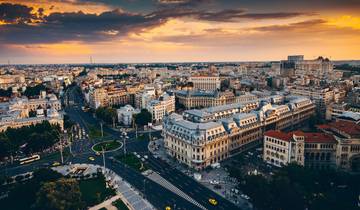
- River Cruise
The Danube from Romania to Budapest with 1 Night in Bucharest and 1 Night in Budapest 2024
The cruise was excellent in every way. But my experience with you Tourradar is very bad. Never ever I will use your services again
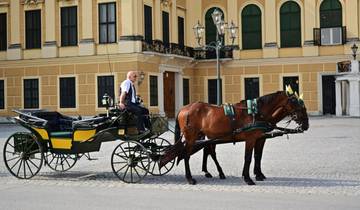
Prague to Budapest Ride
the route was had a good amount of variety. The guide did an amazing job even though she was on her own. The company needs to better communicate hotel changes since I had booked extra nights in Budapest and had to move hotels.

The Bohemian (Classic, End Budapest, 9 Days)
What people love about eastern europe tours.
To be honest, part of what made the trip fantastic was our group of 12- could not have had a better group to travel with- which is clearly luck, but a piece of our group being so cohesive was Nejca, our guide. She was perfect! Available but not pushy. Laid back, but willing to assert herself to make our experience the best. She made each person in the group feel special and appreciated. Thank you, Nejca! The itinerary was quite good as well. Although there were places I could have stayed for a day longer, I think it’s important to not stay too long and feel like time is wasted on a certain place on the tour. Transportation was efficient and Nejca did a great job getting us to our destinations easily and without rushing. Accommodations were very good- with the exception of Prague. Although our apartment was nice, it was clear that the residents of Prague feel that their space is being taken over by tourists- which is clearly true. I would have preferred to have stayed in a hotel in Prague-honestly, I would have paid more for it. Other than that, cannot day enough good things about the trip! Thank you!!
Wonderful cities, well-organised, and great value. Shout out to our guide, Jacob, who was as informative and professional as you'd expect, but also adaptable when things out of his control were going wrong (traffic, weather, etc.) And the driver, Nathan, who was always helpful and reliable - almost like a second tour guide.
A great tour that lived up to expectations and covered a lot of ground in a short space of time.
- Fully Guided (512)
- In-depth Cultural (373)
- Personalized (369)
- Family (350)
- Private (208)
- River Cruise (120)
- Active (68)
- Hiking & Trekking (54)
- Self-Guided (48)
- Bicycle (47)
- Coach / Bus (44)
- Food & Culinary (14)
- Self Drive (12)
- Custom (10)
- Festival & Events (10)
- Intl. Flights Included (7)
Destinations
- Bulgaria and Romania (46)
- Czech Republic and Hungary (21)
- Austria and Czech Republic (15)
- Czech Republic and Germany (9)
- Czech Republic and Poland (6)
- Romania tours (278)
- Bulgaria tours (86)
- Czech Republic tours (70)
- Poland tours (65)
- Ukraine tours (38)
- Slovakia tours (29)
- Moldova tours (20)
- Hungary tours (13)
Travel Styles
- Small Group (286)
- Budget (62)
- Luxury (60)
- Singles and Solo (406)
- For Couples (114)
- Young Adults (16)
- Seniors (193)
- 3 Day Tours (85)
- 7 Day Tours (150)
- 10 Day Tours (181)
- 2 Week Tours (61)
- 3 Week Tours (26)
- Spring 2024 (245)
- Summer 2024 (412)
- Fall / Autumn 2024 (415)
- Winter 2024 / 2025 (187)
- Spring 2025 (240)
- Summer 2025 (224)
- Fall / Autumn 2025 (222)
- Winter 2025 / 2026 (77)
- May 2024 (305)
- June 2024 (372)
- July 2024 (372)
- August 2024 (389)
- September 2024 (393)
- October 2024 (341)
- November 2024 (206)
- December 2024 (180)
- January 2025 (140)
- February 2025 (136)
- March 2025 (162)
- April 2025 (193)
- May 2025 (220)
- June 2025 (209)
- July 2025 (211)
- August 2025 (200)
- September 2025 (203)
- October 2025 (186)
- November 2025 (119)
- December 2025 (77)
- Best Two-Week Europe Itineraries: Where should you go
- Best 2 Week Eastern Europe Itineraries 2024/2025
Discover TourRadar
- See All Tour Operators in Eastern Europe
- Maasai Mara Safari
- Mainland Greece tours
- Nile Valley 10 day tours
- Travel Con tours
- Nicaragua November 2025 tours
- Aegean Dream ( 13 days )

8 Things To Know About Travelling to Eastern Europe
If you are planning a trip to Eastern Europe then this article is for you.
As a tour guide myself, I get the same questions from travellers who are travelling to Eastern Europe.
Hi, we’re Rach & Marty!
We’ve visited every country in the world and want to help you get the most out of your travels!
Whether you need an expertly planned itinerary , some experienced hints and tips , or just craving a delicious food adventure , we’ve got you covered!
We may earn affiliate commissions from websites we link to, at no cost to you. Click here for details.
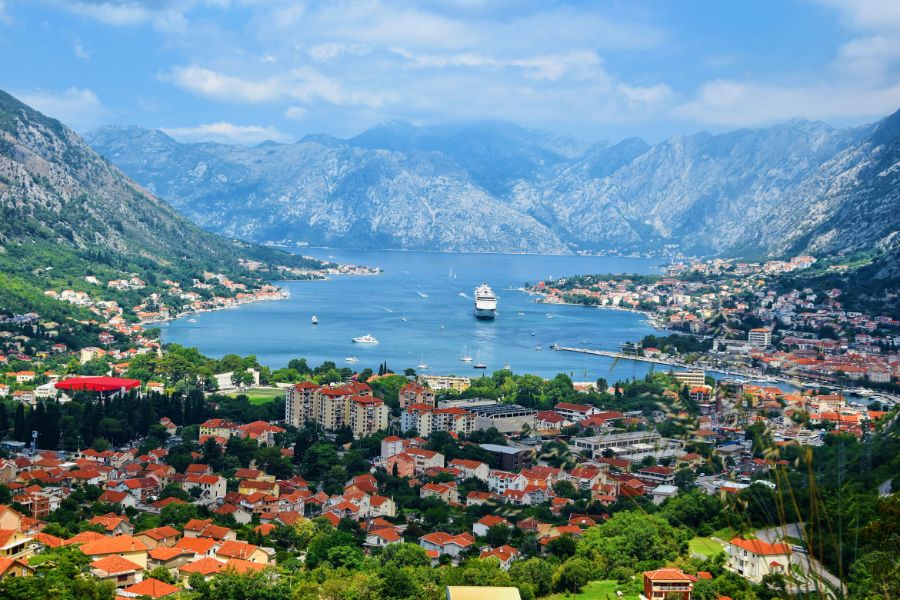
So I decided to answer them all here, and I am certain you’ll find this helpful.
Table of Contents
1. What countries are in Eastern Europe?
Let’s start with the definition of Eastern European Countries. This really depends on how you split Europe into regions. You either have Western and Eastern Europe or split them into more appropriate regions of Balkans, Baltics, Central Europe and Eastern Europe.
In the wider sense, there are 20 Countries in Eastern Europe, and they can also be split into these four regions.
- Central Europe: The Czech Republic, Slovakia, Poland, Hungary,
- Eastern Europe: Ukraine, Belarus, Bulgaria, Romania, Moldova and the European part of Russia.
- The 3 Baltic states : Latvia, Lithuania, Estonia
- The Balkans : Slovenia, Croatia, Bosnia & Herzegovina, Serbia, Macedonia, Kosovo and Albania
If you are getting the Balkans and Baltics confused, I recommend reading my article Baltics and Balkans Countries Explained .
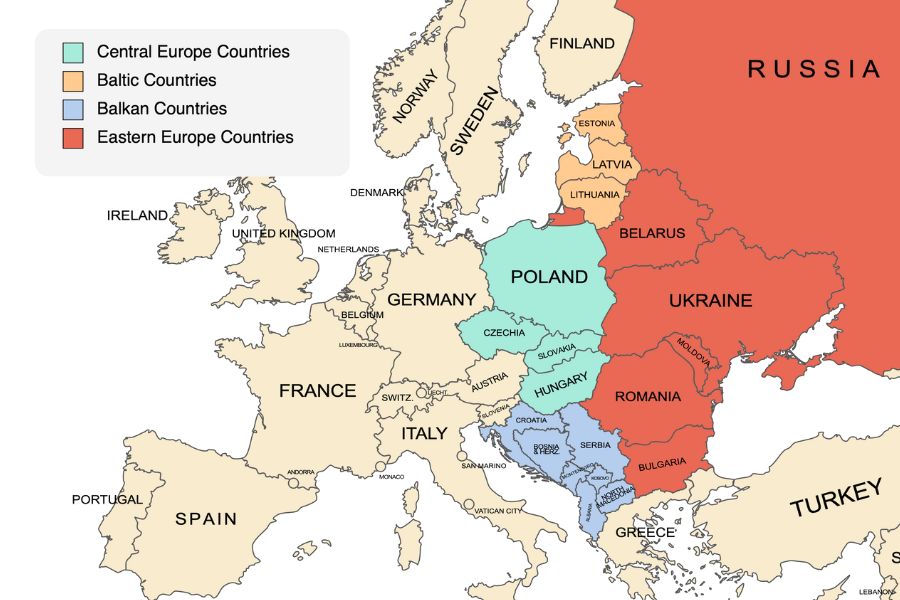
2. Is it safe to travel in Eastern Europe?
I have been asked these questions for many years but this year, the main reason is the war in Ukraine that has everyone worried. So let me answer both points:
Is travelling to Eastern Europe safe for solo travellers or women?
Absolutely. Apart from Belarus, every country in Eastern Europe has a lower crime rate than countries in Western Europe. So, the chances of you being robbed, pickpocketed, or involved in any form of crime are on par with Western Europe.
I personally feel safer as a solo woman on the streets of Eastern European capitals than in London or Paris at night. The point is, you are as safe as in Western Europe.
Our 12 tips for safe travel apply when travelling to Eastern Europe and the rest of the world too.
Please note: Some capital cities have a small number of bars where male tourists end up “spending a lot of money” on drinks with pretty girls who invite them there.
Is it safe to travel to Eastern Europe right now with the war in Ukraine?
With the ongoing war in Ukraine, I hear more people being hesitant about travelling to Eastern Europe. Being from Slovakia, I don’t believe it matters if you are in Poland, Germany , or Austria .
Should this conflict spill over into other countries beyond Ukraine in Eastern Europe, they are all part of NATO, and it would mean the whole of Europe is at war based on international law.

3. What is the best way to travel around Eastern Europe?
Is Eastern Europe easy to travel around? Yes, it is. Travelling to Eastern Europe from Western Europe is easy, there are plenty of flights to get you to your first point of travel or you can get there by train to bus. As for continuing your travelling in Eastern Europe, well the infrastructure is also great.
Here are recommended ways to travel around Eastern Europe:
Travelling in Eastern Europe by trains
While trains in Eastern Europe might not be as fast as TGVs in France or Switzerland, and Italy, the good news is that there are many, and they often cost a third of the price.
There are great overnight trains with sleepers and some exceptional private trains too, such as Regiojet .
I wrote a dedicated blog on how to travel Europe by train for all the know-how. As for Eastern Europe, just remember the Balkans have too many mountains and trains might not connect all cities, buses are therefore a better option. But trains are a fantastic option for Prague – Bratislava – Budapest journey.
You can continue on Belgrade or add Warsaw and Krakow.
I use Trainline to search, compare and book the cheapest train fares all over Europe. Their website is so user-friendly, and the prices are unbeatable, with the average saving being up to 60 off!
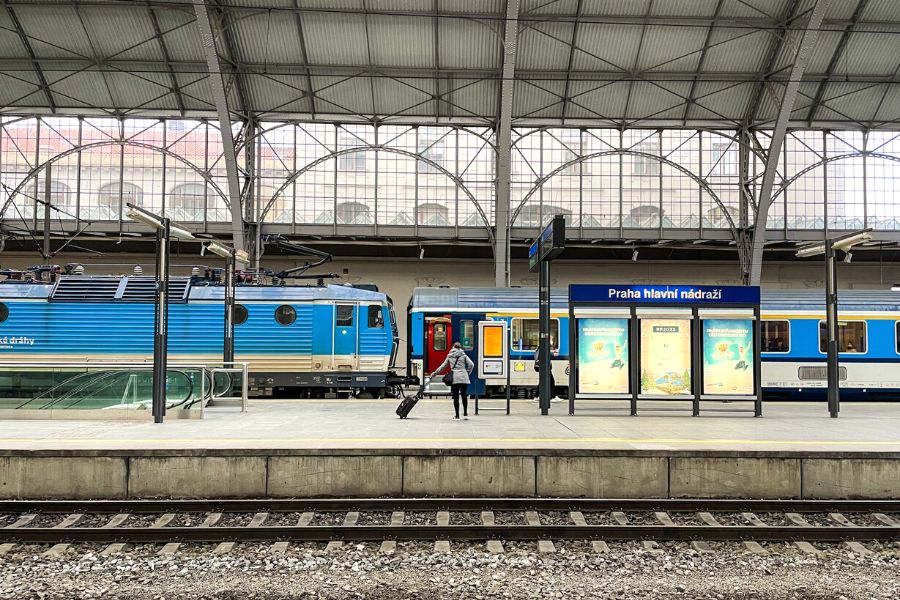
Travelling to Eastern Europe by bus:
You can get everywhere and anywhere on buses in Eastern Europe. Some of the best international routes are run by Flixbus (a German Company), Eurolines, Regiojet and Omnibus. The good news is that they often include free wifi, sometimes even a coffee and USB chargers.
Plus, they can be super affordable, and buying a ticket is easy online.
I recommend using Rome2Rio to check the connection for the best option to get from A to B. And to make instant reservations, we use Omio to reserve train and bus tickets all over Europe.
For domestic routes, you can always find buses that will get you there.
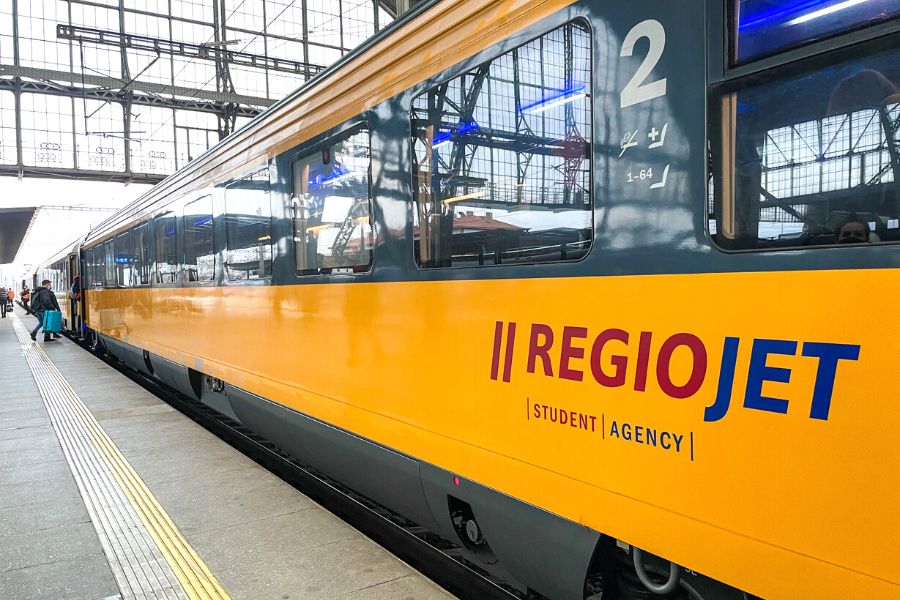
Car Rental in Eastern Europe:
Yes, car rental in Europe gives you much freedom if you are keen to explore countries in depth with smaller towns or national parks.
If you’re planning to see the main cities, you are better off using a train/bus/plane to get between them and then public transport. The best way to get around the cities is on public transport (trans, metro, buses) and with a combination of Uber/Grab/taxi.
Parking, tolls, and the cost of fuel when renting a car might add up quickly when travelling to Eastern Europe and around. And sometimes resting on a 5-hour train journey is a better option than a 4-hour drive by car.

Lowcost Airlines in Eastern Europe
With the expansion of low-cost companies across Eastern Europe, you can get some amazing deals with airlines such as AirBaltic, Ryanair, Easyjet and Wizz Air, with a base in Budapest being the best .
With Wizz Air, you might be able to fly from Bratislava to Sofia for as little as 11 Euros. Budapest to Zadar for 20 Euros.
To find the best deals, book on Skyscanner .

Is country hopping in Europe possible?
Absolutely. You can choose your type of transport with Omio or mix it up. Travelling to Eastern Europe these days can easily include multiple countries in a trip.
Get Connected with eSIM

Get connected easily on your travels—buy an eSIM! An eSIM works like an app: buy it, download it, and get connected in minutes! It’s easy, affordable, and convenient. Keep your original phone number, too!
Click below and view which eSIM data plan you need for your next adventure. Use our referral code: RACHEL5045 , to get $3 off your first purchase !
4. Which countries in Eastern Europe are part of the European Union?
When travelling to Eastern Europe, don’t forget to check your visa requirements. For most nationalities, travel here is straightforward within the EU (the majority of countries are part of the Schengen Zone where free movement without borders has been established across 26 countries), but it’s always good to check countries’ requirements from outside of the EU.
We wrote this post on The Complete List of all the Countries in the EU in 2023 to explain in more detail.
11 Eastern European countries are part of the European Union:
- Bulgaria, Croatia, Czech Republic, Estonia, Hungary, Latvia, Lithuania, Poland, Romania, Slovakia, and Slovenia.
9 Countries in Eastern Europe are NOT part of the European Union:
- Albania, Montenegro, North Macedonia, and Serbia are in the process of integrating the EU legislation into national law and might become part of the EU in the next years.
- Belarus, Bosnia and Herzegovina, Kosovo, Moldova, and Ukraine are not part of the EU, but some are hoping to join.
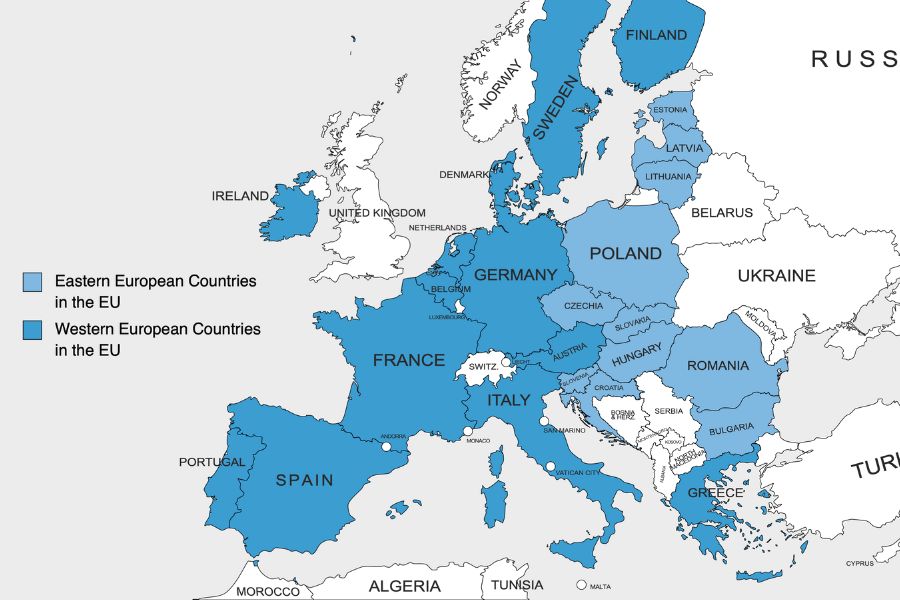
5. What is the best country in Eastern Europe?
This is a really difficult question to answer as each country has something to offer. Just because Croatia is more visited than Romania doesn’t mean it’s less worth it. Travelling to Eastern Europe is a joy because often you will find amazing places you knew little about.
I have visited all the capitals and main cities in Eastern Europe, and Prague , Tallinn , and Dubrovnik are three of my favourites.
Perhaps my passion for eating the best Czech food in Prague keeps me returning time and again. It could also be because there are so many awesome things to do in Prague too.
As for my favourite country, I would have to say Slovenia. Gorgeous, with lovely capital beautiful nature, and fantastic food . and I love the Slovenian people.
Just don’t get Slovakia mixed up with Slovenia: Slovakia vs Slovenia – What is the difference?
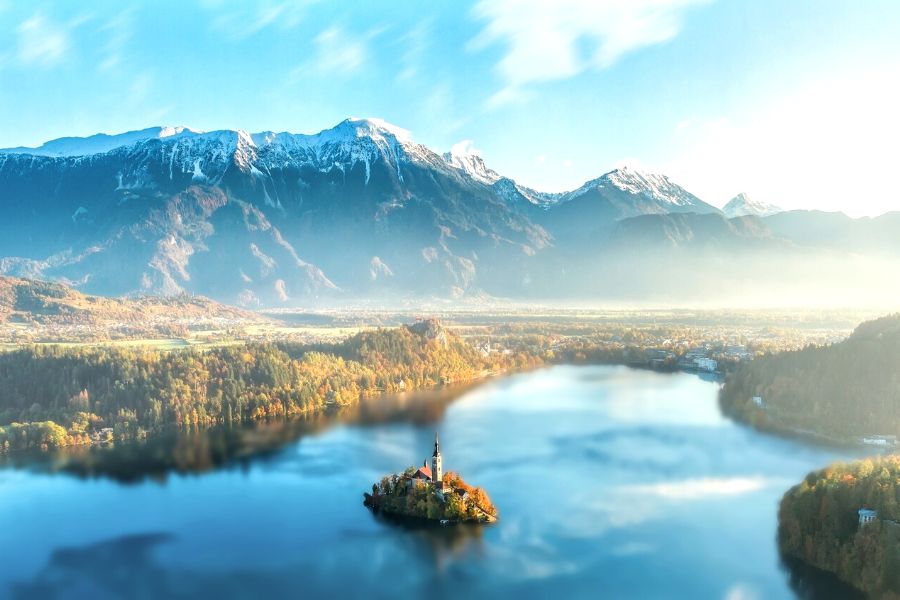
Make sure you get Travel Insurance before hitting the road. We recommend Heymondo & SafetyWing Travel Insurance.
Click here and get 5% off Heymondo from us!
6. Can I pay by card in Eastern Europe?
Yes, debit and credit cards such as Visa and Mastercard are accepted everywhere. American Express not so much, mostly in high-end shops, hotels, and restaurants.
The only time you’ll need cash is when buying fruit at local markets, souvenirs, and when paying at smaller restaurants. It’s always good to have cash on you and use the card when you can. Don’t forget that you might be charged an international fee for each payment unless you have a card that offers no international fees.
Read more about the debit card we use to travel the world with zero ATM or international fees. Or better yet, sign up for a WISE international bank account, a very wise move for sure.
Also, generally speaking, in bigger cities and capitals in Eastern Europe, more people pay by card than in smaller villages.
There are plenty of ATMs to withdraw money, but ALWAYS use official bank ATMs and avoid EURONET ATMs – they are scams and you will get the worse possible exchange rate.
My friend was travelling to Eastern Europe and decided to take a lot of cash out in Prague in Euros – lost so much money as the ATM charge them really high fees.
Avoid Euronet ATMs. And if you must use one, then ensure you select to withdraw cash in the currency of the country you’re in, NOT in your home currency. If you do that, you’ll get a terrible exchange rate as I mentioned above.
7. Do people speak English in Eastern Europe?
Yes. The majority of the younger generation in Eastern Europe has learned English as a second language.
The opinion that nobody speaks English in Eastern Europe is very dated and it is one of the common misconceptions about Eastern Europe.
Of course, the ability to speak English varies between the countries in Eastern Europe, but when in doubt, find someone under 40 and the chances are they will speak English.
If they don’t, please note that the majority of people in Eastern Europe do speak 2-3 or even 4 languages, English just might not be one of them for the older generation. If you know German, you might also try it, especially in the Czech Republic, Poland, Slovakia, and Croatia.
And, Russian was commonly taught in the former Soviet countries (Estonia, Latvia, Lithuania, Ukraine etc).
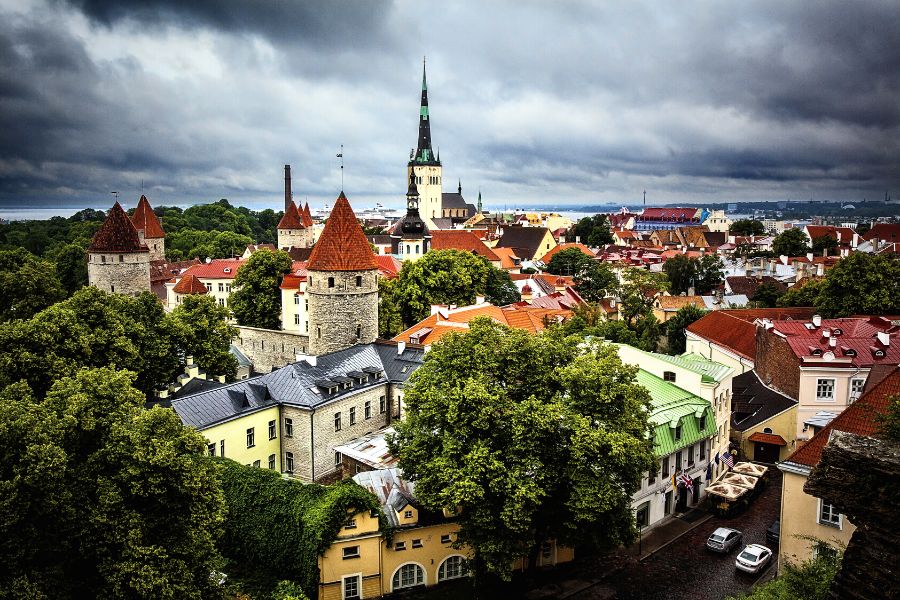
- 🔥 Hot Tip: Book accommodation in advance on Booking.com
- 🎟 Book your tickets online: We recommend Viator and GetYourGuide
- 🔋 Stay charged: This Belkin Power Bank is essential!
- 📸 Join a Group Tour: Find some amazing Group Tours here
- ✅ Get Connected with an eSIM: Fast, easy and affordable! View easy eSIM options here
8. Do Eastern European countries use Euro?
Just because countries are in European Union, it doesn’t mean they use Euro. We wrote this dedicated post about the countries in Europe that use the euro to explain this a little more.
Here is a quick list and map of countries in Eastern Europe that use the euro as their main currency.
There are 7 countries in Eastern Europe that use euros as their currency:
- *Montenegro (not in the EU, but use Euro)
- *Kosovo (not in the EU, but use Euro)
And there are 6 countries in Eastern Europe and the EU that do not use the euro:
- Bulgaria – Bulgarian lev (will adopt Euro in January 2024)
- Croatia – Croatian kuna ( will adopt Euro in January 2023 )
- Czech Republic – Czech koruna
- Hungary – Hungarian forint
- Poland – Polish złoty
- Romania – Romanian leu
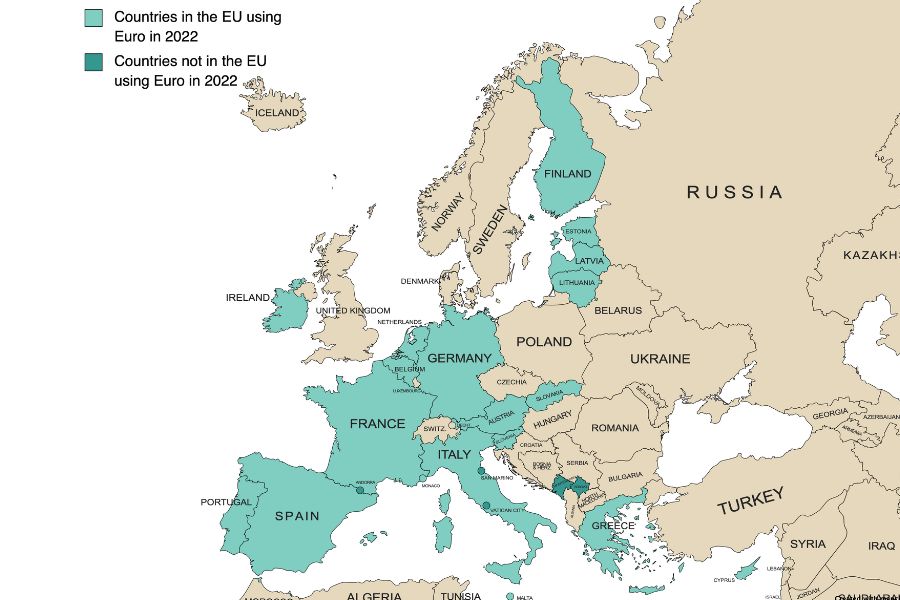
While euro is not their currency, you might find some places accept euro for payment, especially in Prague, Budapest, or Dubrovnik. Usually, you pay a lot more in euros than when paying in local currency.
Countries in Eastern Europe and not in the EU that do not use the euro, but they own currency:
- Albania – Albanian lek
- Belarus – Belarusian ruble
- Bosnia and Herzegovina – Bosnia and Herzegovina convertible mark
- Moldova – Moldovan leu
- North Macedonia – Macedonian denar
- Russia – Russian ruble
- Serbia – Serbian dinar
- Ukraine – Ukrainian hryvnia
Best 10-day itinerary for Eastern Europe
One of the most common questions is where to go when travelling to Eastern Europe.
Since people have 2 weeks, here are a few suggestions for Eastern Europe trip itinerary, or more specific a 10-day itinerary for Eastern Europe.
I have included an itinerary for 10 days across the Baltics, Balkans, Central Europe, and more of the East part of the Balkans.
You can connect these cities with public transport (bus or train) and can add some day trips as well, but as it’s based on 4 – 5 cities in 10 days, so it can be fast-paced.
- Best of Central Europe 10-day Itinerary: Prague – Krakow – Bratislava – Budapest (add Ljubljana)
- Best of Baltics in 10 days: Tallinn – Riga – Vilnius – Warsaw – Krakow
- Best of Eastern Europe in 10 days: Budapest – Ljubljana – Split – Sarajevo
- 10 Days across the Balkans Itinerary: Belgrade – Sarajevo – Mostar -Dubrovnik
- Eastern European itinerary from Black to the Adriatic Sea: Bucharest – Sofia – Skopie – Tirana – Kotor
Interested in joining a group? Book one of these group tours
If you plan to visit multiple countries in Europe, we’ve got you covered.
Check out our comprehensive city guides below where we recommend the best places to visit, top attractions, day tours and best places to eat!
Don’t miss our EUROPE CITY GUIDES
- ROME 3 Days Itinerary
- VENICE 1-Day Itinerary
- FLORENCE 2 Days Itinerary
- AMSTERDAM 3 Day Itinerary
- PARIS 4 Days Itinerary
- BUDAPEST 2 Days Itinerary
- PRAGUE 2 Days Itinerary
- LONDON 1 Day Itinerary
- ATHENS 1 Day Itinerary
- BERLIN 2 Days Itinerary
- VIENNA 2 Days Itinerary
- LISBON 2 Days Itinerary
We’ve got more helpful posts for you!
You may be interested in these 13 things to do in Bratislava, Slovakia and these Best Restaurants in Bratislava are worth a visit.
For the Czech Republic, here are the best things to do in Prague . Don’t miss tasting the best Czech food in Prague— our top 6 places .
Travel Tips for Europe
We have many travel guides and tips for Europe— an incredible continent!
Are you travelling on a budget? These ten cheapest European countries will help you plan an itinerary that lets you see as much as possible while there.
Furthermore, if you plan to travel long-term (or at least until the money runs out), these 21 cheapest countries to visit will help you make your hard-earned dollars stretch a bit further.
Delicious cuisine can be enjoyed across Europe, and our food map of Europe will inspire your culinary journey.
For food lovers, don’t miss our top 10 best countries for foodies, a couple of them are located in Europe.
Here are 8 things to know about travelling to Eastern Europe and it’s good to know these 7 misconceptions about Eastern Europe too.
These top 6 travel hacks to save money are great to read when planning your travels.
You’ll need to stay connected while travelling in Europe. We recommend eSIM. It’s easy, reliable and affordable. View eSIMs for individual European countries , or consider a regional eSIM for Europe (which covers 39 countries).
If your travels in Europe are part of a much larger global adventure, then a Global eSIM may be the answer. It connects you in 124 countries , offering data-only eSIM and data/call/text eSIM . The Global eSIM has been a game-changer; we couldn’t imagine travelling without it now.
If you want to travel with like-minded travellers, consider joining a group tour. View the best deals on group tours in Europe .
Finally, check out our travel resources page for the best websites, tools and products we use to travel the world.
View the travel gear we use on the road, and don’t miss our best-ever travel tips compiled from more than twenty years of experience.
Travel Planning Resources
✈️ Flights : We use Skyscanner to book cheap flights worldwide.
🏨 Accommodation : Booking.com is our preferred platform for booking hotels and accommodation. We use Vrbo to book apartments and long-term stays.
🏥 Travel Insurance : We recommend Heymondo ( Get 5% off Heymondo) & SafetyWing
🚌 Transportation : Trainline is the best website to reserve trains. We use Omio to book transport worldwide. For travel in Asia, we use 12Go.
🚘 Car Rental : We use DiscoverCars to book rental cars worldwide.
👫 Group Tours : G Adventures OR compare multi-day tours worldwide with Tourradar .
📸 Day Tours & Trips : GetYourGuide & Viator are the only two platforms you need.
📚 Lonely Planet: The Best Range of Travel Guides & Ebooks , and FREE Shipping! (use code RACHELDAVEY10 for a 10% discount)
🎒 Luggage : Osprey Farpoint 40L Backpack or Samsonite Luggage Range.
🛄 What to Pack: Don’t forget your Universal charger and a good power bank . To help you pack the essentials, here is our ULTIMATE Packing List for all Travellers .
🐶 Become a House Sitter: Join Trusted Housesitters and enjoy FREE accommodation worldwide. Use our invite to receive 25% off your new membership.
💰 Send Money Anywhere: WISE & Revolut are the best online accounts that let you send money, get paid, and spend money internationally. Both are so easy to use and way cheaper than any bank transfer.
📶 Stay Connected: Airalo eSIM allows you to get connected the moment you land at your destination, and you can avoid those expensive data roaming charges. We LOVE this product! Use promo code NOMAD15 for 15% off ALL eSIMs (new Airalo users only) OR use NOMAD10 for 10% off ALL eSIMs (for existing Airalo users)
✅ Check out our Travel Gear and Travel Resources for more valuable tips to save you money!
Tasty Food Adventures

Amsterdam Best Food Tour – 9 Delicious Food Stops

Where to Eat in N’Djamena Chad – 3 Best Choices

20 Best Hanoi Restaurants – Hanoi Food Guide
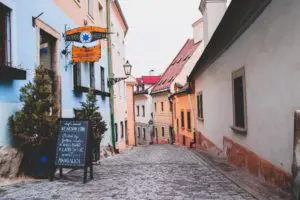
Best Restaurants in Bratislava Slovakia 2024
See all Food Adventure blogs
Expert Travel Guides

Samoa Is Our Final Country To Visit All The Countries In The World!
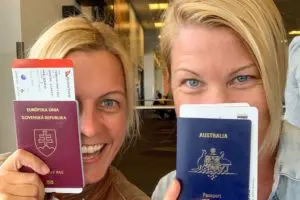
Final 9 countries remain to visit every country in the world!
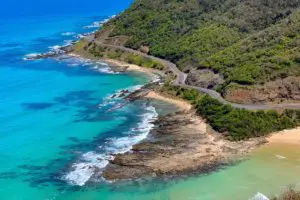
20 Must See Places on the Great Ocean Road

Road Trip in Oman: The Best 7 Day Itinerary
See all our Travel Guides
Trusted Hints & Tips

How Do I Choose My Next Trip? 3 Important Factors

Our Best Travel Tips from 20+ Years of Travel

Why you Should Use Airbnb When you Travel – 11 Top Reasons

Backpack vs Suitcase – Which One Should You Choose?
See all our expert Hints & Tips
2 Comments . Leave new
Great tips. Inspiring confidence. Thanks 🙂
Great information! Thank you!
Leave a Reply Cancel reply
Your email address will not be published. Required fields are marked *
Post Comment
Escape The Crowds: 10 Eastern European Countries For Your Summer Holiday
Skip the crowds and high prices of Western Europe by spending the summer in one of these incredible Eastern European destinations instead.
While most people are heading to popular destinations in Western Europe like Italy and Portugal for their summer holidays, there are stunning destinations further east without the crowds. In Eastern Europe, there are plenty of countries with gorgeous landscapes, dreamy beaches, and delicious cuisines. The best part is these countries are much less popular among tourists, so prices remain affordable in comparison to Western Europe.
10 Bulgaria
Bulgaria is an extremely underrated summer destination. Nestled in Eastern Europe between Turkey, Romania, and Serbia, Bulgaria has diverse landscapes and friendly locals. Most travelers will start their trip in the capital city of Sofia, where they can partake in a free walking tour and sample the local delicacies like Banitsa and Shopska Salata. Then, they can rent a car and drive into the mountains to stay at the Rila Monastery and experience the tranquility of Bulgaria’s nature. Bulgaria also has beautiful beaches on the Black Sea and lots of fantastic hiking trails to explore.
Albania is not officially an Eastern European country by the United Nations standards, but it is one of the best places in Europe to visit during the summer months that is yet to be discovered by tourists. The beautiful capital of Tirana is lively, affordable, and rich in historical architecture. After a few days in the capital, travelers can visit the picturesque city of Berat on the Osum River and swim on the beaches in Himarë. The best hike in the country is known to be Valbona to Theth, a scenic day trek through the mountains.
Related: These Scenic Romania Towns Will Take Your Breath Away
Romania is a vast country by European standards, and it has lots of experiences to offer travelers for a fraction of the price of Western Europe. The capital city Bucharest boasts beautiful architecture, cobbled streets, and lots of bars and restaurants to choose from. The forested area of Transylvania is one of the top places to visit in the country. This is where travelers will find the historical monument Bran Castle, better known as Dracula’s Castle.
The Czech Republic is a destination full of incredible architecture and history. The capital city Prague is well trodden on the European backpacking route, but it still offers low prices for accommodation and food. The old town is a UNESCO World Heritage Site , and travelers can enjoy free walking tours, making it easy to keep costs down. Spend time in the city square, shop at the local markets, or photograph the picturesque and colorful baroque buildings.
Located further east than bustling travel hubs like Paris or Amsterdam, the capital of Hungary is a must-visit summer destination when exploring Europe. Budapest is a lively city with the Danube River running through it, creating two distinct sides, Buda and Pest. They are connected by a 19th Century bridge allowing travelers to explore both sides easily within a few short days. The historic Buda Castle and Széchenyi Thermal Baths are two of the top attractions to enjoy in this European gem.
Poland might not be the first destination that comes to mind when planning a European summer holiday, but this Eastern European nation is full of historic cities with complex pasts. Two of the best cities to spend time in while visiting Poland are Kraków and Warsaw. Warsaw’s old town was destroyed during World War II but has been meticulously rebuilt to reflect the once original architecture. In Kraków, there is plenty to do in the way of the nightlife, plus this is the jumping-off point for a tour of Auschwitz, which is an important stop on any trip to Poland.
Slovakia is a small Eastern European nation that flies under the radar despite its many beautiful castles and cathedrals. Slovakia is landlocked between Ukraine, Poland, Hungary, and Austria, making it an ideal place to spend a few days while inter railing through various cities in Central and Eastern Europe. Slovakia has well-preserved, impressive castles, such as Bratislava Castle and Devin Castle, that travelers can explore to learn more about the country’s history. Slovakia also has lots of incredible nature in national parks like Slovak Paradise National Park and Low Tatras National Park.
Moldova is a former member of the Soviet Union and is an Eastern European country that gets little attention but has much to offer travelers. Moldova is located between Ukraine and Romania; the capital city is Chișinău which features Soviet-era architecture and a beautiful neoclassical Nativity Cathedral. Travelers can learn more about Moldova by visiting the National Museum of History before venturing out into the country’s rocky hills or sprawling vineyards.
Serbia’s capital, Belgrade, is a southeastern European city with lots of beautiful buildings and delicious dining options. The most important landmark in the city is the fortress called Beogradska Tvrđava. Belgrade is often referred to as “the city that never sleeps” and is the perfect destination for staying out all night at lively parties. Float on various over-water clubs on the river in the city or head to the Bohemian street of Skadarlija for a good time.
Related: This Is What It's Like To Visit Serbia (And Why Socialites Will Appreciate It)
1 Lithuania
Lithuania is one of Europe’s three Baltic countries, located on the east coast of the Baltic Sea. It’s got all the perks of traveling Eastern Europe, including affordable prices, beautiful baroque architecture, and a well-preserved old town in the capital of Vilnius. The medieval old town has romantic cobbled streets and offers a chance to wander freely and appreciate the impressive design of Vilnius Cathedral and St. Anne’s Church. Take a day trip to Trakai Island Castle on Lake Galvė for a chance to explore the natural beauty of Lithuania’s countryside.
See Europe as the Europeans do this summer with these pro tips | Cruising Altitude
Americans are heading to Europe for vacation as much as ever these days, and that means the typical tourist spots like Venice, Paris and London are sure to be crowded this year. But, because this is Cruising Altitude, we’ll look at the aviation angle first.
First and foremost: If you’re really determined to go to Europe this summer and haven’t booked yet, stop reading now and get on it.
“I’ve never seen a year like this … We’re at the point where there’s no more availability,” Brigitte Armand, President of Eurobound , a tour organizer that specializes in European packages, told me. “Book as quickly as possible.”
How to get around
According to Armand, trains are generally a great way to get from place to place within Europe, but for farther-flung stops, the continent’s network of low-cost airlines offers travelers a reliable alternative.
Learn more: Best travel insurance
“Don’t think of one airline as being your network and entry point within Europe,” Laura Lindsay, public relations director at online booking platform Skyscanner told me.
She said if you’re flying to Europe from the U.S., you may well rely on a large network carrier like British Airways, KLM or Lufthansa to get across the Atlantic and then book your intra-European flights separately.
“You’re suddenly opening up Europe in a different way if you search for different airports and multiple airlines,” Lindsay said. “It’s pretty straightforward to get around, so don’t feel put off by jumping through a few different countries or trying a few different destinations.”
Tips for European airlines
According to Lindsay, European low-cost carriers like Ryanair, Easyjet and Wizz Air often have stricter baggage policies like American ULCCs Spirit and Frontier.
“(The) top tip would be always make sure you understand the luggage allowance that is part of your ticket,” she said. “More often than not, don’t book the basic fare without checking.”
It’s also a good idea to be flexible with your airports and dates of travel if you want to get the best deals on those shorter flights.
“You’ll get a number of places that have more than one airport,” Lindsay said, noting that Skyscanner has a tool that allows travelers to search for flights to or from nearby airports when choosing a destination. “Just getting a map out and actually looking at where exactly you want to travel and where the nearby airports are.”
Armand added that if you take the train instead, you may need to secure a reservation in advance, particularly for some of the more tourist-heavy routes like panoramic trains in Switzerland.
Last week's Cruising Altitude: There was no Golden Age of flying. We're in it now.
Where to go
If you really want to summer like a European, you should consider places a little more off the radar for most Americans.
“Albania is somewhere that broke through a couple of years ago as somewhere that people recognized as offering a huge value for money,” Lindsay said. “Sarajevo is reporting its busiest April on record for travelers.”
Armand said it can also be a good idea to try different parts of countries that are already popular if you want a more authentic, less crowded experience.
“We recently arranged a whole trip for some clients in the Abruzzo region of Italy,” she said. “The Abruzzo region, it’s on the Adriatic, people don’t know this region, and I think this is the first time ever we put together a package to get to that region.”
Data from Skyscanner shows that some destinations in Europe are picking up in popularity with travelers on the continent. Here are some of the trends that are bubbling up year over year from 2023 to 2024.
- Ljubljana, Slovenia, saw a 188% increase in searches from Spanish travelers
- Tromso, Norway, saw a 130% increase in interest from Italian holidaymakers
- Dusseldorf had a 122% spike in interest from Brits
According to Armand, the best last-minute availability seems to be in eastern Europe, like Bulgaria and Poland.
“There are some good deals there perhaps, even the Czech Republic I’m finding some decent space,” she said.
So go on, get packing.
Zach Wichter is a travel reporter for USA TODAY based in New York. You can reach him at [email protected].
We've detected unusual activity from your computer network
To continue, please click the box below to let us know you're not a robot.
Why did this happen?
Please make sure your browser supports JavaScript and cookies and that you are not blocking them from loading. For more information you can review our Terms of Service and Cookie Policy .
For inquiries related to this message please contact our support team and provide the reference ID below.

The best spas in Eastern Europe for an affordable, yet luxurious, break
I ndulgence, rest and relaxation – there’s a lot to love about a spa experience , whether you’re treating yourself to some much-needed self-care or celebrating with friends or family members.
But spa trips in the UK can easily spill into three figures, with the price of treatments notching the cost up even higher. So with a whole host of incredible (and affordable) spas to discover in Eastern European cities , it’s worth considering how you can incorporate a spa experience into your next holiday.
Prices tend to be significantly lower across Eastern Europe , with many hotels offering packages, and budget airlines running flights daily. The Hungarian capital of Budapest has proven to be particularly popular for low-cost luxe spa breaks, but there are plenty of other cities to explore across the region, whether you’re watching your spending or have a little more cash to splash.
From “beer spa” sessions to Finnish saunas , mineral soaks to luxury mud wraps, we’ve selected some of the best spas across the continent for all tastes.
Nové Lázně Health Spa
Mariánské lázně, czech republic.
Named as one of the Great Spa Towns of Europe, Mariánské Lázně is renowned for its 100 mineral springs that boast high levels of carbon dioxide and iron. Famous philosophers and royalty are reported to have stayed in the historic five-star Nové Lázně , which dates from 1896. It’s arguably one of the prettiest spa hotels in the region, with its distinctive dandelion-yellow exterior and neo-Renaissance aesthetic. The spa remains fit for royalty, with beautiful tiling and marble columns in the Roman bath, which is a spa-lover’s dream. There’s also a sauna complex consisting of a Finnish sauna, steam room, cold plunge pool, foot rock pools and a whirlpool. And with an eye-popping range of medical and wellness treatments on offer, from oxygen therapy to mud wraps, you’re guaranteed to float out. A three-hour pass to the Roman baths costs 800 Czech Koruna (£27) without treatments.
Széchenyi Baths
Budapest, hungary.
You may recognise Budapest’s Széchenyi Baths from the famous images of men playing chess in its mineral rich waters over the years, an activity that is an integral part of Hungarian culture. Thankfully, there’s plenty of room for everyone, whether you’re partial to the checkerboard or not. Built in 1913, Széchenyi has been an integral part of the city for over a hundred years and is one of the largest spa complexes in Europe. With 18 baths, including three grand outdoor pools, saunas and steam rooms, a visit to Széchenyi is a highly social affair. The baths also offer a daily 45-minute Beer Spa session, in which visitors relax in wooden tubs of warm thermal water while natural beer ingredients (hops, malt and yeast) are poured in containing a whole host of positive qualities to boost the skin and circulation. Fancy something a bit livelier? The weekly Saturday evening “Sparty” combines banging tunes, top-class lasers and visuals for a party vibe with a twist. A day-entry ticket to the spa costs 10,500 Hungarian forint (£23.50) per person from Monday to Thursday, rising to 12,000 Hungarian forint (£26) on Fridays and weekends. Elsewhere, tickets to the Sparty start from €59 (£50.50) for basic entry.
Therme Bucharest
Bucharest, romania.
As the largest spa in Europe, Therme Bucharest is the daddy when it comes to wellness experiences. Opened in 2016, this spa goes big, with around 40,000 square metres of wellness, leisure and spa space set over two floors. Packed with plants, 10 pools, 10 saunas and the largest urban beach in Europe, this is a top-notch spa experience that you can enjoy with a cocktail in your hand. It’s also home to 16 water slides if you fancy an adrenalin hit before your mineral soak. A one-day, access-all-areas pass costs £29 Monday to Thursday, rising to £32 for entry Friday to Sunday, including school holidays. Read our full guide to Therme here .
Gellért Thermal Bath
Probably the most famous Art Nouveau baths in Hungary, Gellért dates back to 1918 and is pretty as a picture, with mosaic-covered terraces, turquoise tiling, ornate statues and marble columns and balconies. There are 10 pools in total, including an outdoor wave pool and cold plunge pool, plus several geothermal pools containing water from the mineral hot springs. Three saunas and a steam room round up the main wellness offerings. It’s impossible not to be impressed by the main hall with its marble gallery and glass roof (you’ll need a cap to swim here, but these are available to purchase for £4), but if you’re not convinced, maybe the prices will do the job. Expect to pay 10,500 Hungarian forint (£23.50) per person for a daily ticket with locker usage (Monday to Thursday), rising to 12,000 (£26) on Fridays and weekends. A 45-minute “classic” massage costs 18,000 (£39), and there are towels, bathrobes, slippers and safes to hire. You can also hire a “cabin”, which is a small, private, lockable changing room to change and store your belongings, if you need more room.
Hotel Royal Spa
Velingrad, bulgaria.
Like to sweat? You’ve come to the right place. At Velingrad’s Hotel Royal Spa , you’ll find (deep breath) a Finnish sauna, a Himalayan salt sauna, an infrared sauna, a panoramic sauna, an aroma steam bath, a panoramic steam bath and a hamam. As Bulgaria’s biggest balneo-therapeutic (bathing in thermal and mineral waters) resort, the Hotel Royal Spa is also home to eight indoor and outdoor mineral pools, including Roman and Russian baths and a jacuzzi, all filled with healing waters. And, incredibly, a day pass to this wellness fun palace costs just 40 Bulgarian lev, a bargainous £17.50. Their long list of treatments is an absolute steal as well, with a 45-minute full-body massage clocking in at 65 Bulgarian lev (£28.50), while a full-body seaweed mask costs 80 Bulgarian lev (£35). Known as the spa capital of the Balkans, Velingrad is located in the mountains with plentiful hiking opportunities available and national parks to explore, making it an ideal alternative destination for outdoor enthusiasts.
Lukács Thermal Bath
For an authentic Budapest baths experience, head to Lukács , which is a favourite amongst locals. It’s also an excellent choice for those on a budget, with weekday entrance tickets costing just 4,800 Hungarian forint (£10.50), rising to 5,200 Hungarian forint (£11) on weekends and public holidays. For that, you can bathe in two indoor thermal pools, two large outdoor pools, enjoy a “sauna world” consisting of a Finnish sauna, infrared sauna, ice hut, Himalayan salt wall, a Turkish hammam, and a sun terrace for topping up your tan. Treatments include classic and premium massage, with the former costing just 10,000 Hungarian forint (£22) for 45 minutes, while hop-heads can also indulge in the Beer Spa session featured at Széchenyi Baths. Thermal baths have been enjoyed at this location as far back as the 12th-century by the Knights Hospitallers, making it a unique part of this historic city. Make sure you take your own towels, swimming cap and slippers, or you’ll have to hire them – and you’ll pay more to loan a single towel (6,000 Hungarian forint/£13) than you’ll spend on the entrance fee.
Hotel Copernicus Spa by L’Occitane
Krakow, poland.
Visitors to Poland’s picturesque second city of Krakow would do well to take a visit to the five-star Hotel Copernicus Spa by L’Occitane situated on one of the city’s oldest streets. Hidden in the subterranean depths of this beautiful 14th-century building, the gothic-style swimming pool and spa is small but mighty, with atmospheric vaulted ceilings and exposed brick and stone walls. In addition to the pool and sauna, guests can indulge in a series of massage treatments or facials, all using L’Occitane products. A 60-minute massage costs 350 Polish złoty (£69) and includes access to the pool and sauna, while a day pass is 550 Polish złoty (£109), which includes a 60-minute body or face treatment, a three-course lunch with a glass of champagne and unlimited access to the swimming pool and spa. Named after the astronomer, who was a regular visitor, the property also has beautifully restored frescoes and a rooftop terrace with city views, perfect for a pre-dinner aperitif.
Grand Hotel Kempinski High Tatras
Outdoor enthusiasts and those with a head for heights may well be familiar with the snow-capped peaks of the High Tatras , the highest range in the Carpathian Mountains. With 26 peaks over 2,500m, plus 100 alpine lakes, this is a wilderness-lover’s dream. Rest weary bones at the five-star Grand Hotel Kempinski . Situated on the shore of the glacial mountain lake Štrbské Pleso, the views over the surrounding mountains are nothing short of spectacular. And its spa, Zion, scooped the best hotel spa award in Slovakia in the 2023 World Spa Awards. Take a dip in the pool and float under crystal chandeliers before sweating it out in one of three saunas, a caldarium and a Kneipp pool. There’s also a fitness centre if you want to clock up some miles, while treatments include massage, facials and more. Access to the spa costs €90 (£77) per person.
Read our recommendations for cultural city breaks in Europe
From news to politics, travel to sport, culture to climate – The Independent has a host of free newsletters to suit your interests. To find the stories you want to read, and more, in your inbox, click here .

Ukraine war latest: Moscow's troops 'partially pushed back' from key town, Ukraine claims - as Putin says advance 'going to plan'
The Ukrainian president has cancelled visits to Spain and Portugal after Moscow's forces began a new offensive in the northeast of the country. Submit your question on the war for our experts to answer in the box below.
Wednesday 15 May 2024 14:45, UK
Please use Chrome browser for a more accessible video player
- Ukraine 'partially pushes back' Russian troops from Kharkiv town
- Russian offensive in Ukraine 'going to plan', Putin says
- Analysts say Russian offensive 'appears to have slowed'
- Situation there 'extremely difficult'
- Zelenskyy postpones all foreign visits due to 'situation in Kharkiv'
- US announces $2bn in extra aid for Ukraine
- Russia downs missiles launched at Crimea
- Analysis: Putin's 'baffling' reshuffle explained
- Live reporting by Lauren Russell
Ask a question or make a comment
Russia's offensive in northern Kharkiv has been the focus of much of the reporting on the war in Ukraine over recent days.
Sky News military analyst Michael Clarke has said the aim of Moscow is to draw Ukraine's forces to that area from the south, thus stretching the country's military resources.
And the latest analysis from US thinktank the Institute for the Study of War suggests that the pace of the offensive "appears to have slowed over the past 24 hours".
The group's experts said the pattern of Russian offensive activity in the area was consistent with assessments that Vladimir Putin's forces are prioritising the creation of a "buffer zone" in the international border area over a deeper penetration of Kharkiv Oblast.
It said several Ukrainian military officials reported yesterday that they believed the situation in Kharkiv Oblast was slowly stabilising.
"Drone footage purportedly from Vovchansk shows Russian foot mobile infantry operating within the settlement in small squad-sized assault groups, consistent with Ukrainian reports," the analysis added.
Two people have been killed after a Russian air attack on infrastructure in the Ukrainian city of Dnipro, the regional governor has said.
Serhiy Lysak said on Telegram that there were a number of people who had been injured, but gave no other details.
Dnipro is Ukraine's fourth-largest city, it sits on the Dnipro River and is around 300 miles from Kyiv.
Within the last hour, the UK's House of Commons addressed an urgent question on "Russia's aggression relating to Ukraine and the situation in Georgia".
Ukraine has come under vast assault from Russia in recent days, while in Georgia there have been riots as Russia asserted its influence to see a controversial "foreign agents" law passed.
The question was tabled by Jim Shannon, a Democratic Unionist Party politician, and answering on behalf of the government was armed forces minister Leo Docherty.
He noted today was "day 811 of Putin's 'special military operation' - an operation that was supposed to last three days, and he has failed in all his objectives".
But the minister went on to say the conflict was "evolving", and confirmed Russia's latest assault on the Kharkiv region, which was "almost certainly" a bid to "divert Ukrainian resources away from other parts of the front line and to threaten Kharkiv - the second-largest city in Ukraine".
He declared the UK would "not be diverted from our commitment to provide Ukraine with the support they need to prevail", pointing to the vast package announced in January and ongoing efforts to support the Ukrainian military.
Turning to Georgia, the minister said the government was observing events "with concern".
"The United Kingdom, along with our partners, is of course committed to the right of peaceful protest, as we are concerned by the introduction of the law" on foreign influence, he said.
He added that the UK was "a close friend of Georgia" and called for "calm and restraint on all sides".
Vladimir Putin has said Russian troops in Ukraine are "improving positions in all directions every day" and Moscow's military offensive in the country is "going to plan".
The Russian leaders comments come moments after the Ukrainian military claimed to have "partially pushed back" Russian forces in the town of Vovchansk in the Kharkiv region.
Moscow begun a pressing offensive on the Kharkiv region on Friday, after weeks of speculation that Russia was preparing to establish a new frontline there.
The towns of Vovchansk and Lyptsi appear to be the focus of the offensive, the latter of which could provide Russia with an opportunity to put Kharkiv under an artillery barrage, if captured.
Ukraine's forces have "partially pushed back" Russian troops from the town of Vovchansk in the Kharkiv region, the Ukrainian military has said.
In an update on the battlefield situation, the military said a total of 18 Russian assaults were repelled as active combat clashes rage on in north and northwestern parts of the town.
Our military analyst, Michael Clarke , said Ukraine was able to push back Russian advances by redirecting troops from military units in the south.
"Parts of their best brigades have been sent north to stem the tide," he said.
Earlier, the head of the Ukrainian police force in the Kharkiv region described the situation in the town of Vovchansk as "extremely difficult".
Oleksiy Kharkivskiy, Vovchansk's patrol police chief, said Russian forces were establishing positions inside the town.
With a second front opening in the war and Russia claiming control of several settlements, it's been an important week for the war in Ukraine.
Readers have been sending in their questions to our senior correspondents and military experts for their take on the changing battlefield environment.
Today, Lamas asked:
Given the impressive success of Ukraine to contain the operational degrees of freedom of Russia's Black Sea Fleet, why hasn't the West supplied the Ukrainian navy with ships in order to consolidate its dominance and pose a serious new challenge to the Russian army?
Military analyst Sean Bell had this to say...
Thank you for this interesting question.
At the start of the Russian ground offensive the Ukrainians scuttled their remaining naval warships to stop them falling into the hands of the Russia invaders.
However, since then the Ukrainians have proven very effective at using naval drones to target Russian Black Sea Fleet (BSF) vessels, forcing the remainder of the Russian naval forces to move east for their own protection.
This Ukrainian operational success has limited Russia's ability to conduct an amphibious assault against the Ukrainian port of Odessa, and has also provided vital freedom of movement on the western edge of the Black Sea to enable Ukraine to continue exporting its grain and provide vital revenues to help fund its war effort.
Late last year the UK Ministry of Defence announced that two Royal Navy minehunter ships were to be transferred from the Royal Navy to the Armed Forces of Ukraine (AFU) in a move to strengthen Ukraine's ability to operate at sea.
As the UK and Norway launched a new Maritime Capability Coalition, Defence Secretary Grant Shapps announced the procurement of two Sandown Class mine countermeasures vessels (MCMVs) by Ukraine through UK export finance.
Strengthening the Ukraine's maritime capabilities, in particular countering the threat from Russian sea mines, was expected to help restore Ukraine's maritime exports.
However, the only maritime access route into the Black Sea is through the Bosphorus straits, and that is controlled by Turkey.
Under the terms of the Montreux Convention of 1936 - which is still in place - the straits are treated as an international shipping lane, except that Turkey has the power to restrict warships' access to the Black Sea.
This restriction applies to warships from any country, whether or not they border the Black Sea, following Russia's invasion of Ukraine.
As a result, although the UK was prepared to bolster Ukraine's maritime capability in the near term, the Maritime Capability Coalition will be primarily focused on helping Ukraine rebuild its military maritime capability once the current hostilities have ended.
The international community retains the ability to donate maritime capabilities that are land (or air) transportable, but for now that will not include the UK Naval Minehunters that can only be delivered once access to the Black Sea is re-opened.
Antony Blinken has said the US remains "deeply concerned" about China's support for Russia's industrial defence base.
The US secretary of state told a news conference in Kyiv that China has so far held back from providing weapons to Russia, but it will continue to sanction against any enterprises that are involved in support for Moscow.
It comes a day ahead of Vladimir Putin's visit to Beijing, where he is keen to show he is suppotred by his most powerful political partner, Chinese President Xi Jinping.
Mt Putin's two-day visit is expected to highlight the pair's vaunted "no limits" partnership in defiance from pressure from the US over its invasion of Ukraine.
Late last month Mr Blinken was in China where he warned top diplomat Wang Yi against deepening military support for Russia.
Following on from our post below, Antony Blinken has just announced that the US will provide an additional $2bn (£1.5bn) in military funding to Ukraine.
Speaking from Kyiv, where the secretary of state is on a two-day visit, he said the additional fund would be able to provide weapons "today" and invest in Ukraine's industrial base.
"We are rushing ammunition, armoured vehicles, missiles and air defences to get them to the front lines," Mr Blinken said.
The secretary of state said the US was "intensely focused" on providing patriots and other forms of air defence systems, which Volodymyr Zelenskyy has persistently asked allies for.
He said support was coming from the US at a critical time for Ukraine - which is facing fierce levels of fighting in the north - as Moscow targets the region of Kharkiv.
When asked if he would support US weapons being used to strike places inside Russia, he said: "We don't encourage this, but Ukraine has to make the decision for itself."
US secretary of state Antony Blinken has today continued his visit to Kyiv.
He has been pictured visiting a drone production facility and witnessing packages of US aid being unloaded at a shipment facility in the city of Vyshneve.
Mr Blinken also accompanied Ukrainian foreign minister Dmytro Kuleba to a wreath laying ceremony at the wall of rememberance in the capital.
His visit coincides with the start of fierce battles in Ukrainian towns and villages, but Mr Blinken pledged unceasing US support for the country, during and beyond the war.
The Russian defence ministry claims its troops have taken control of three more settlements in Ukraine, the state-owned news agency RIA has reported.
The reports said two of the settlements - Hlyboke and Lukiantsi - are in the Kharkiv region and one - Robotyne - is in the Zaporizhzhia region.
Fierce fighting is currently ongoing in the Kharkiv region, particuarly in parts of Vovchansk and the border village of Buhruvatka.
The southeastern Zaporizhzhia region has also previously been targeted by Moscow due to its nuclear power plant.
Last month, the International Atomic Energy Agency (IAEA) warned that the power plant had been attacked three times since 7 April.
It said the attacks had led the world "dangerously close to a nuclear accident".
Sky News cannot independently verify these battlefield claims.
Be the first to get Breaking News
Install the Sky News app for free


COMMENTS
Eastern Europe can be challenging, but it boasts a wealth of attractions and an unbelievably low cost of living, making it a dream destination for the adventurous budget traveler. Highlights include the Baltic countries, Poland, Lviv, The Tatras Mountains, Prague, Budapest, Romania, Belgrade, Dubrovnik and Sofia.
Central Balkans Route. This itinerary begins in Budapest and takes you through some south-central European capitals. Budapest - There are few cities better to commence an Eastern European route in than Budapest. For this 2-week itinerary, plan to spend 4-5 days in the Hungarian capital.
Karlovy Vary. #20 in Best Eastern Europe Travel Spots. Less than 80 miles northwest of Prague, Karlovy Vary appeals to anyone looking for a rejuvenating vacation. The Czech Republic's famous spa ...
Rick's Best Three-Week Eastern-Central Europe Trip. Day 1: Fly into Kraków (sleep in Kraków) Day 2: Kraków (sleep in Kraków) ... This is probably the best time to travel here. Cities are great at this time of year, but some small towns get quieter and quieter the further off-season you get, and are downright deserted and disappointing in ...
Best places to travel in Eastern Europe. If you immediately think of Paris, Barcelona and other overwhelmingly popular western destinations when you hear the word "Europe," we're here to make a case for the absolutely stunning cities across Eastern Europe. ️ Many of these spots still fly relatively under the radar, so you could be on the forefront of experiencing the newest hot spots ...
This list includes several countries in the Balkans, and the east part of Southern Europe. We simply use the phrase "Eastern Europe" to refer to the east part of this continent. 1. Journey to the magical Rila Monastery in the mountains. Where: Rila Mountain, Bulgaria. Rila Monastery is no ordinary church.
Eastern Europe might not be everyone's number one travel destination. Communist-era buildings, the conflicts in the 1990s and border disputes in recent years have meant much of the region has been overlooked by potential tourists. But with its patchwork of pretty, pastel-colored old towns, incredible ancient history, exciting nightlife, and ...
Budapest. Approx. 3-5 days. From Sofia to Budapest, it's best to fly — it's about a 4.5-hour flight. Budapest is called the "Paris of the East," and it's one of my favorite cities in Europe. It has everything you'd want in a city (architecture, great nightlife, shopping, restaurants, etc.) and it's affordable.
2-Week Eastern Europe Itinerary. This suggested two week itinerary focuses on a lot of the same cities and destinations as above but with a few more awesome places sprinkled in. Additionally, a few more days are added to places like Prague and Budapest, where you can have more time to venture outside the city!
Sustainable Travel. A futuristic station will make Eastern Europe more accessible than ever. Nov 27, 2019 • 1 min read. Zaha Hadid Architects has won an open international contest to design a major new rail terminal in Tallinn, Estonia.
Tour you might enjoy: 1-Hour&30-min Budapest Evening or Night Sightseeing Cruise & Unlimited Prosecco. 4. Lake Bled, Slovenia. Lake Bled in Slovenia is one of the most picturesque destinations to visit in Eastern Europe. It's a great place to go to get away from the big city and enjoy a coastal getaway.
Getting from one place to another. Begin your 2 weeks in Eastern Europe trip in Greece, and take a flight from Athens to Zagreb that takes 3 hr 50 min to reach Croatia. The best way to get from Croatia to Albania is to fly from Zagreb, which takes 2 hr 39 min. To reach Montenegro, take a nonstop flight from Zagreb to Podgorica for 1 hr 10 min.
Budapest's parliament building is truly a major sight to behold. One of the better Eastern Europe travel tips is to go and relax in one of Hungary's many thermal baths. You will find many throughout the country. If you like quieter locations, Pecs is a gem of a Hungarian city with beautiful ruins and gorgeous scenery.
5. Riga, Latvia. Riga has become another "quick visit" city for travellers in the Baltics, thanks to its' cheap airlines connecting many travel routes from East to West and vice versa. Riga is a city worthy of at least two full days to explore and has a lot of charm on offer, especially in the Spring/Summer time. 6.
A comprehensive guide to the best places to visit in Eastern Europe, from the canals of St. Petersburg to the medieval castles of Romania. Learn about the weather, visa, transportation and culture of this enigmatic region, and get tips on when to go, where to stay and what to do.
Eastern Europe Itinerary. Eastern Europe travel is ideal for people with a curious mind in search of a fascinating Eurail train vacation! Visit Vienna's (Austria) splendid Hofburg Palace, wander around Prague's (Czech Republic) fairytale castle district and relax on Croatia's pristine islands off the coast of Split.
4. Orheiul Vechi, Moldova. Often overshadowed by more renowned European destinations, Orheiul Vechi is undeniably one of the must-see places in Eastern Europe. This archaeological complex, a breathtaking hidden gem in Eastern Europe, is set against the backdrop of Moldova's rolling landscapes.
Eastern Europe regions - Color-coded map — switch to interactive map. Belarus. Sometimes called "Europe's last dictatorship", Belarus is the largest remaining Soviet-style country in the world. Russia. The world's largest country, stretching from the Baltic Sea to the Pacific Ocean. Ukraine.
For travellers looking to explore past Paris, Barcelona, and London, Eastern Europe offers stylish capital cities with world-class museums, breathtaking natural beauty, and well-preserved architectural gems dating back to medieval times. Whether it's your first time travelling to Eastern Europe or your 50th, here are Culture Trip's suggestions for the 25 places you must see at least once ...
Check out all the places seen in this video: https://www.touropia.com/best-places-to-visit-in-eastern-europe/ Eastern Europe might not be everyone's number o...
Eastern Europe Tours & Trips. Discover an appealing variety of Eastern European tour packages that will take you to fascinating cities rich in history such as Vienna, Prague or Budapest. Meet new people and experience new cultures while visiting Poland, Croatia or Transylvania with our unique adventure packages.
In the wider sense, there are 20 Countries in Eastern Europe, and they can also be split into these four regions. Central Europe: The Czech Republic, Slovakia, Poland, Hungary, Eastern Europe: Ukraine, Belarus, Bulgaria, Romania, Moldova and the European part of Russia. The 3 Baltic states: Latvia, Lithuania, Estonia.
1 Lithuania. Lithuania is one of Europe's three Baltic countries, located on the east coast of the Baltic Sea. It's got all the perks of traveling Eastern Europe, including affordable prices, beautiful baroque architecture, and a well-preserved old town in the capital of Vilnius. The medieval old town has romantic cobbled streets and offers ...
1:28. Americans are heading to Europe for vacation as much as ever these days, and that means the typical tourist spots like Venice, Paris and London are sure to be crowded this year. But, because ...
Europe for Less. Our 2024 special report is filled with 27 trip ideas to make your vacation budget go further—without sacrificing luxury. May 3, 2024, 10:00 AM UTC. Share this article.
Bucharest. is the daddy when it comes to wellness experiences. Opened in 2016, this spa goes big, with around 40,000 square metres of wellness, leisure and spa space set over two floors. Packed ...
Ukraine says it is moving troops to new positions in two areas of the northeastern Kharkiv region, where Moscow is pressing an offensive. Meanwhile, Russia says its forces destroyed 10 long-range ...
Discussions are underway to strengthen the relationship between Jamaica and Saudia Holidays, the official tour operator of Saudia Airlines that operates flights to over 100 destinations in the ...